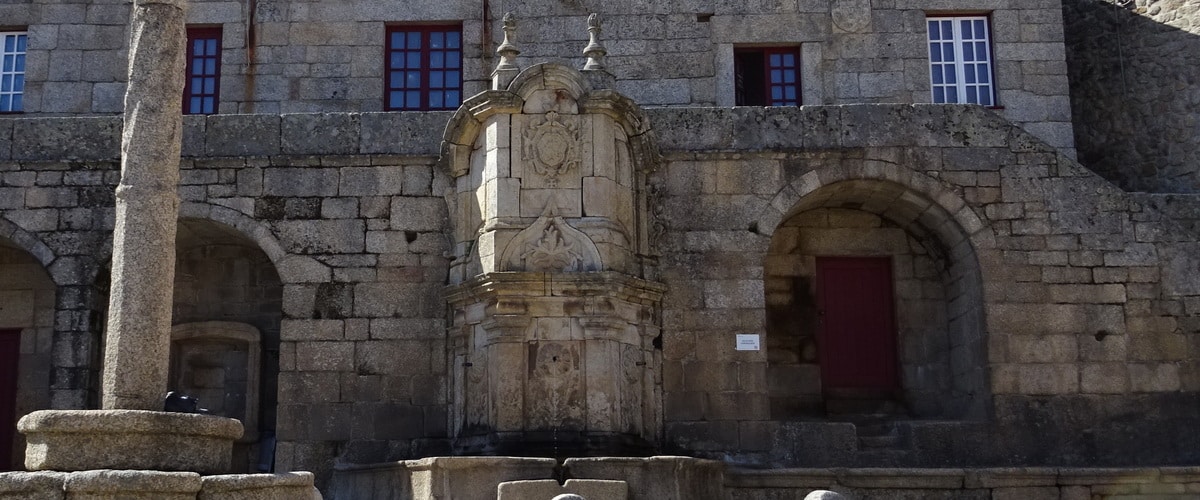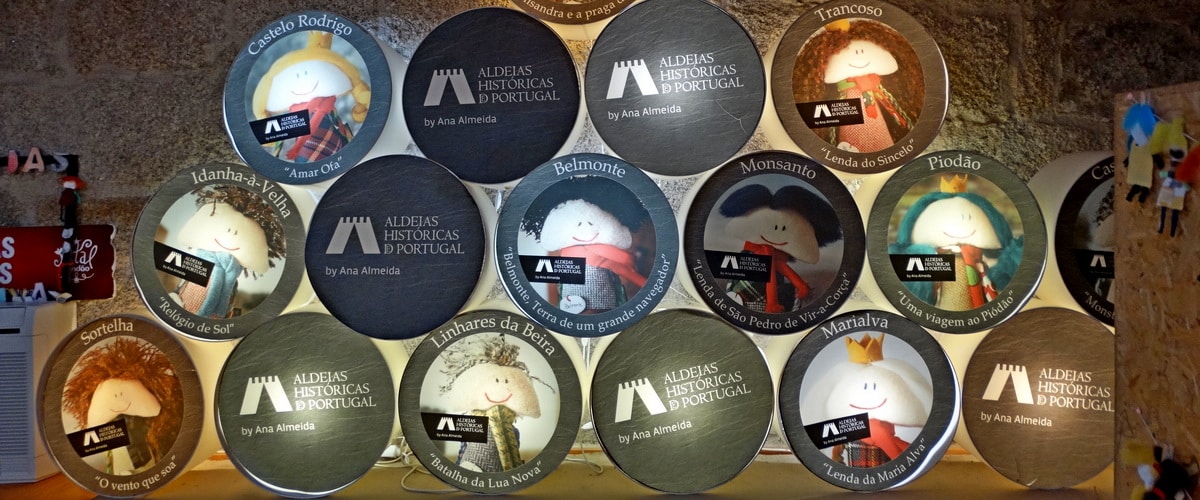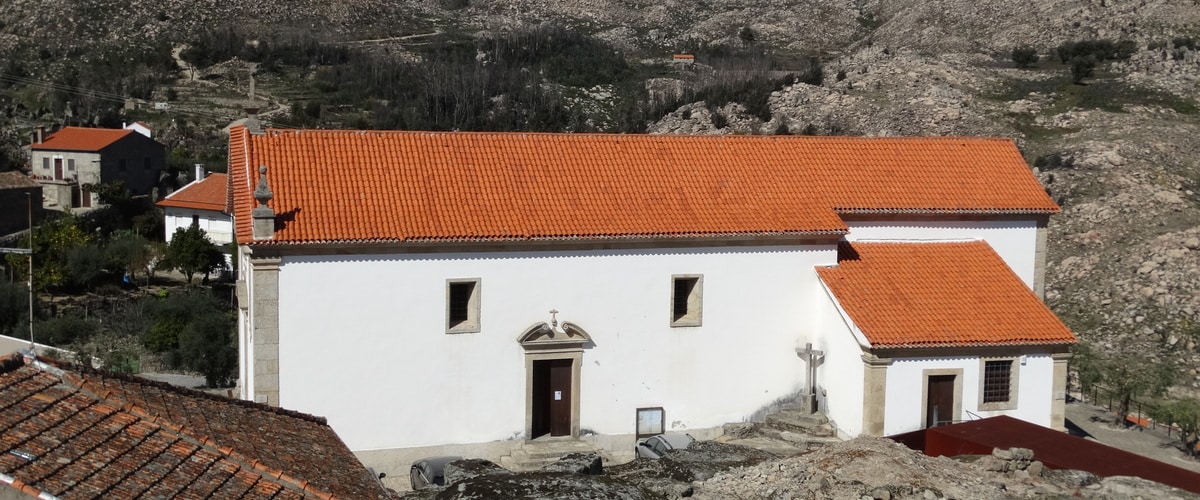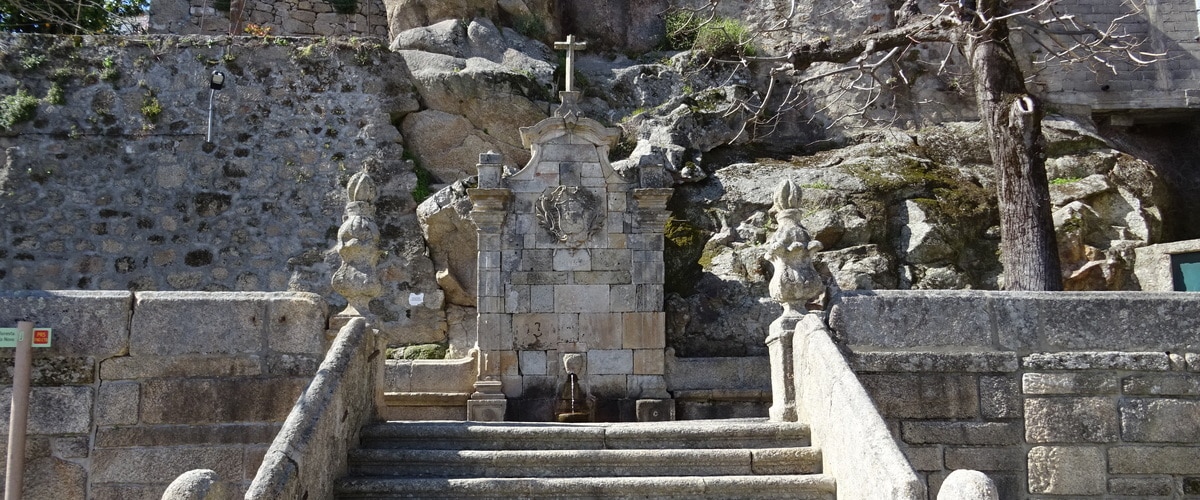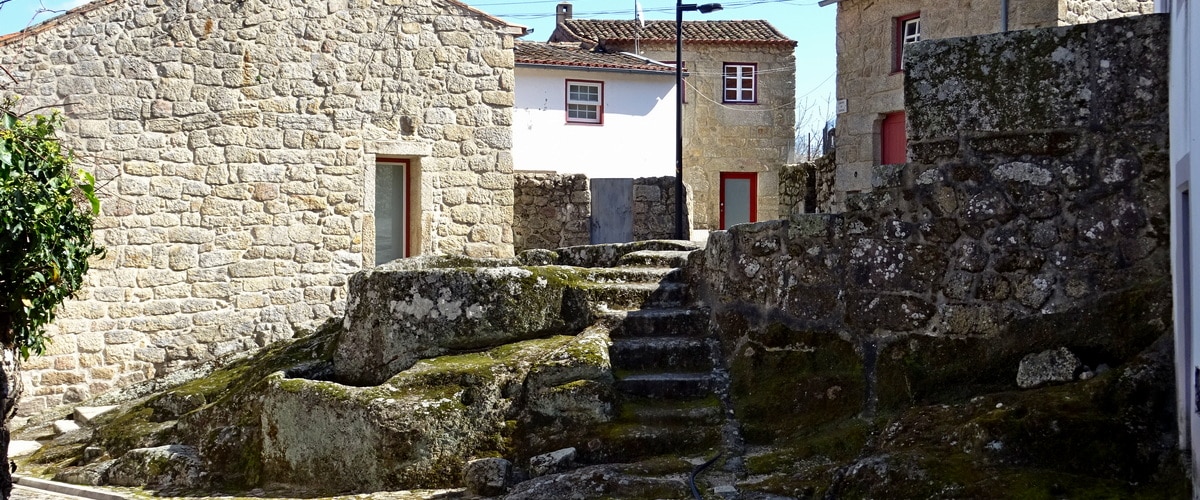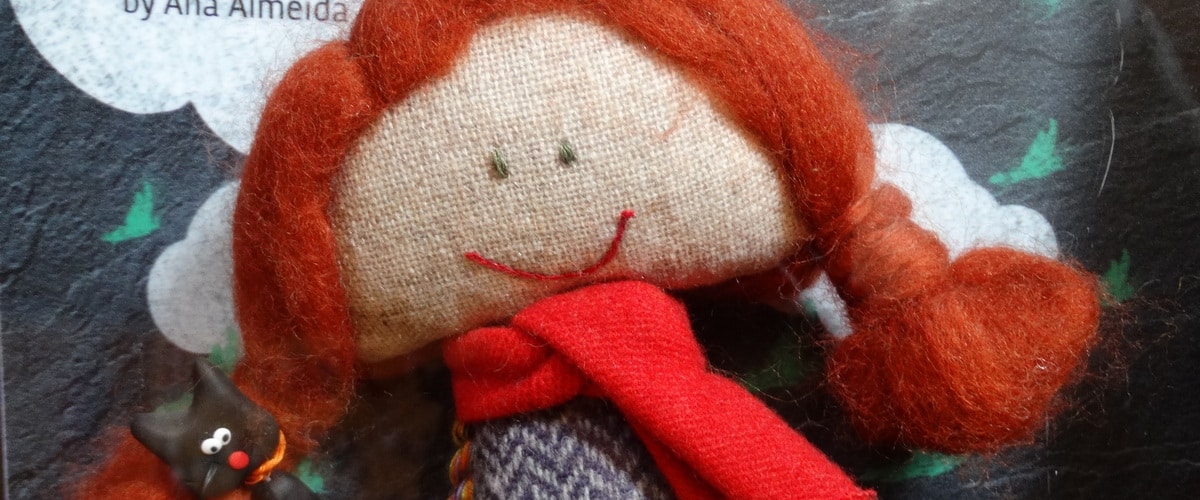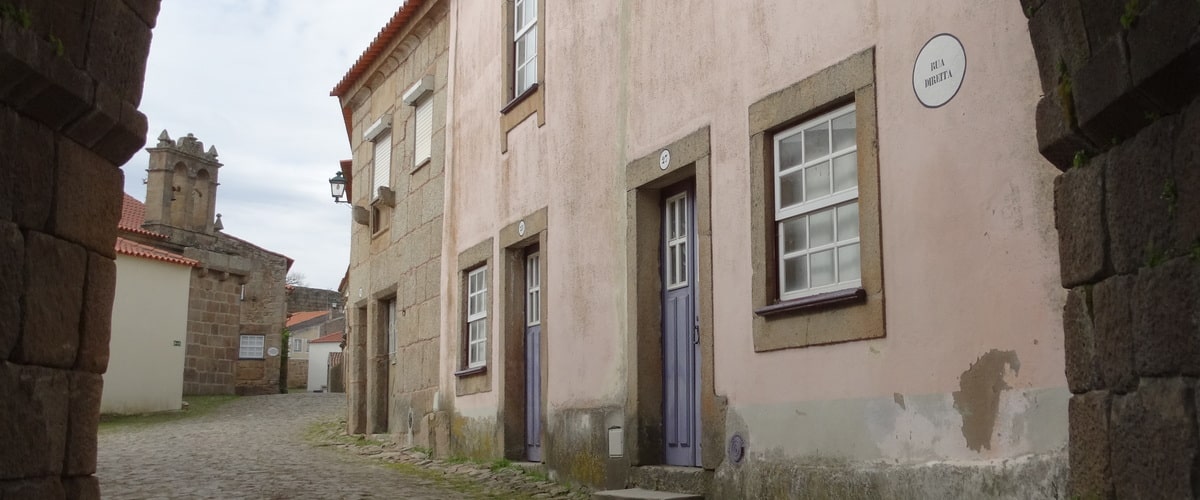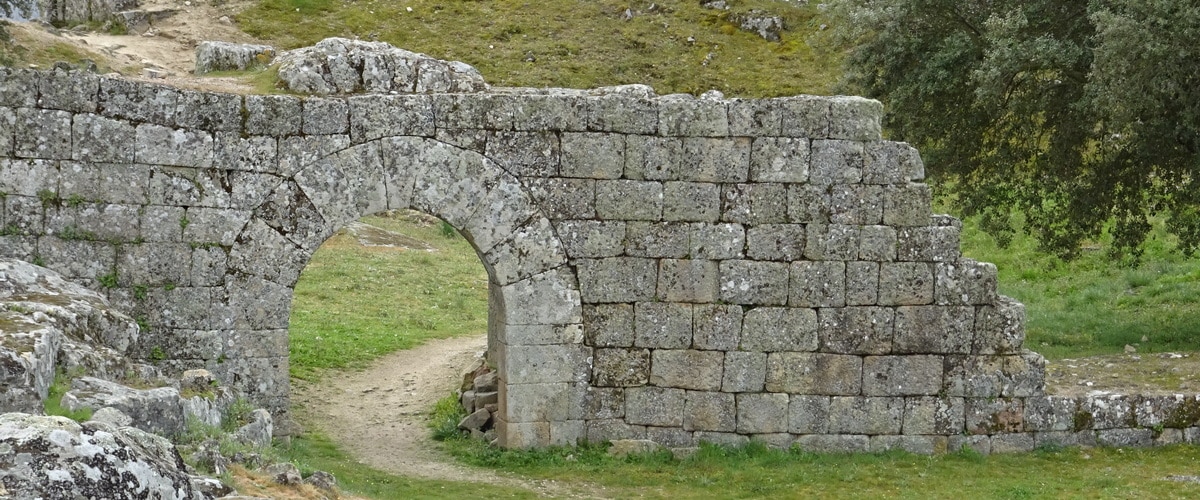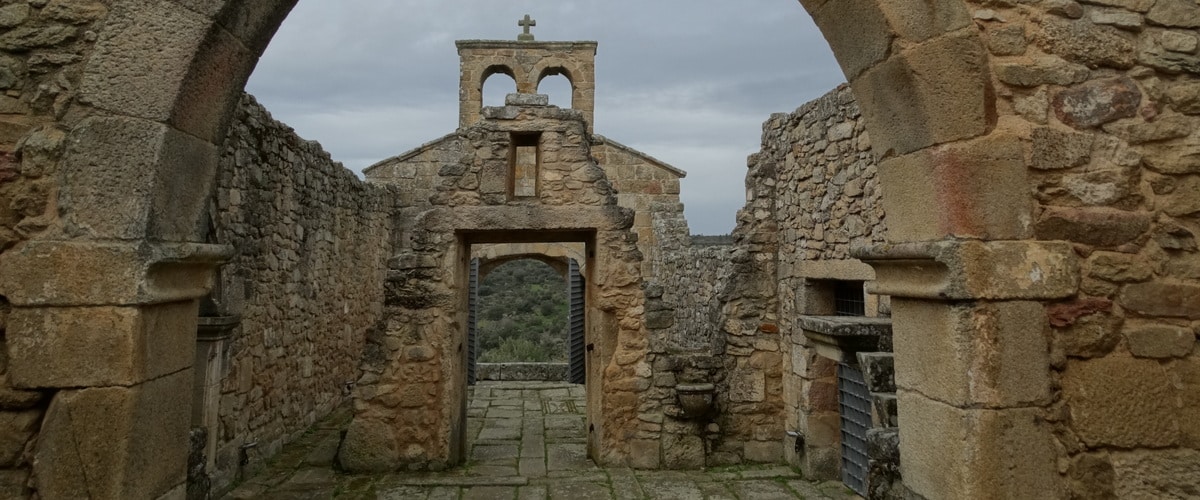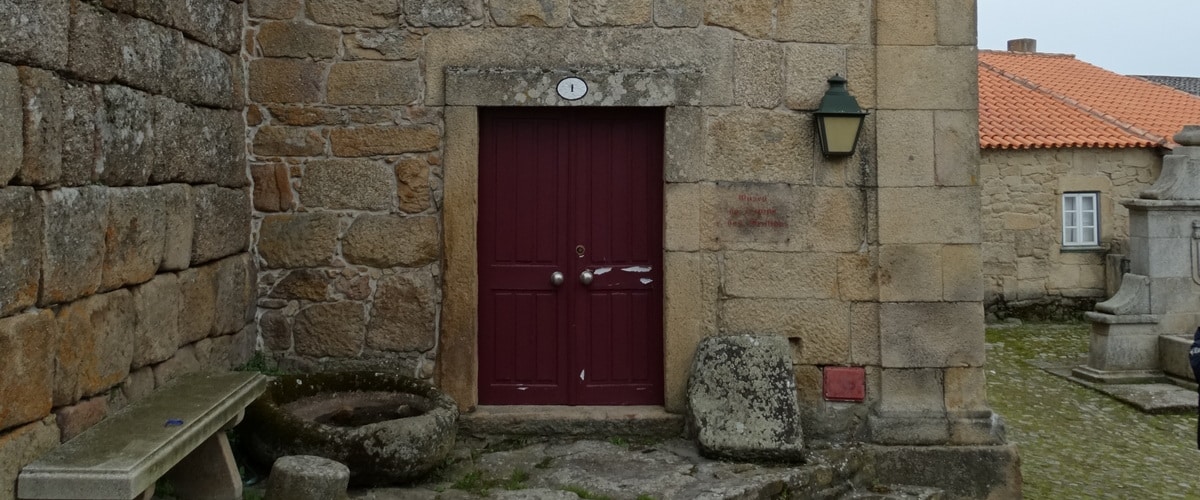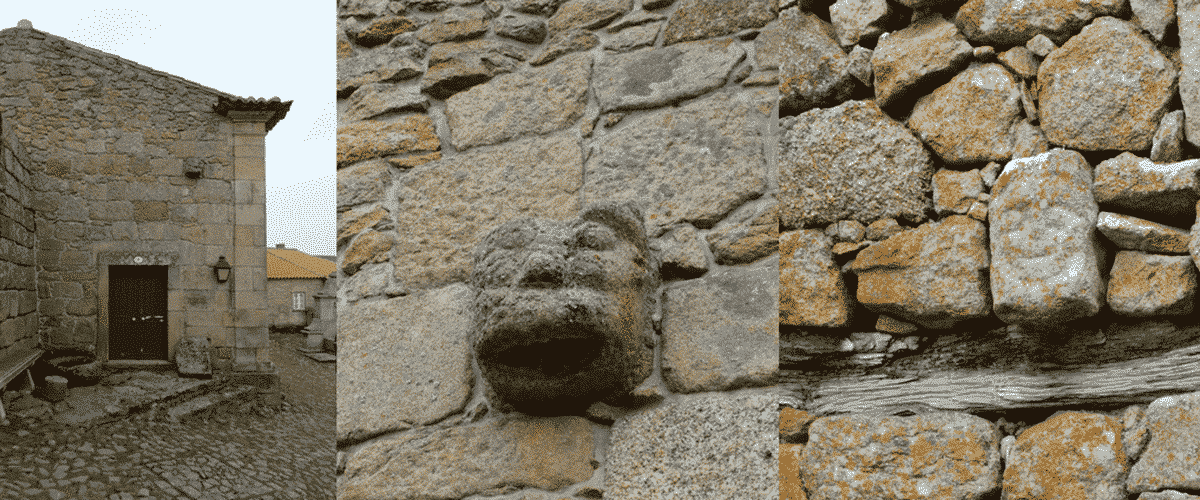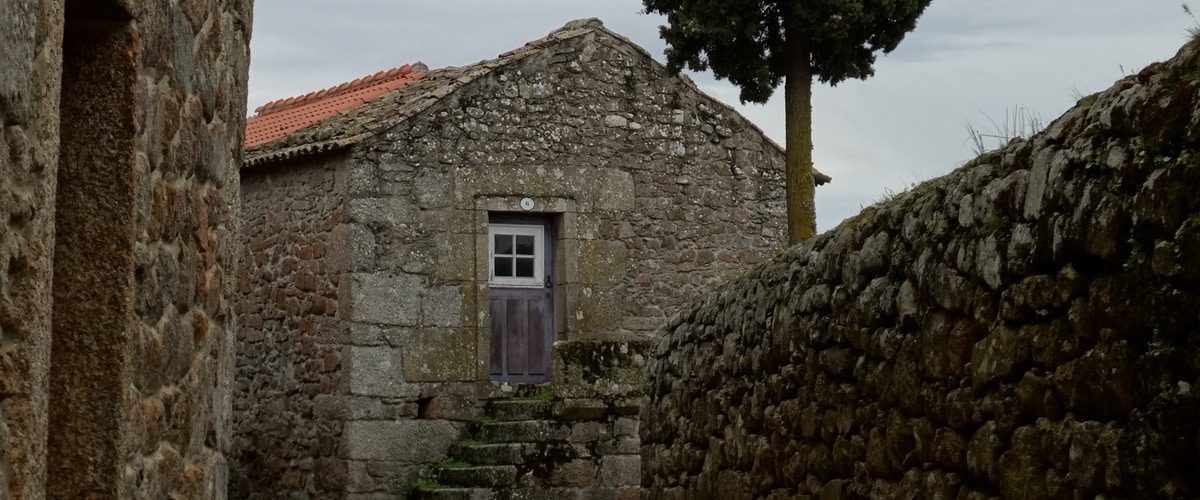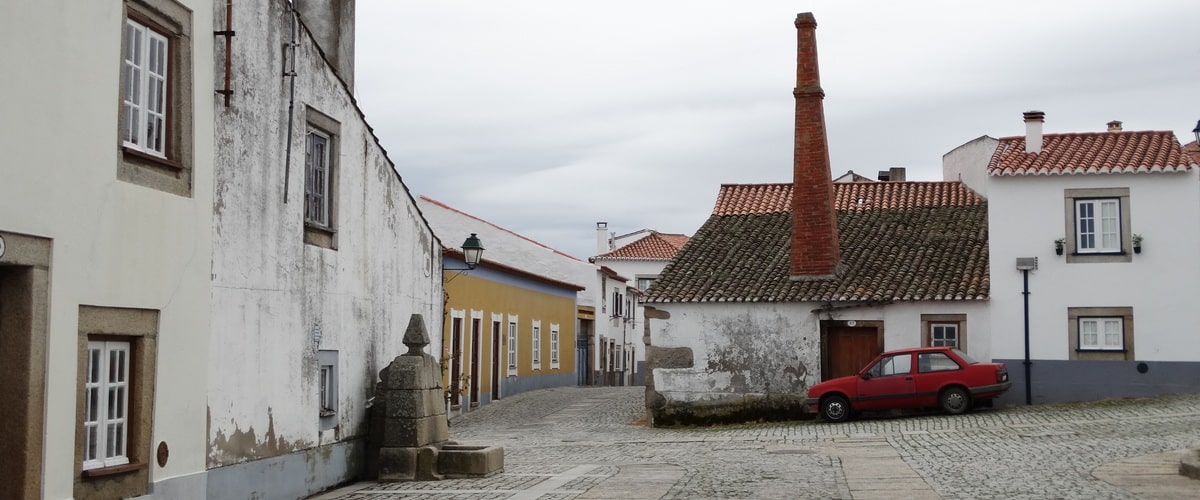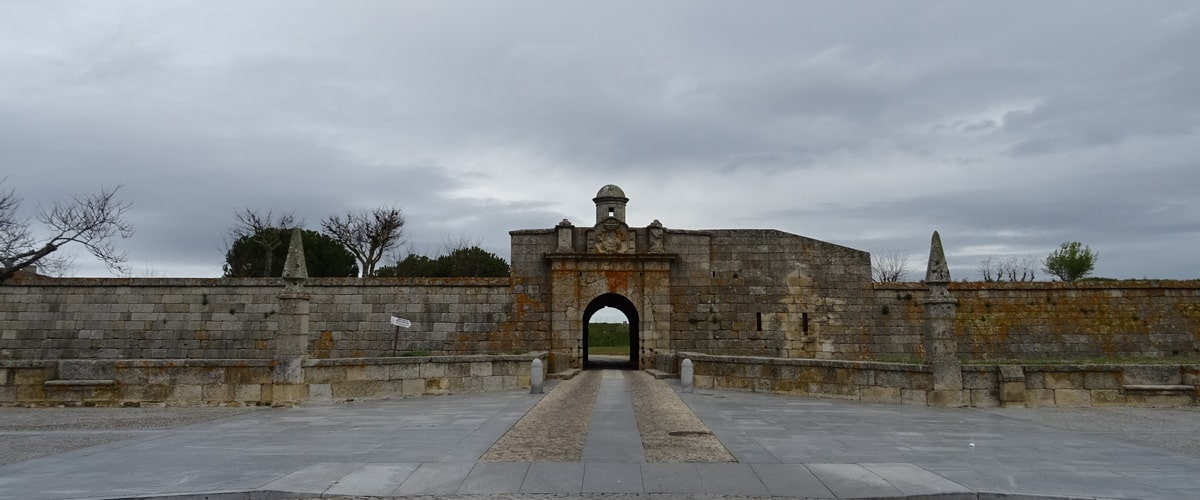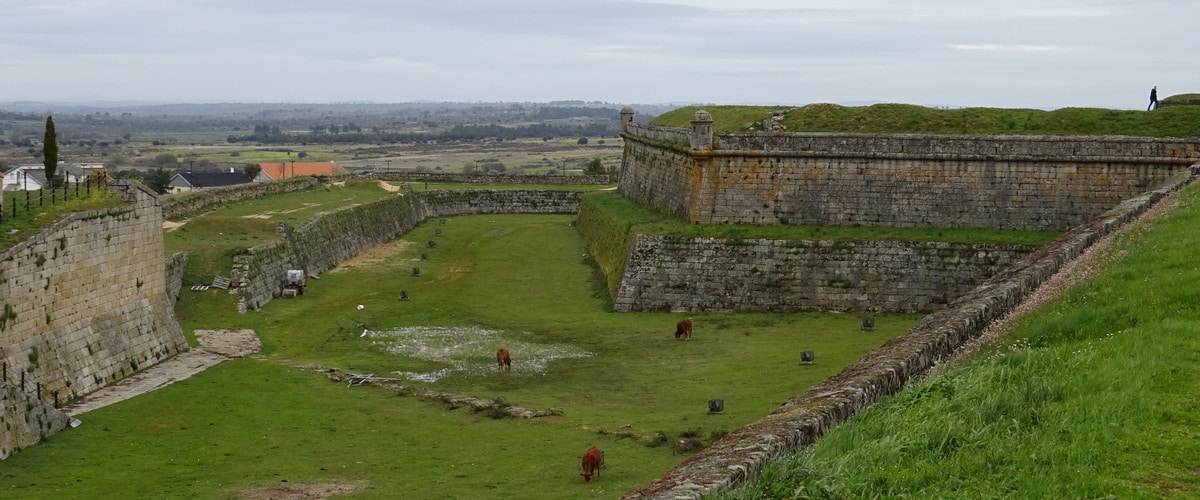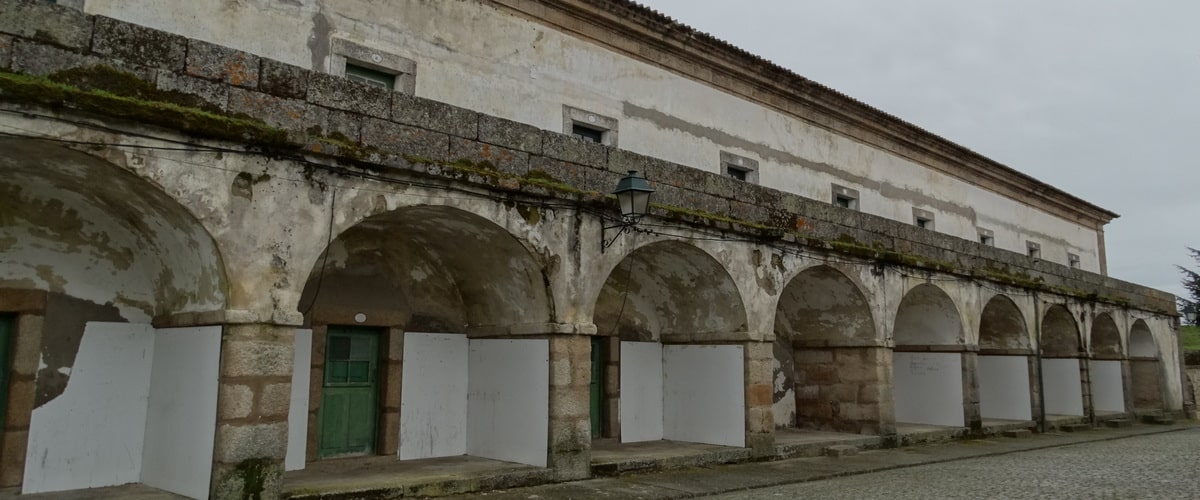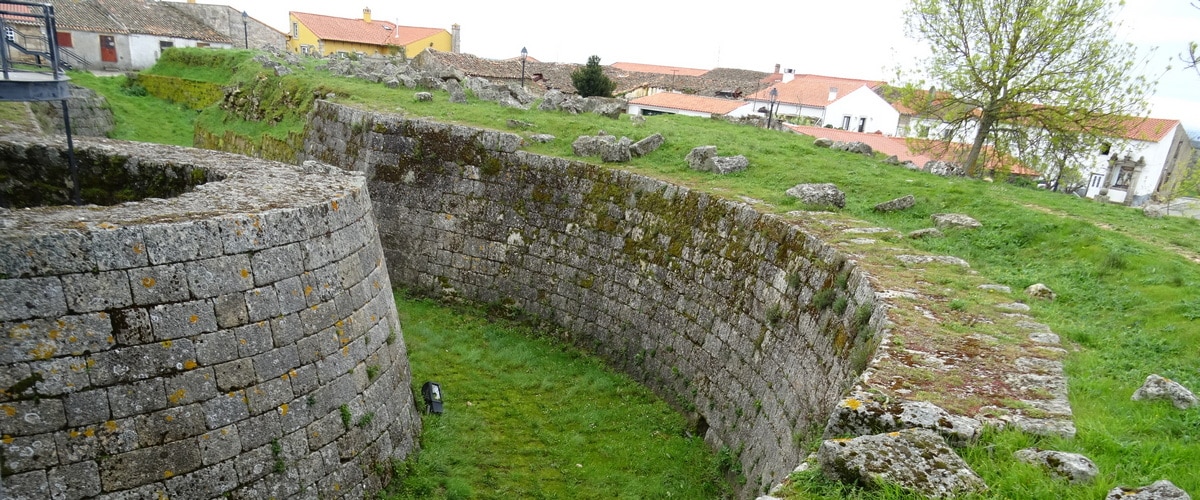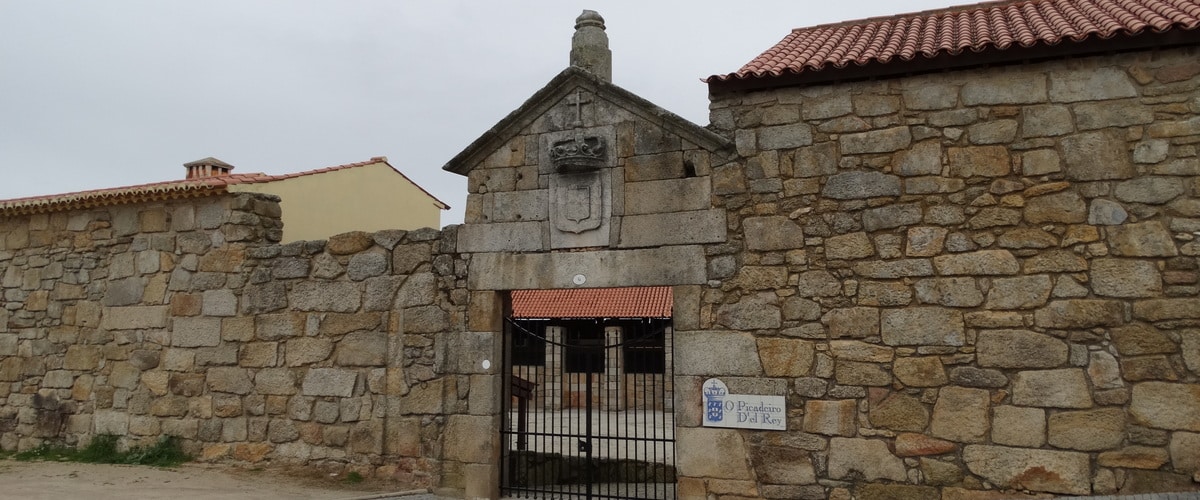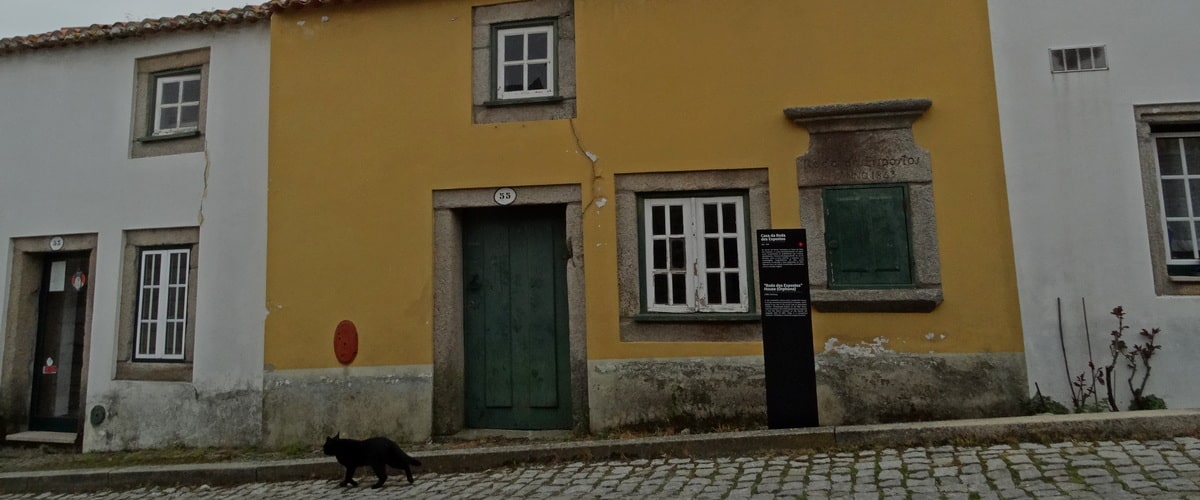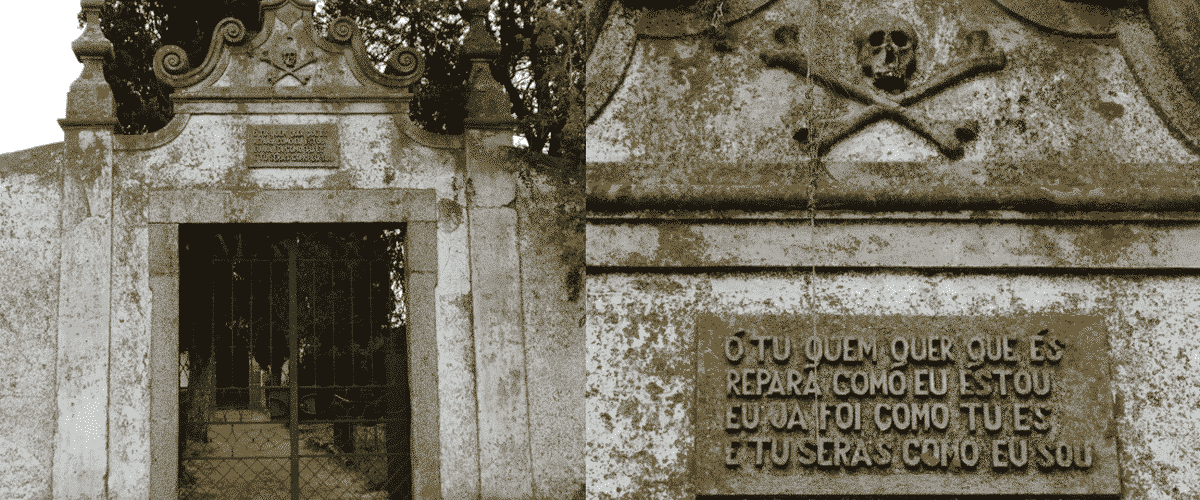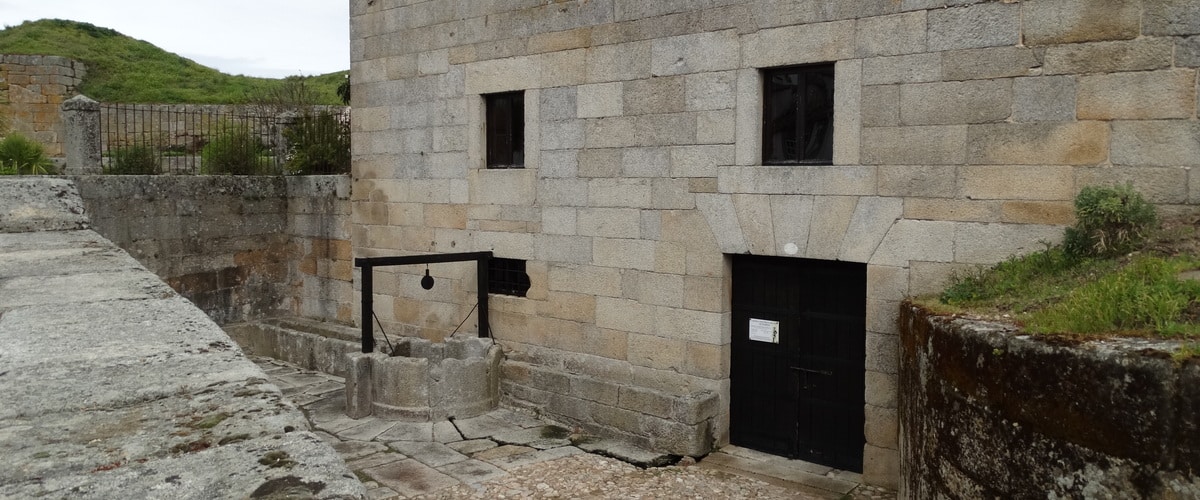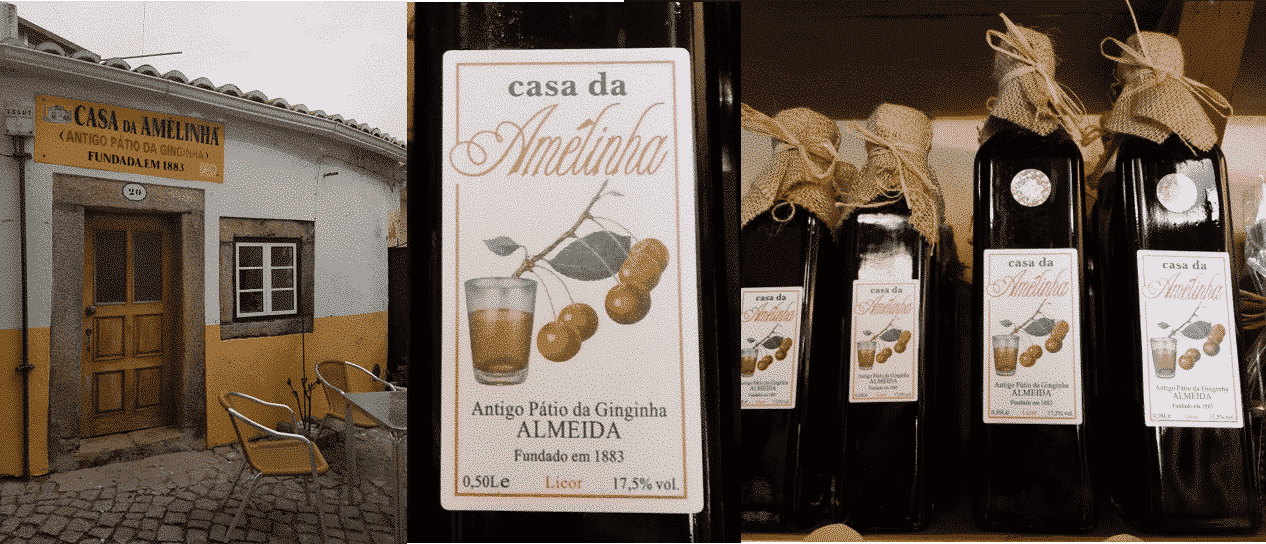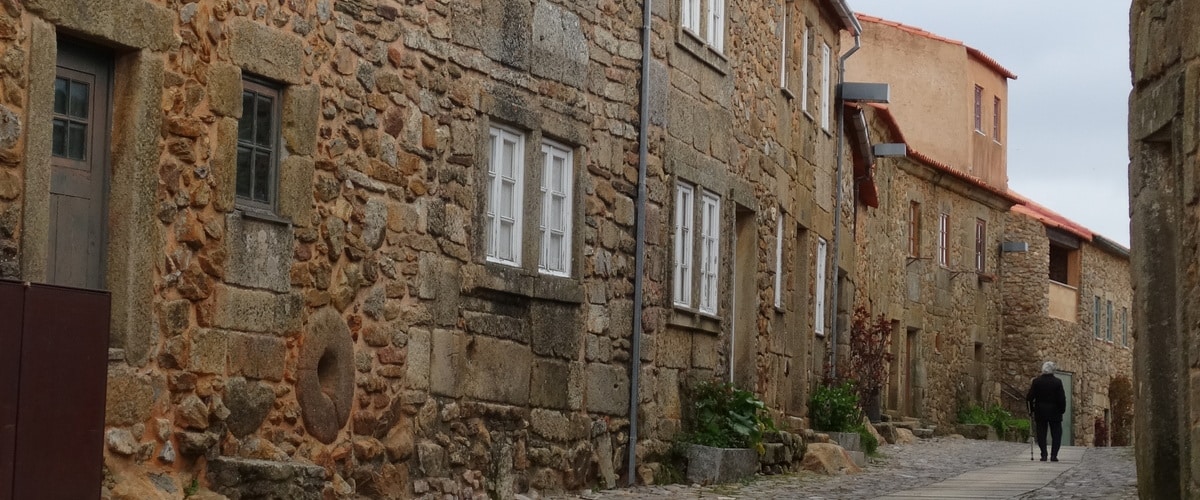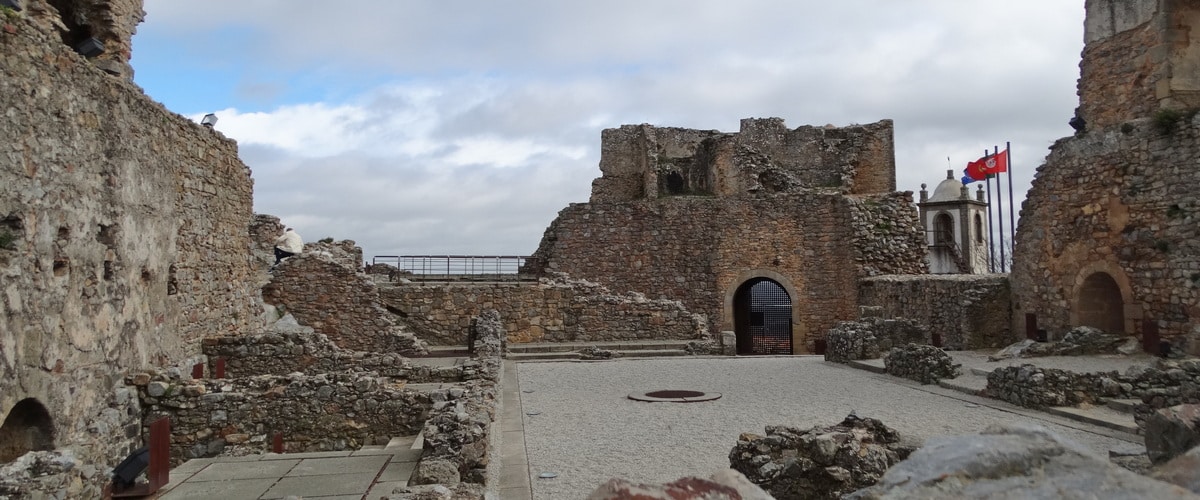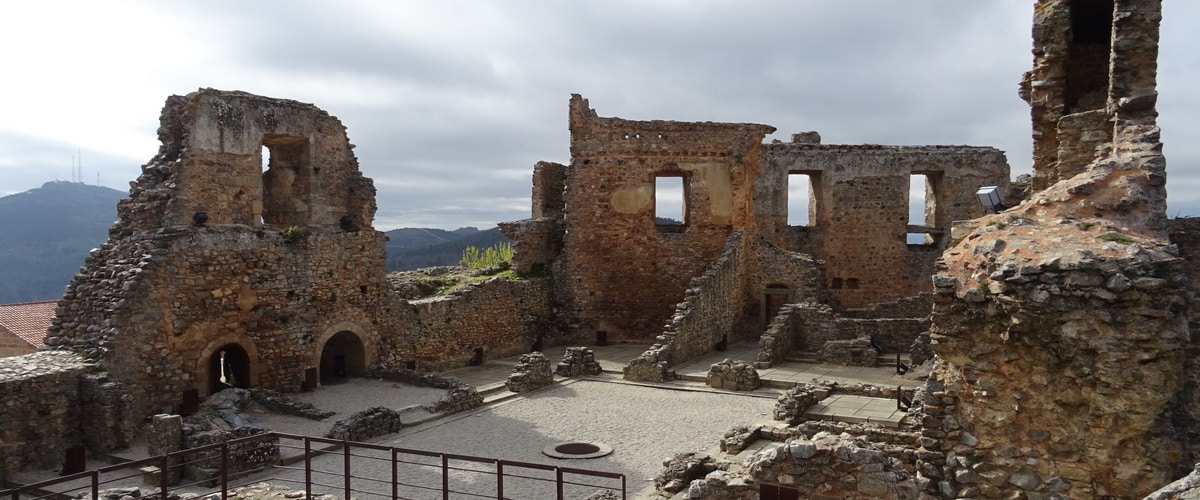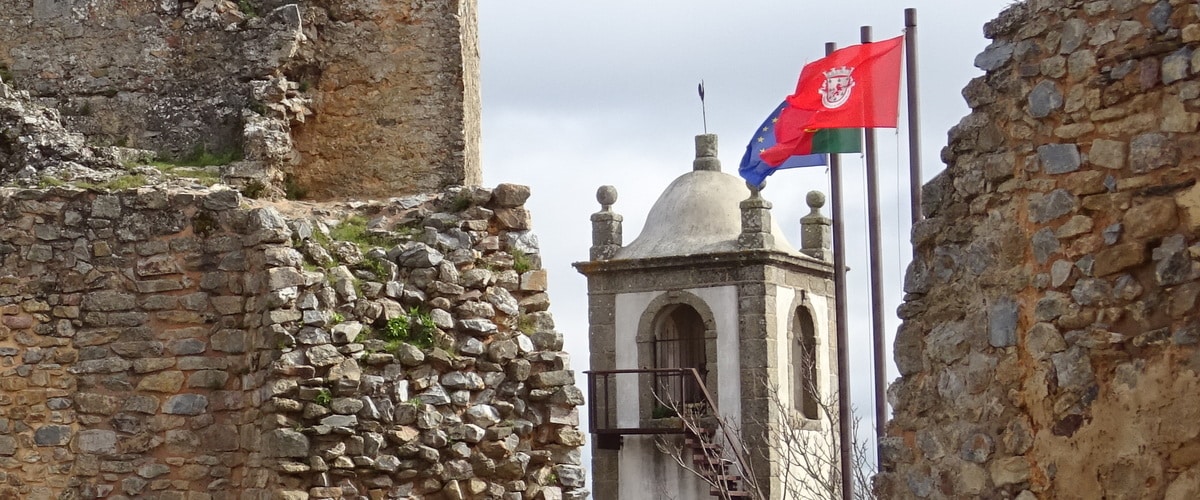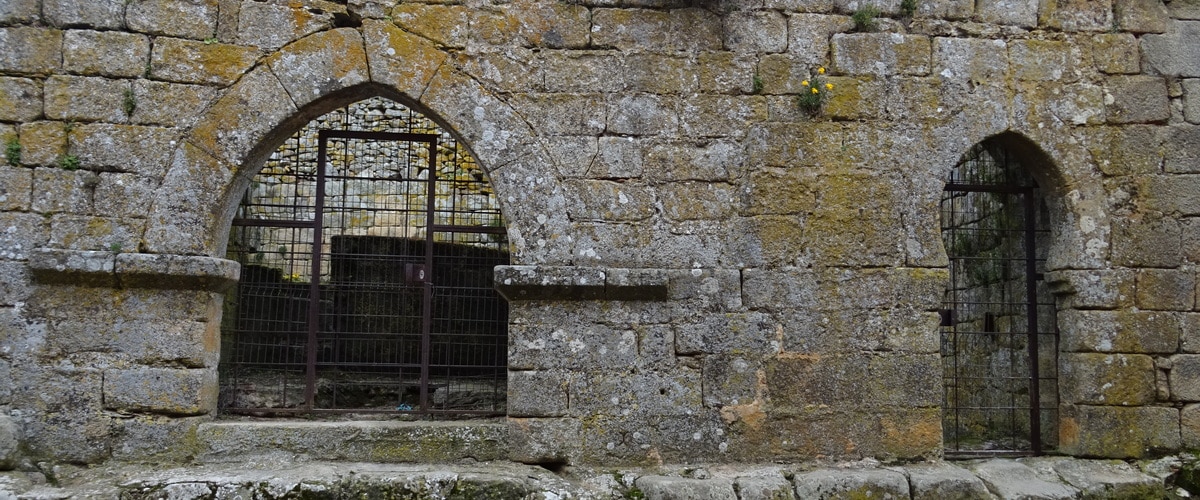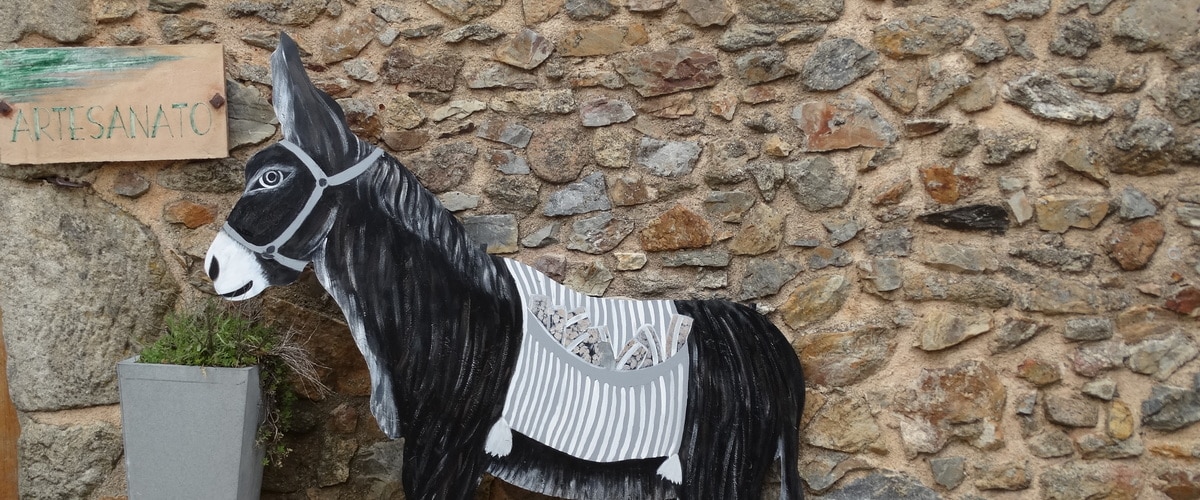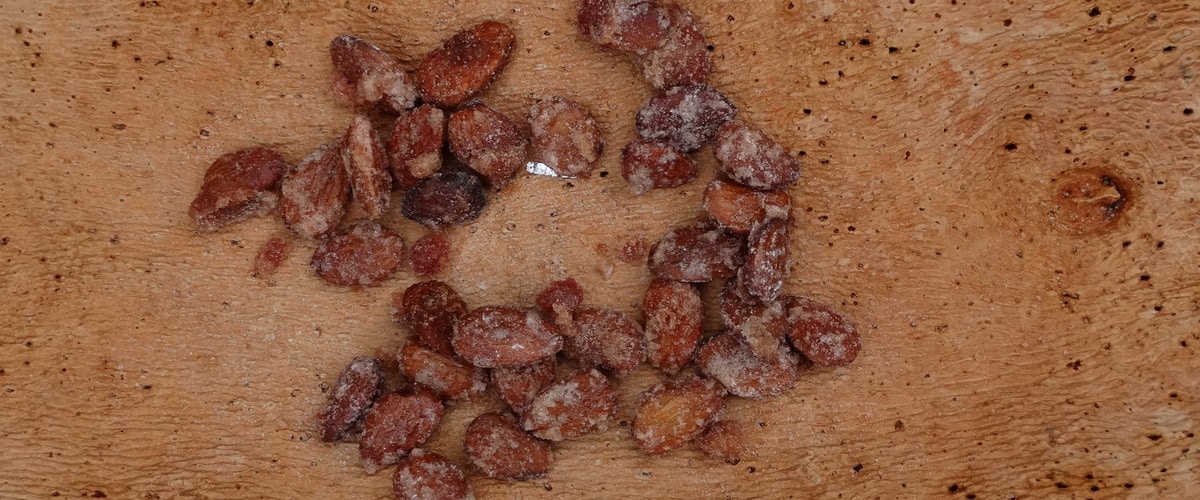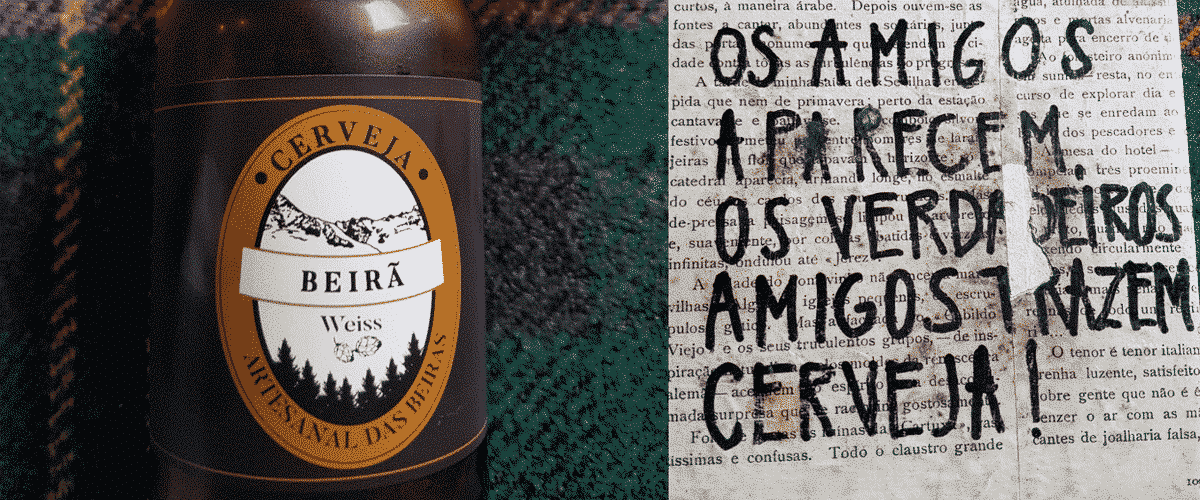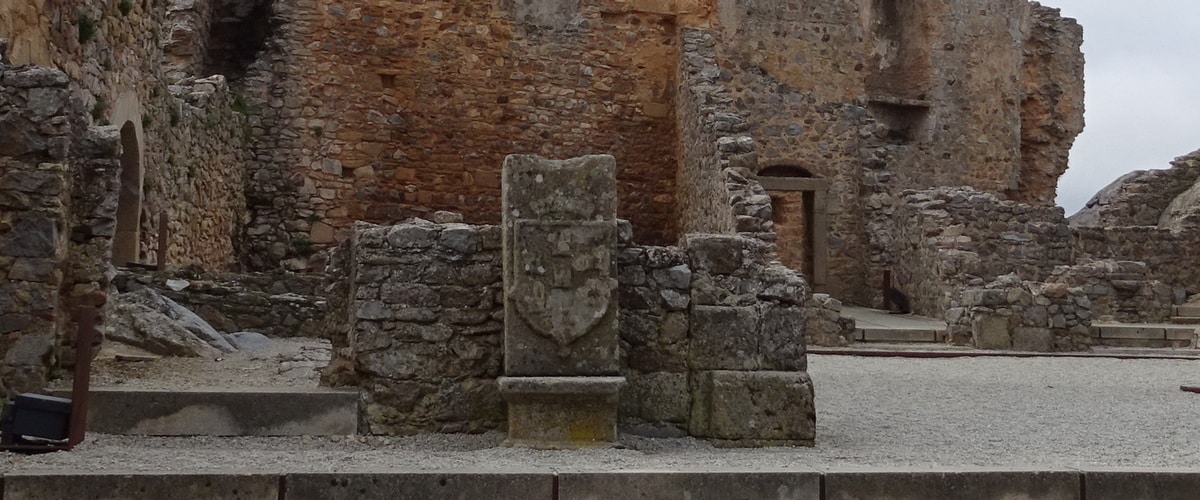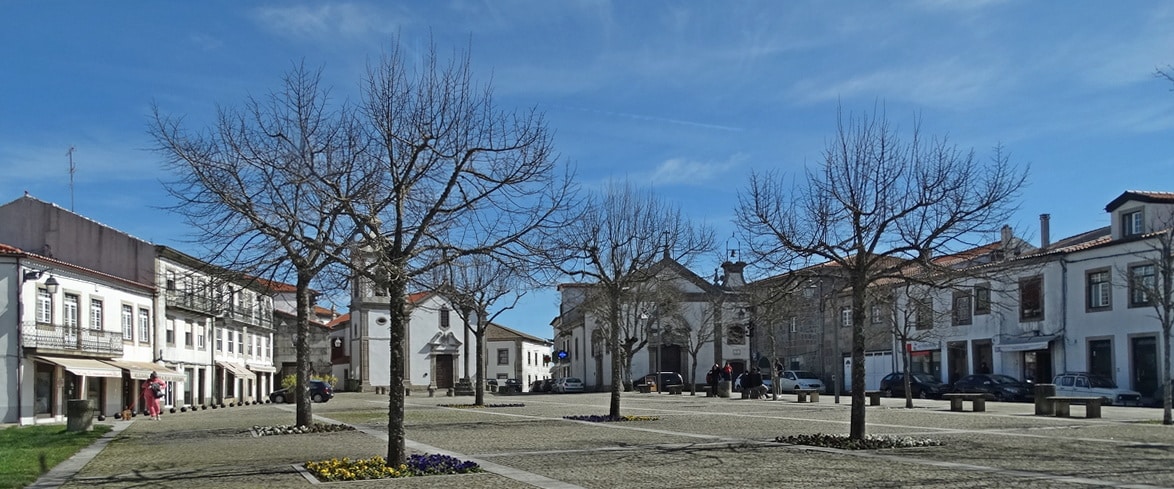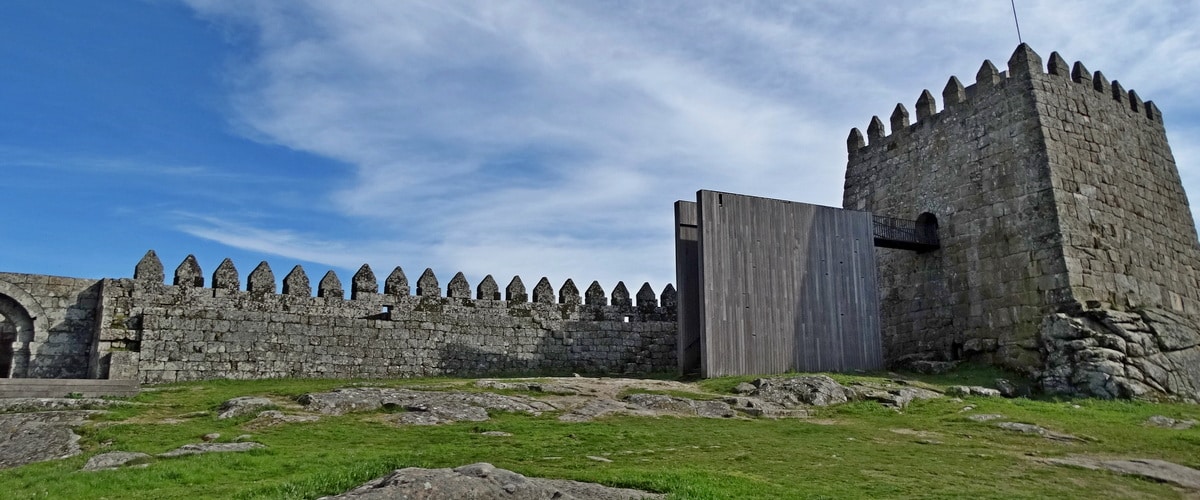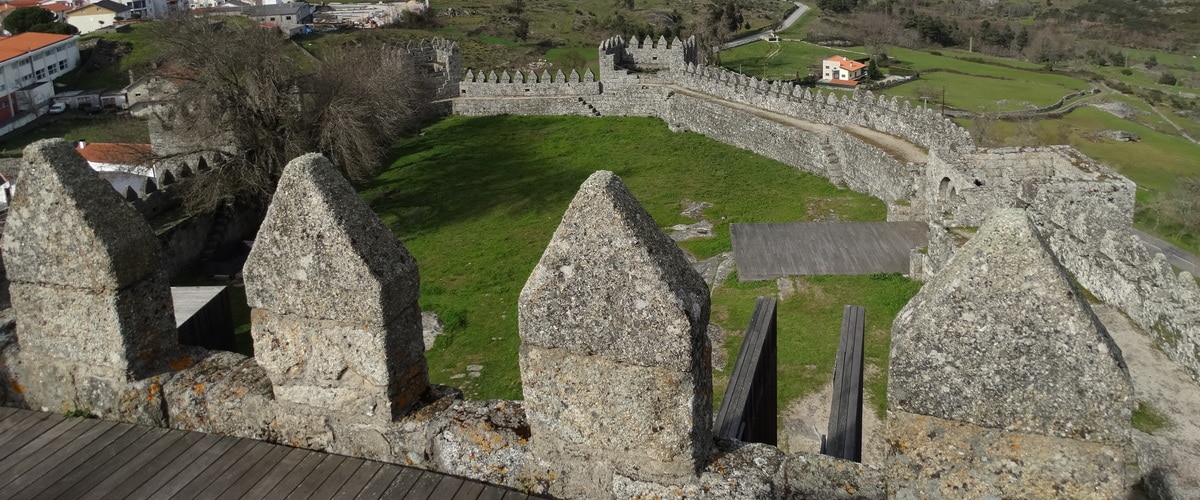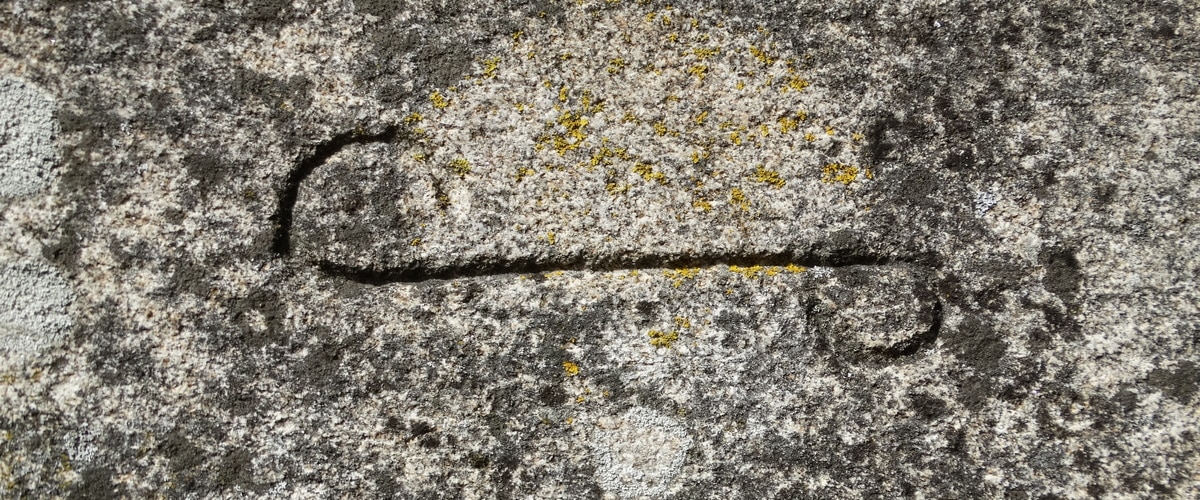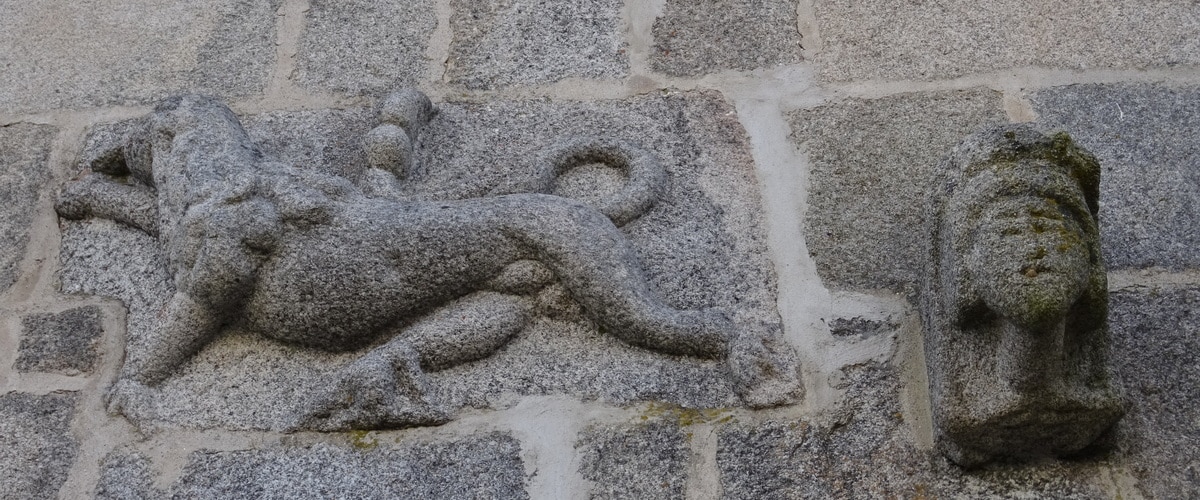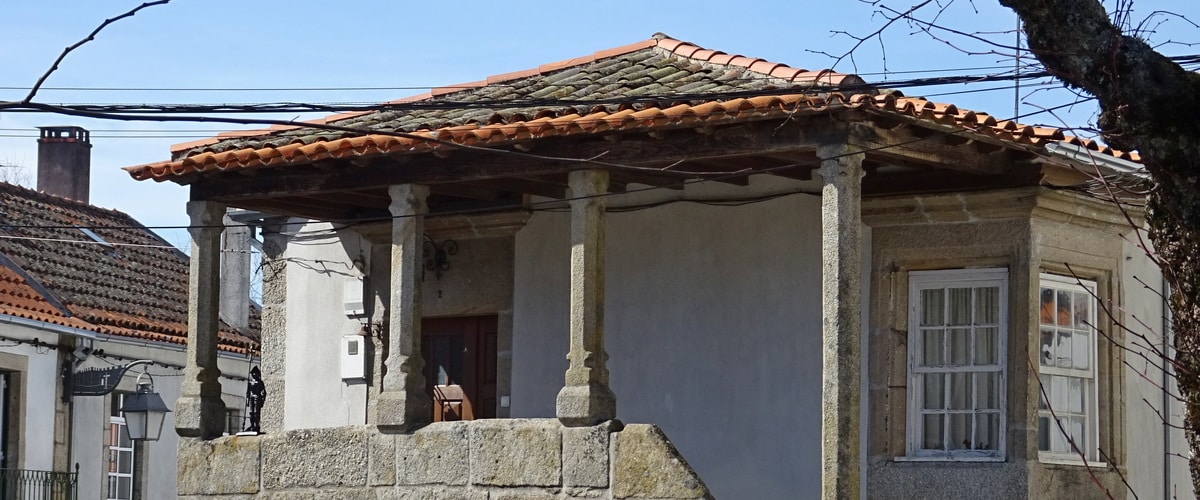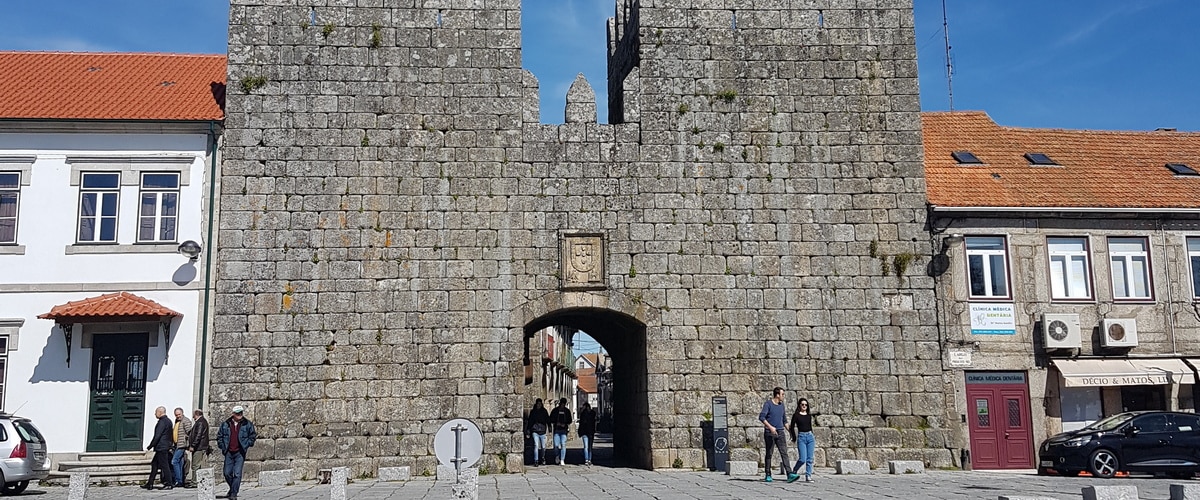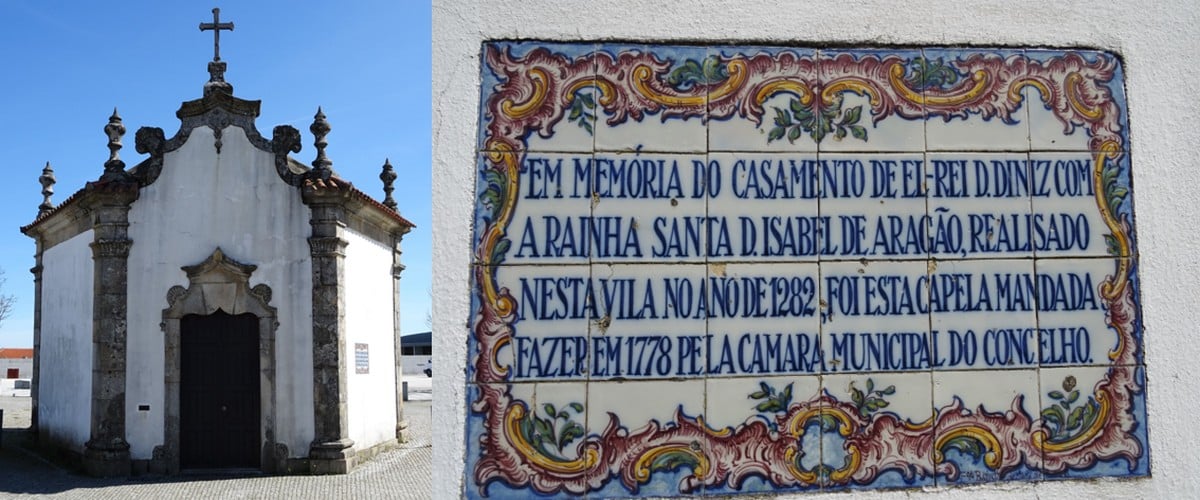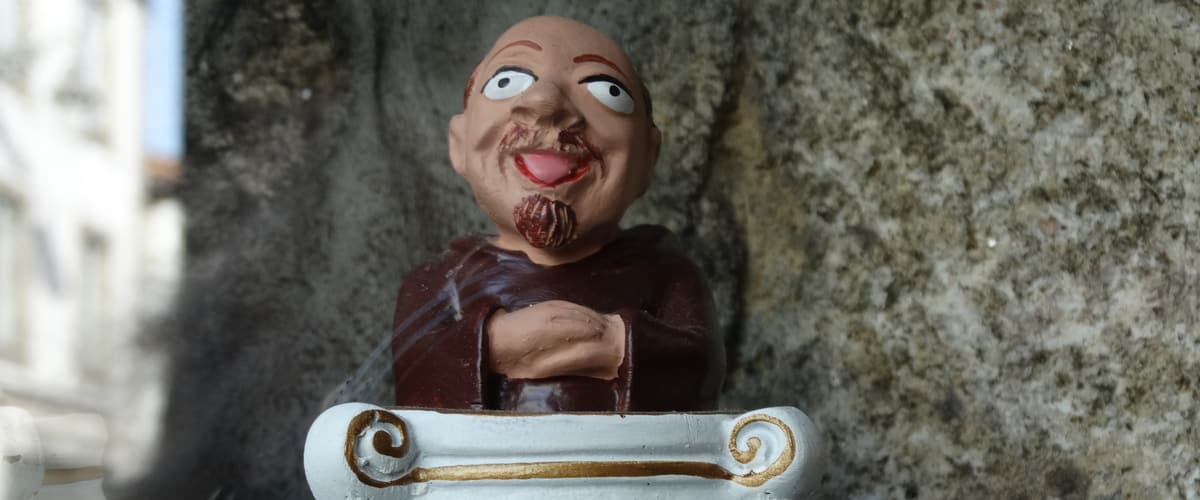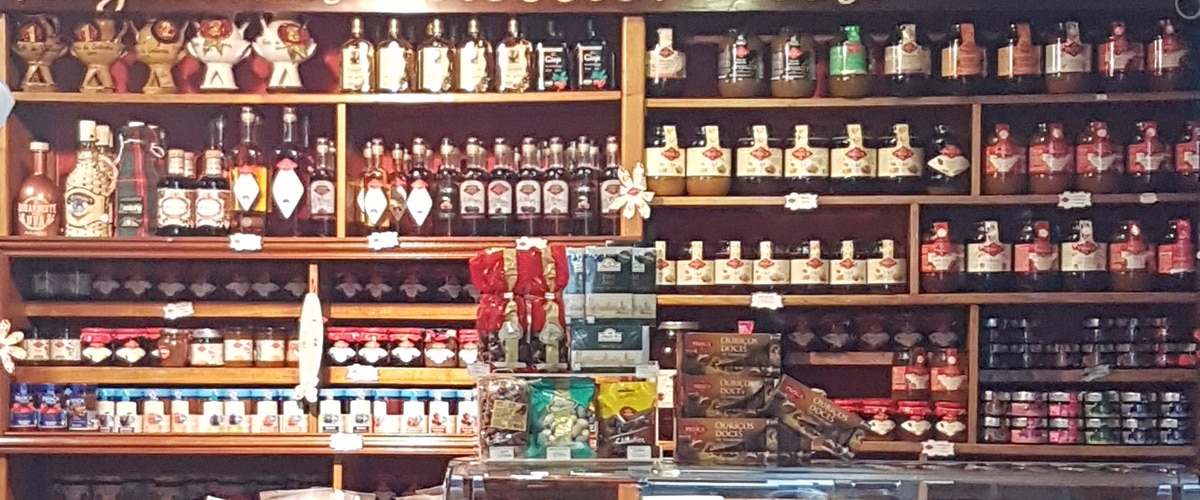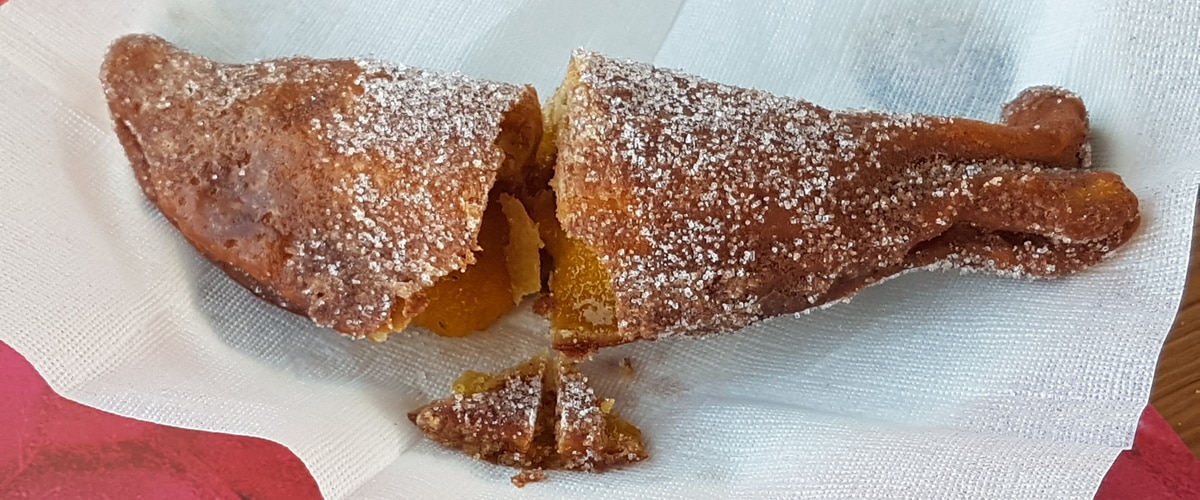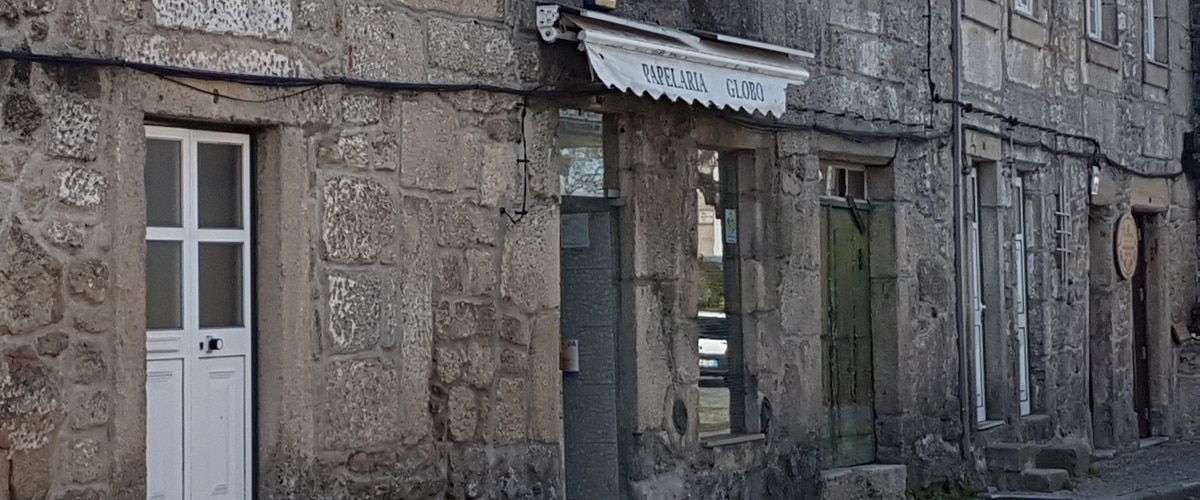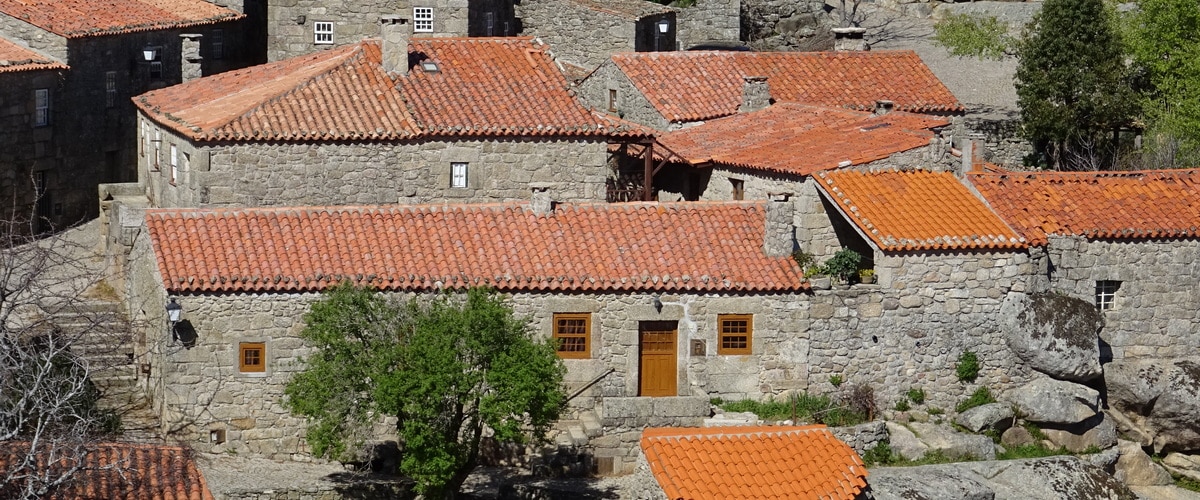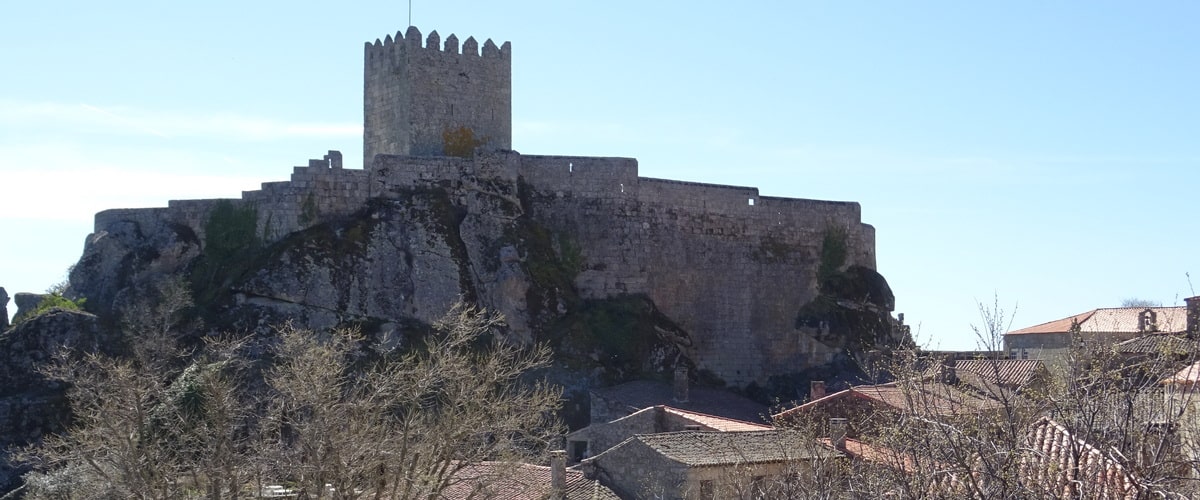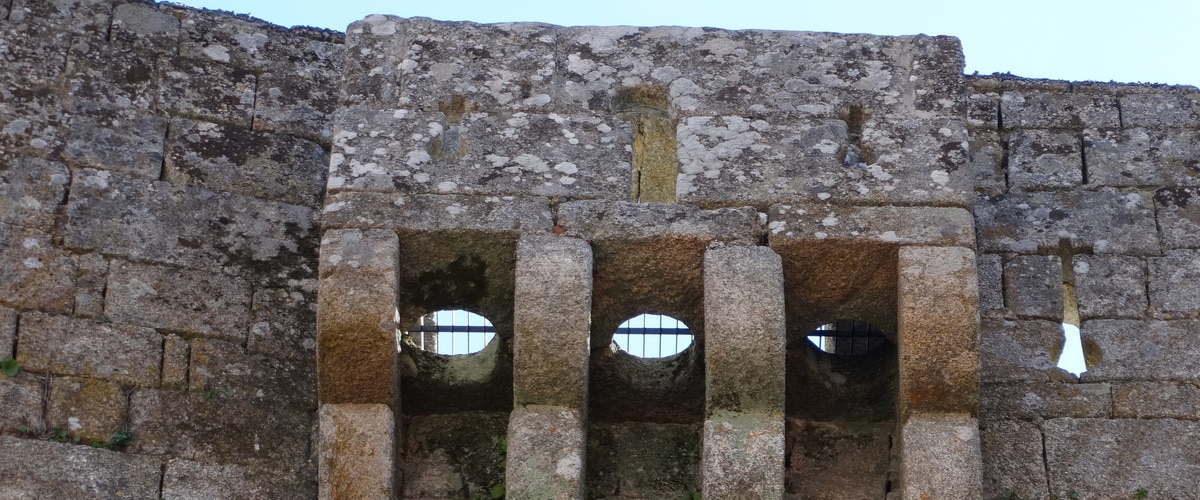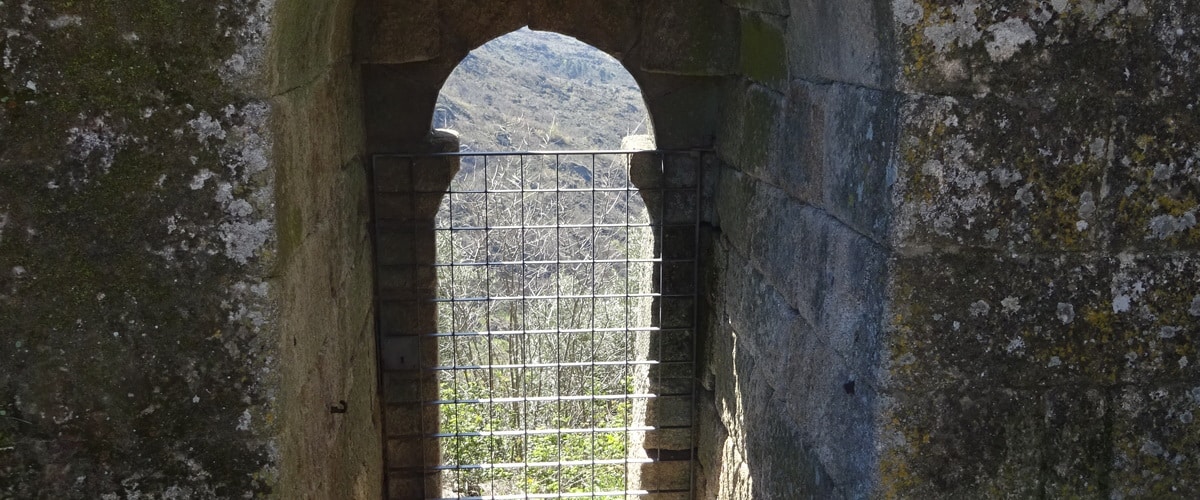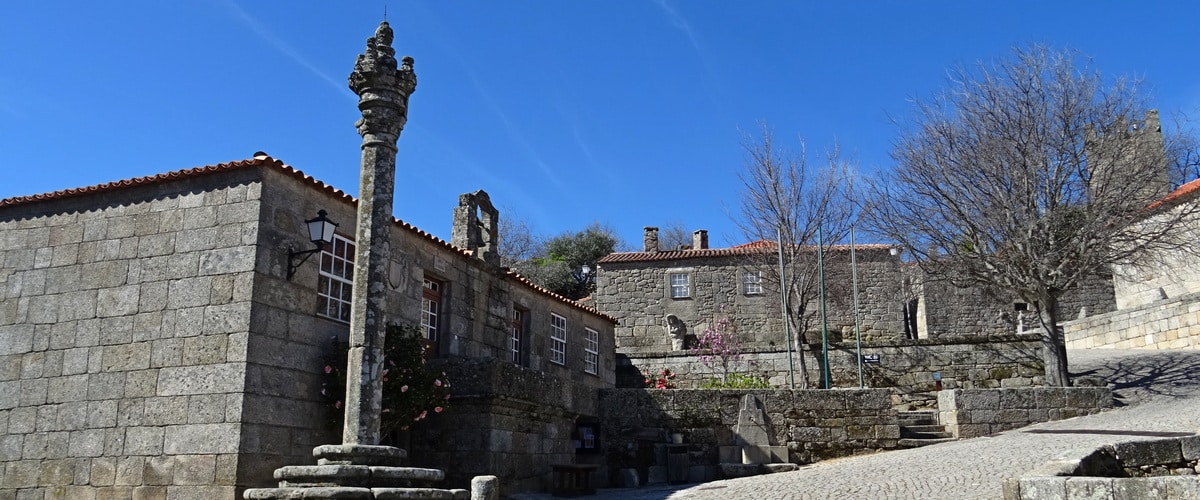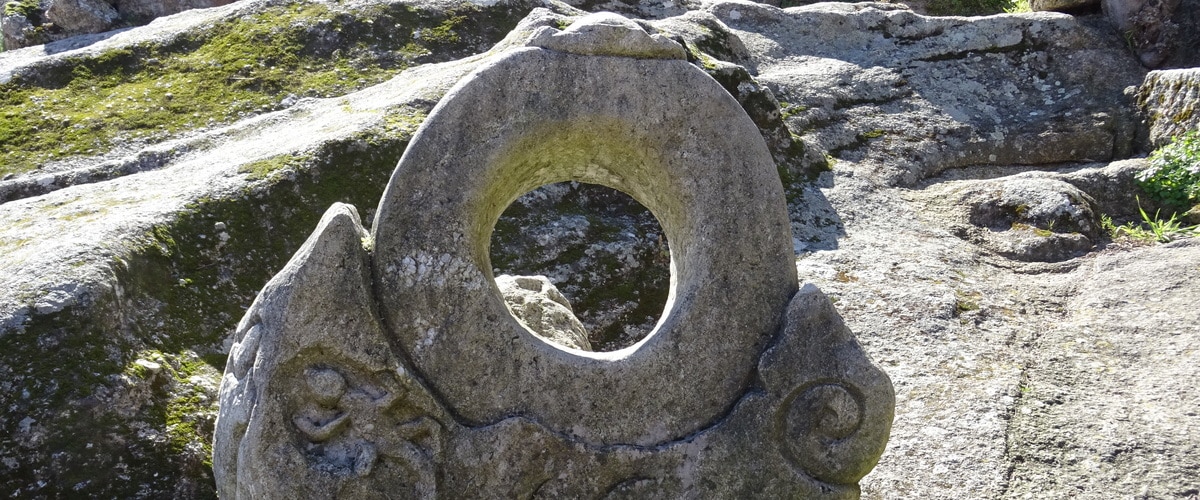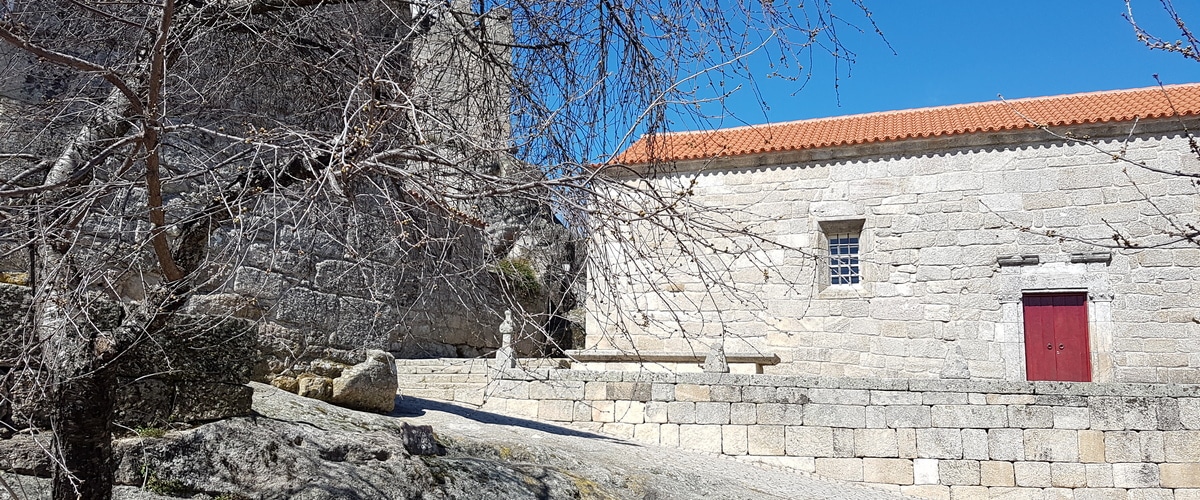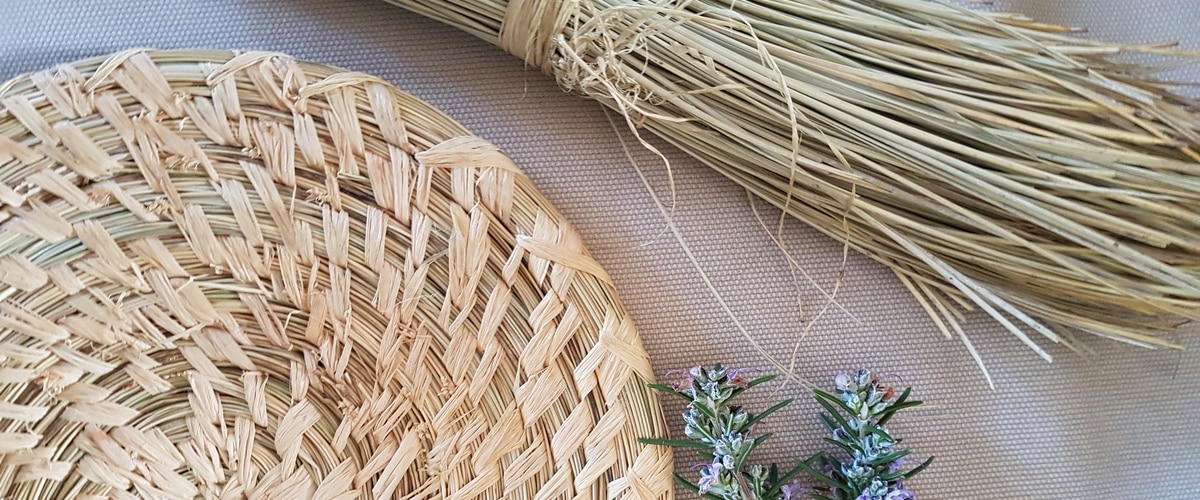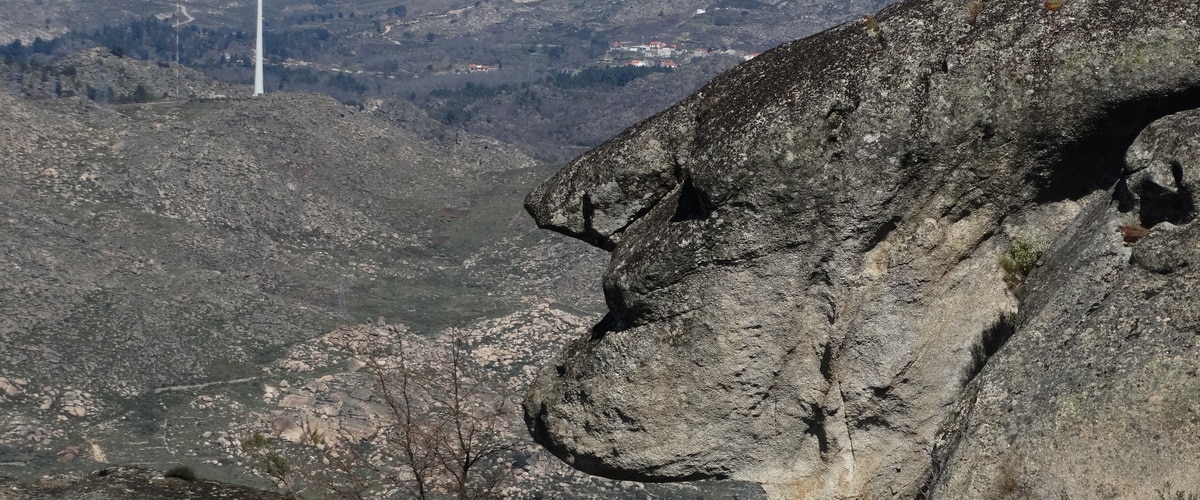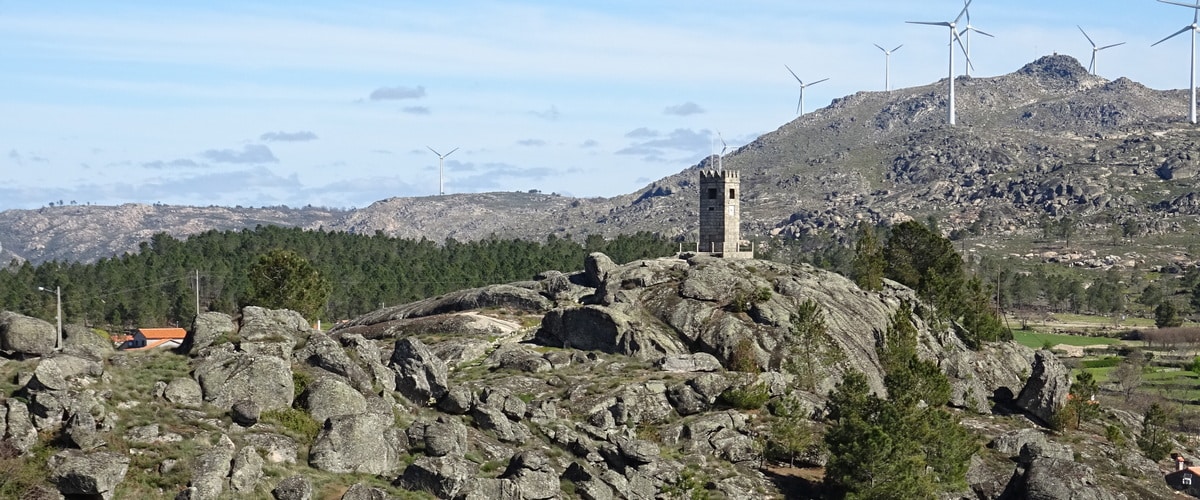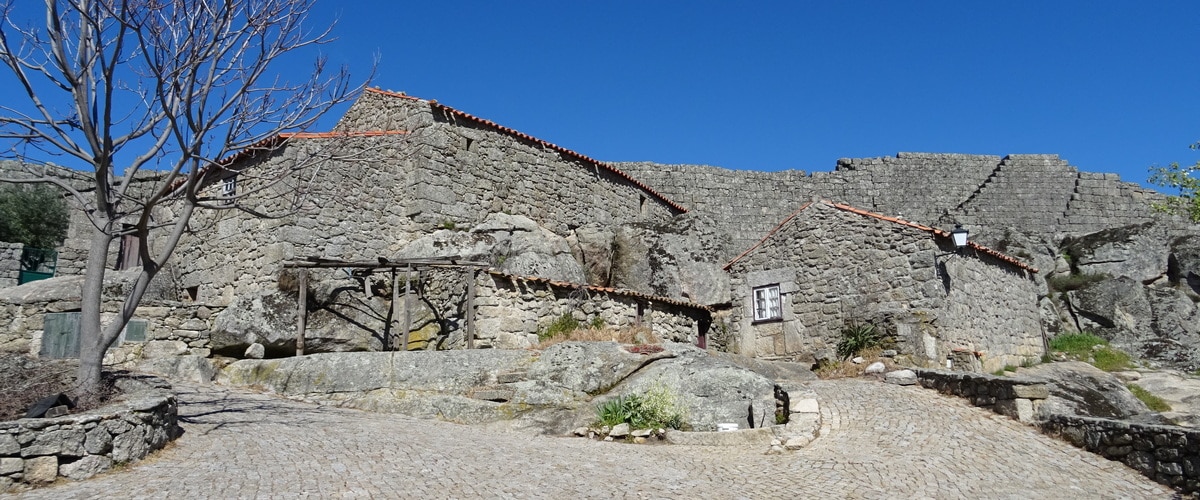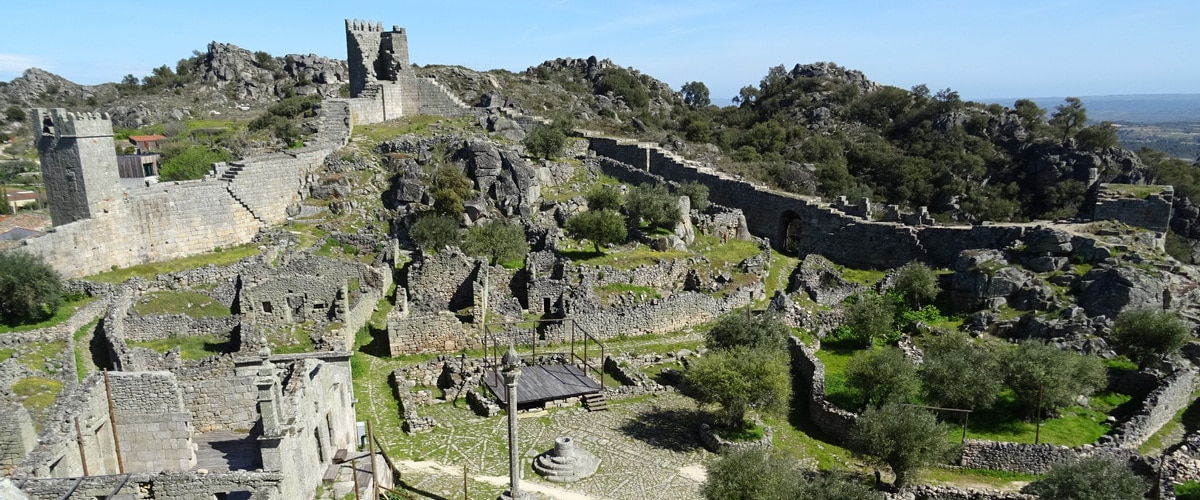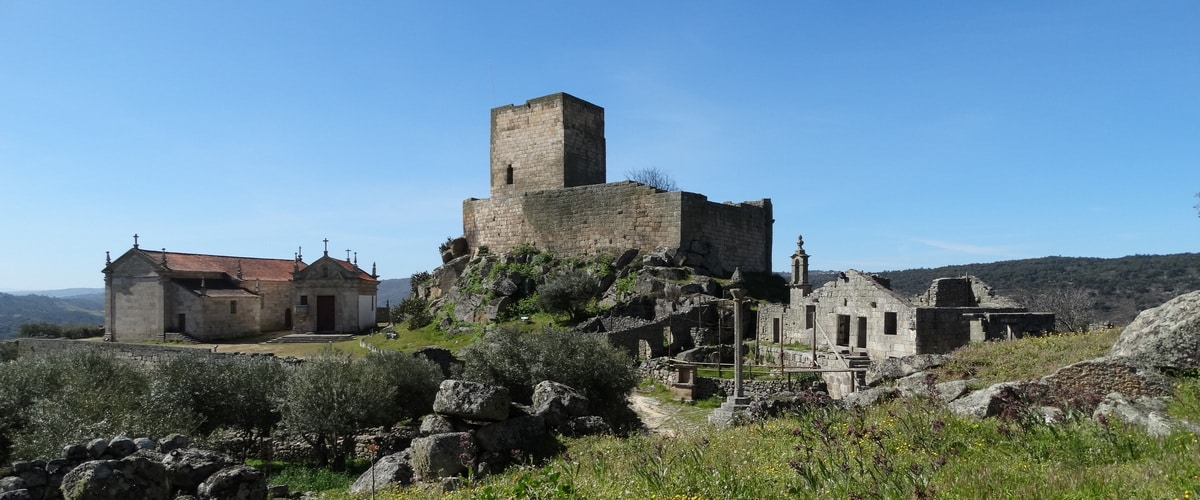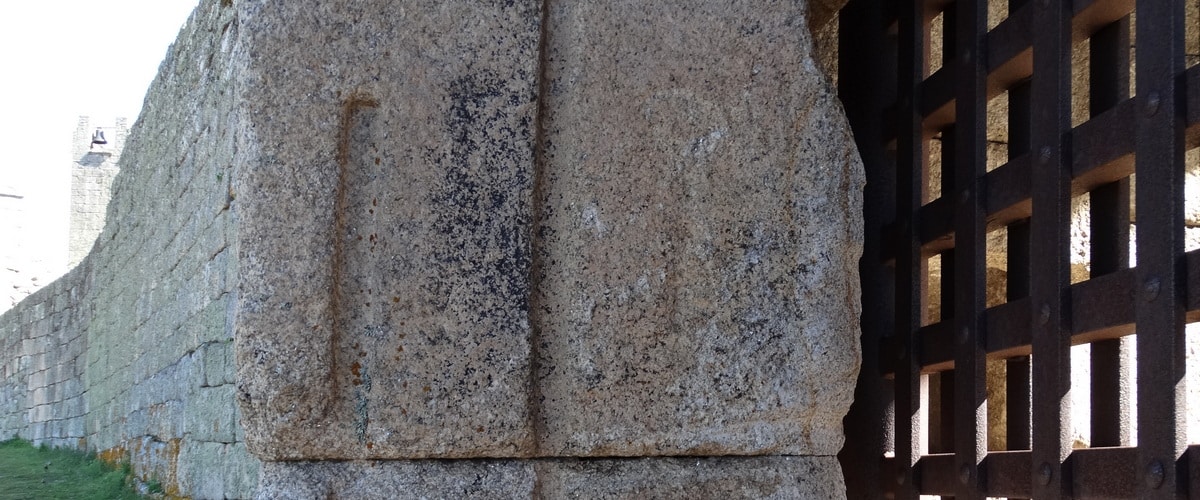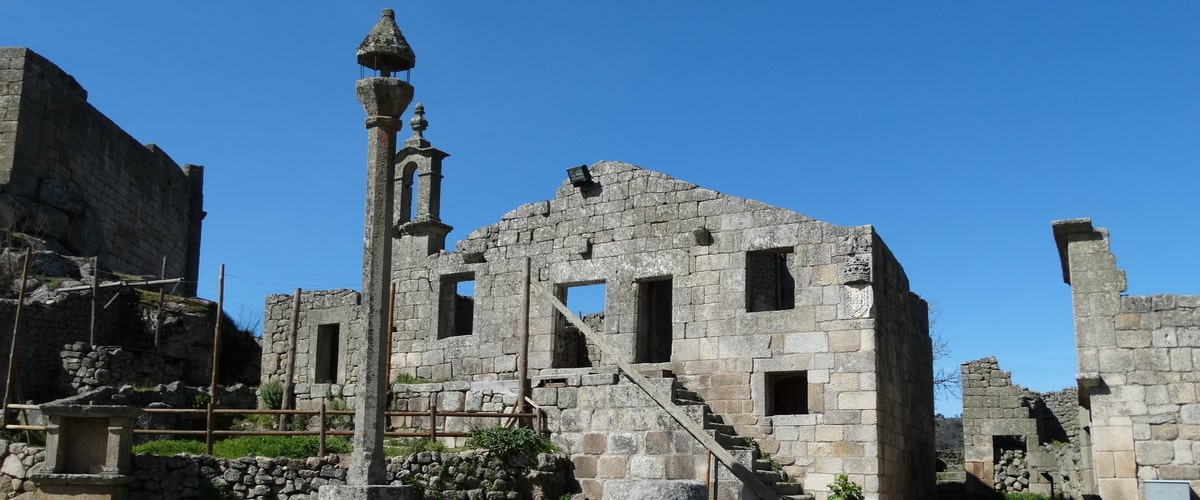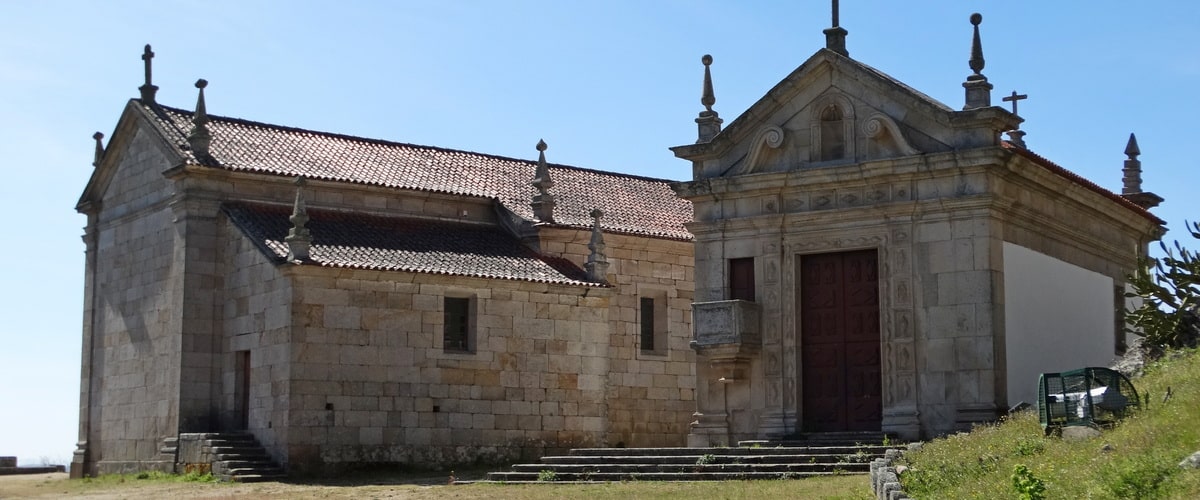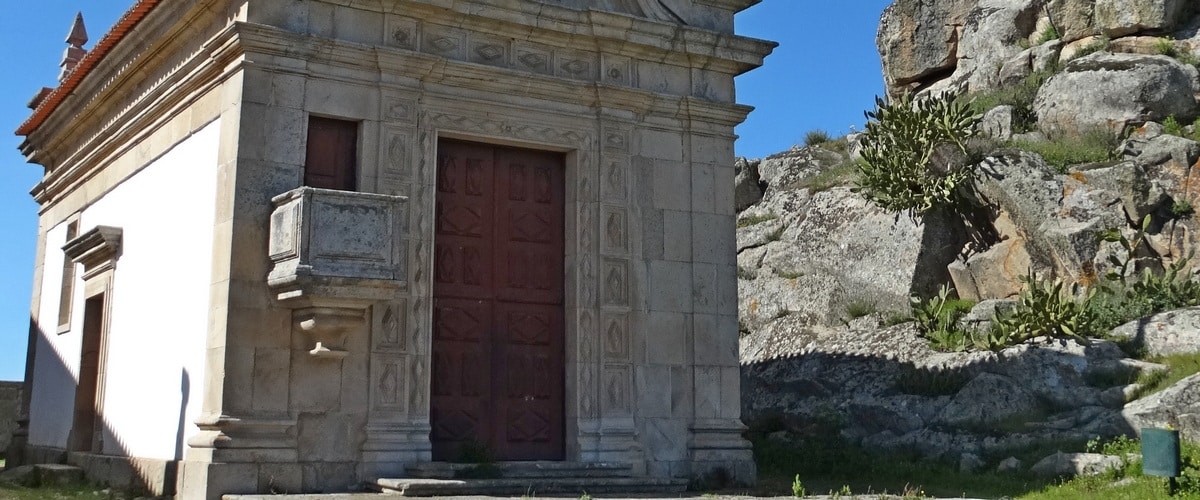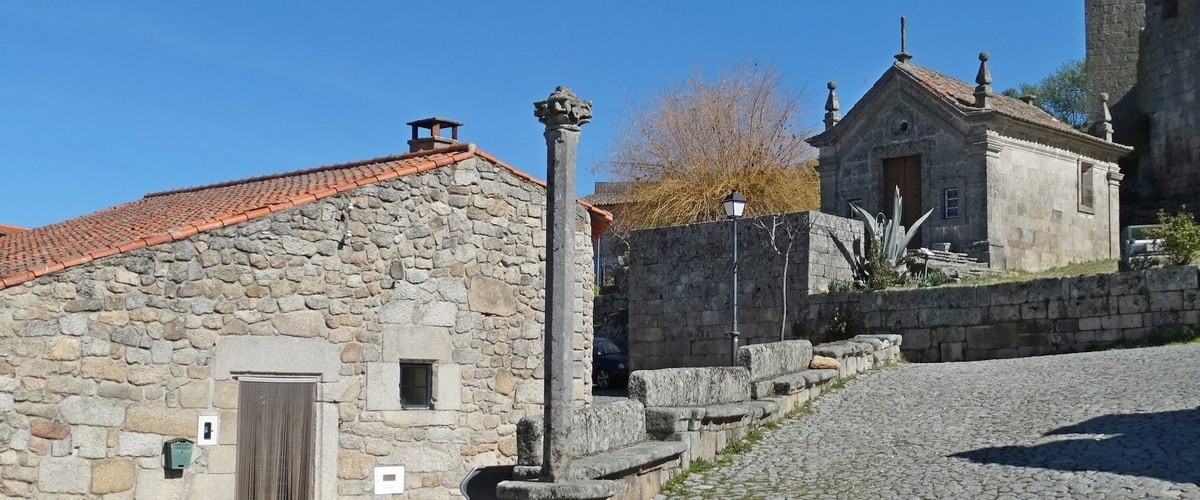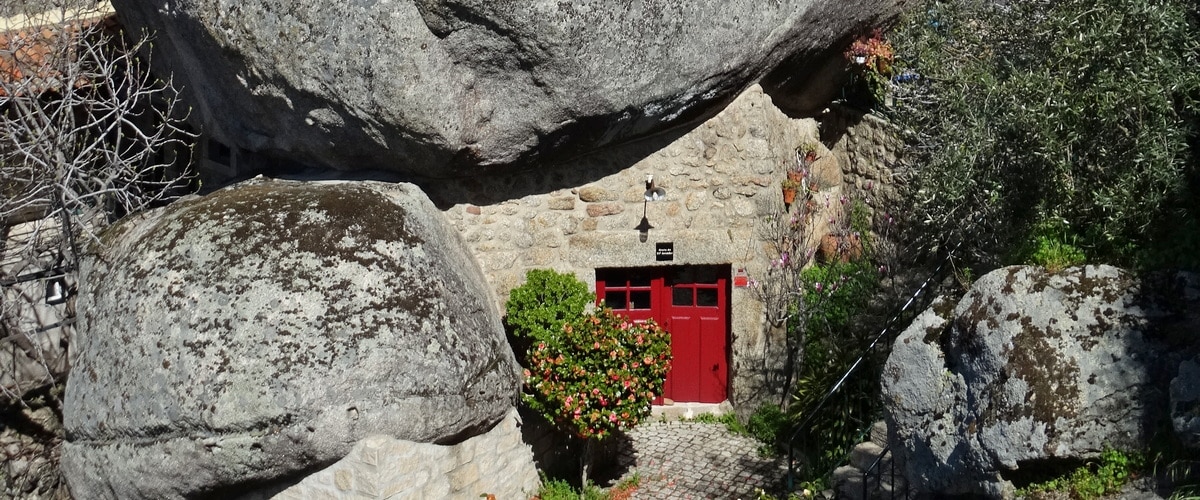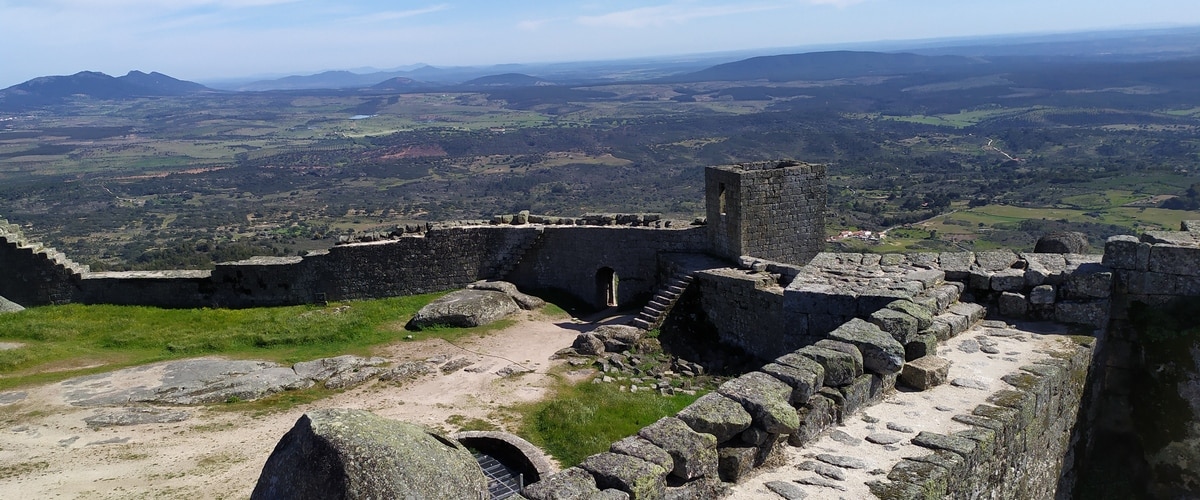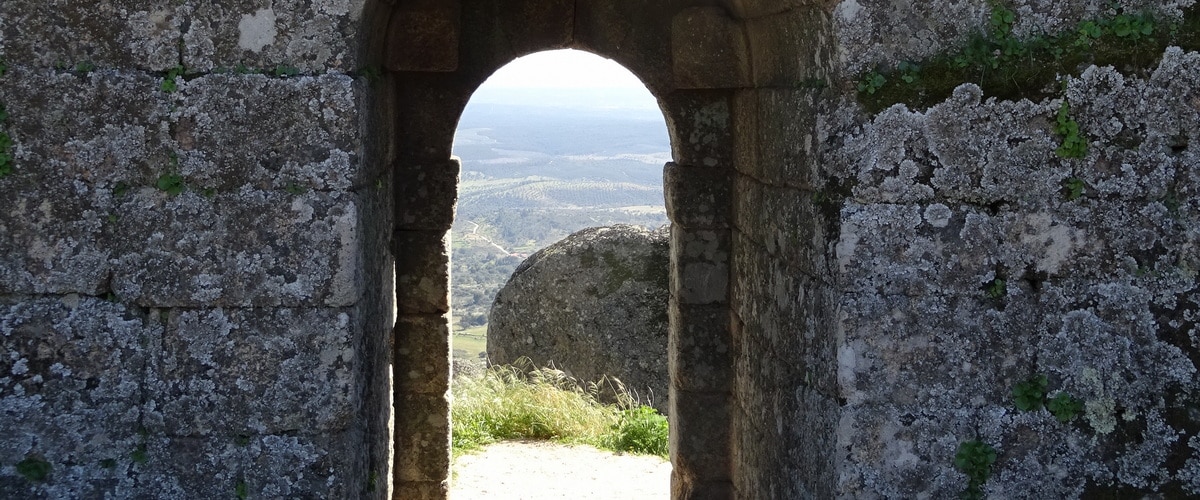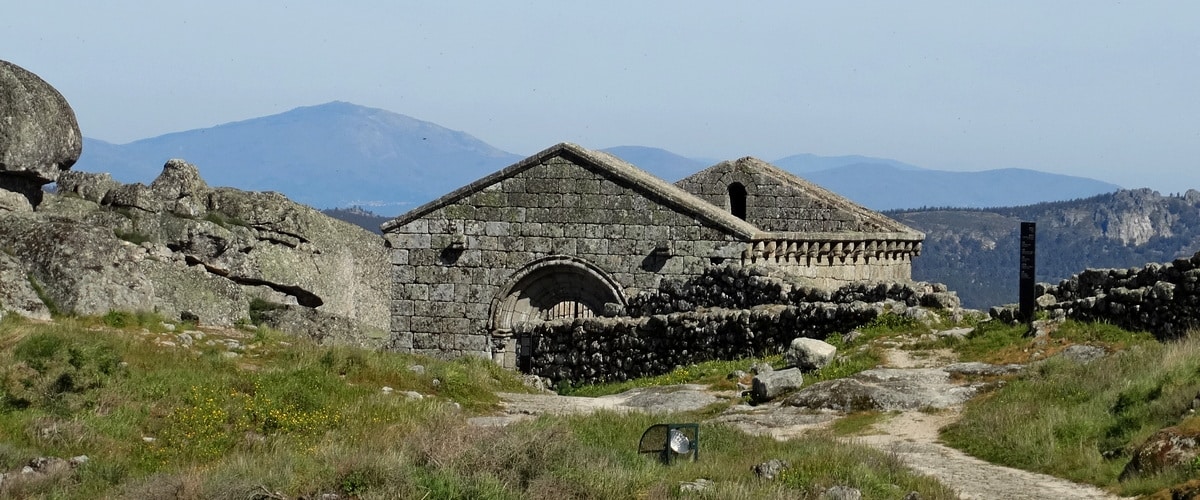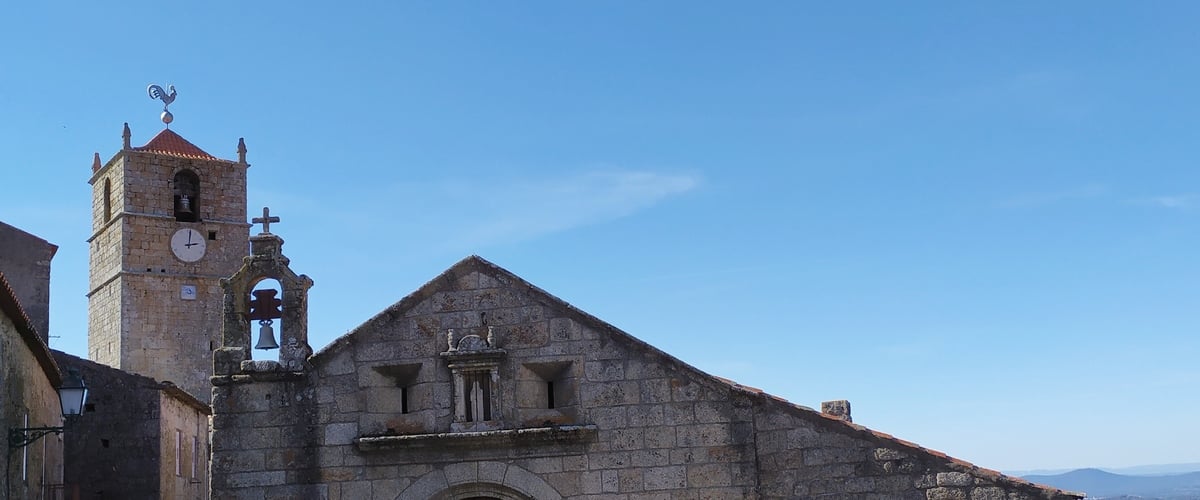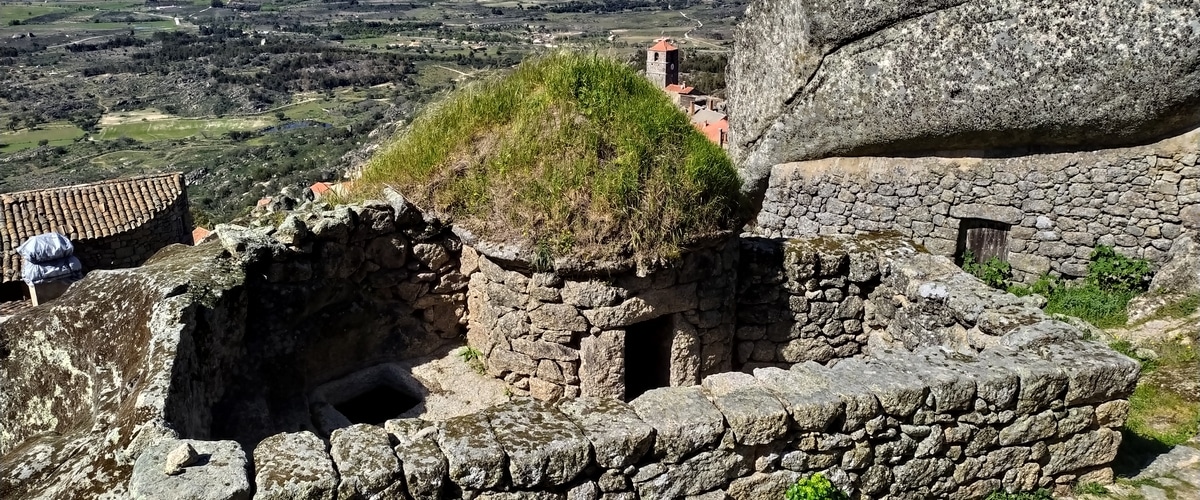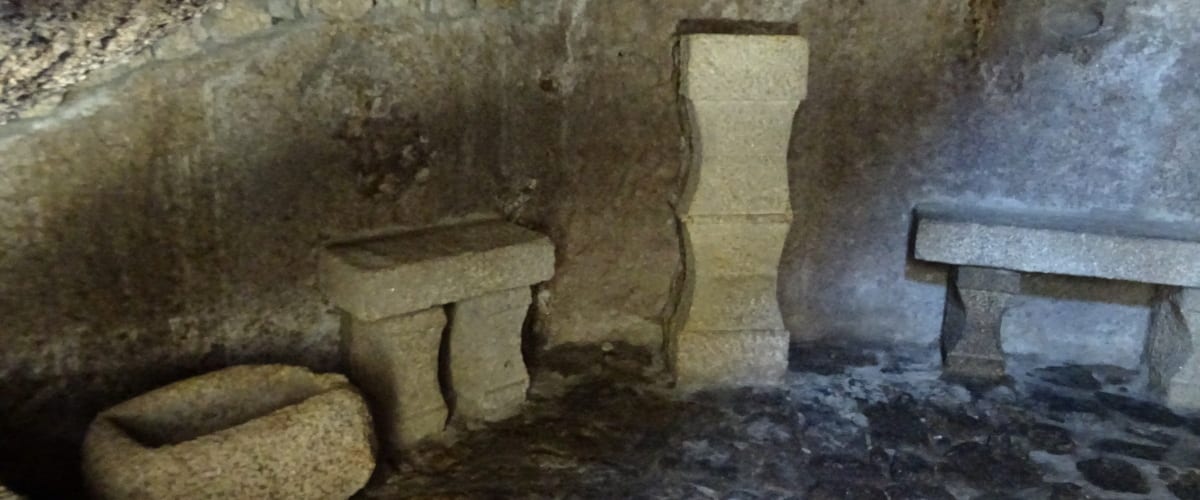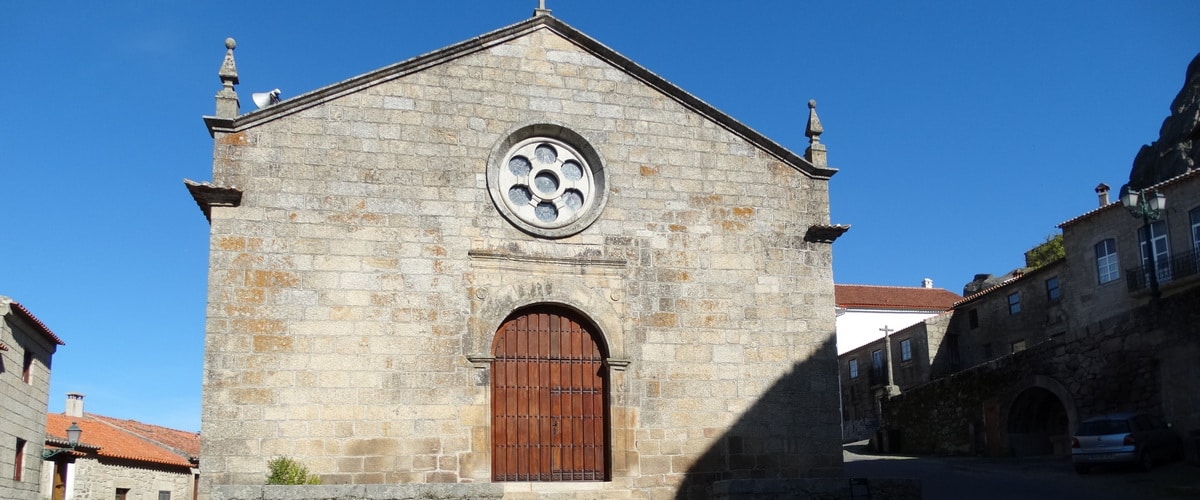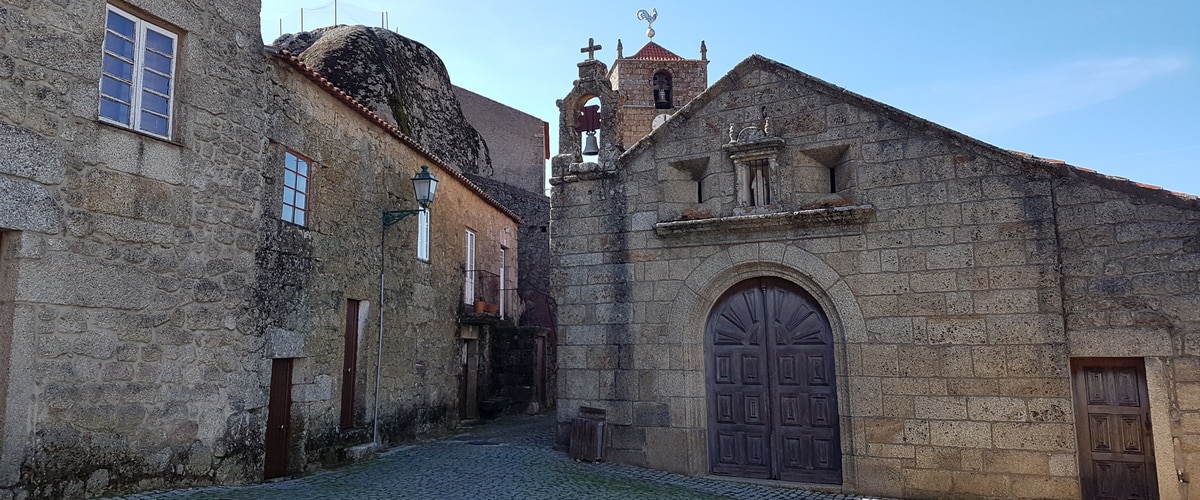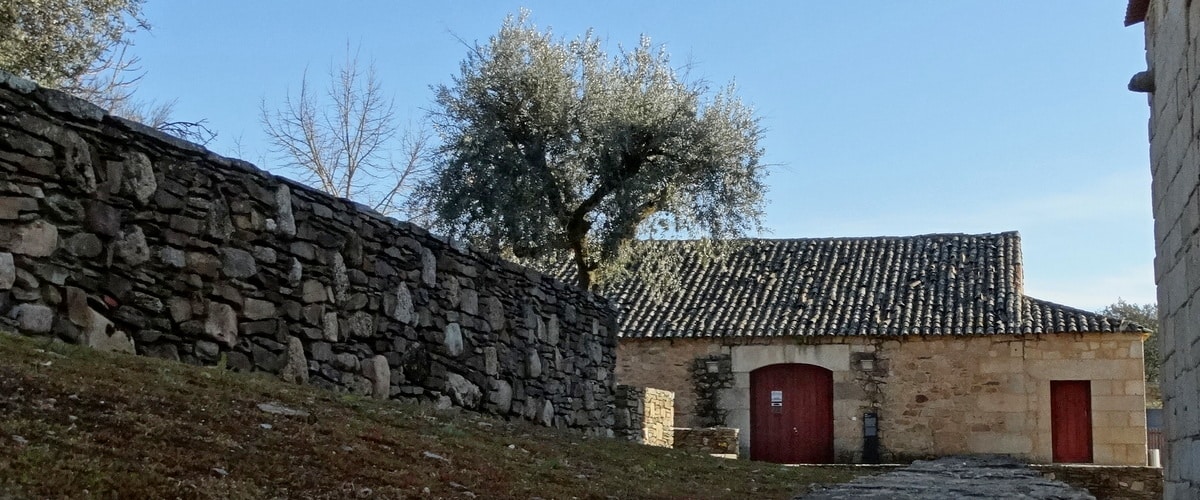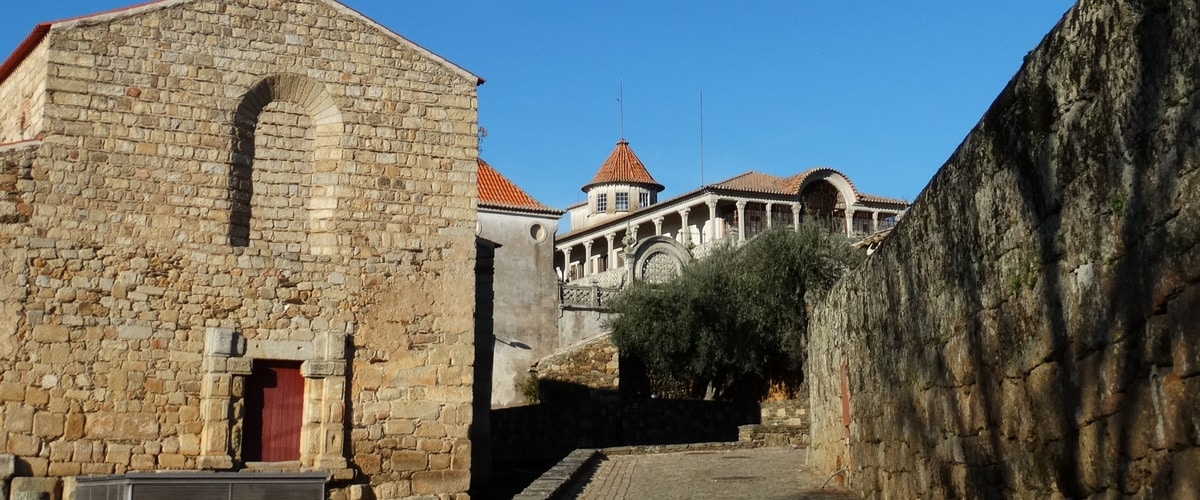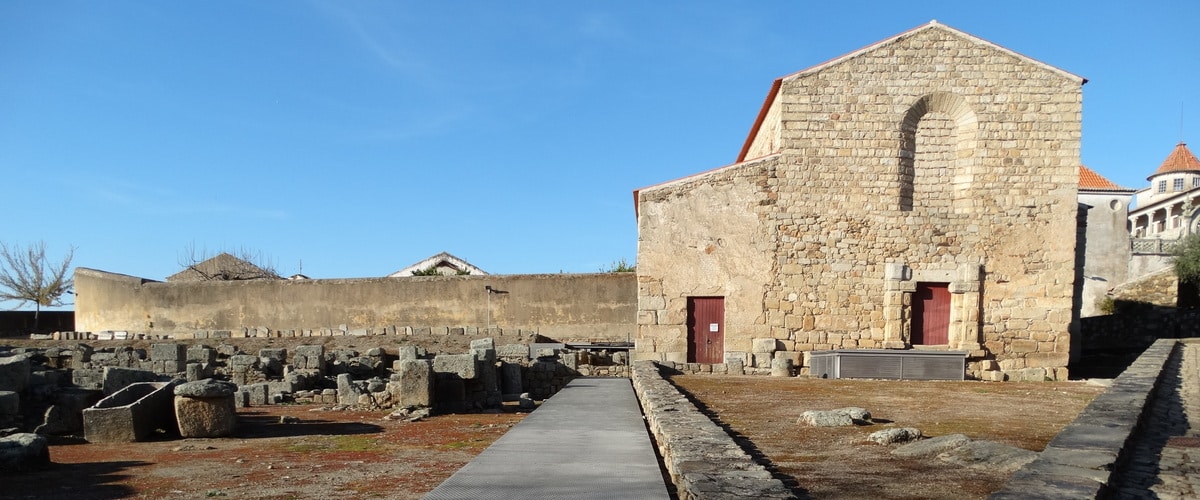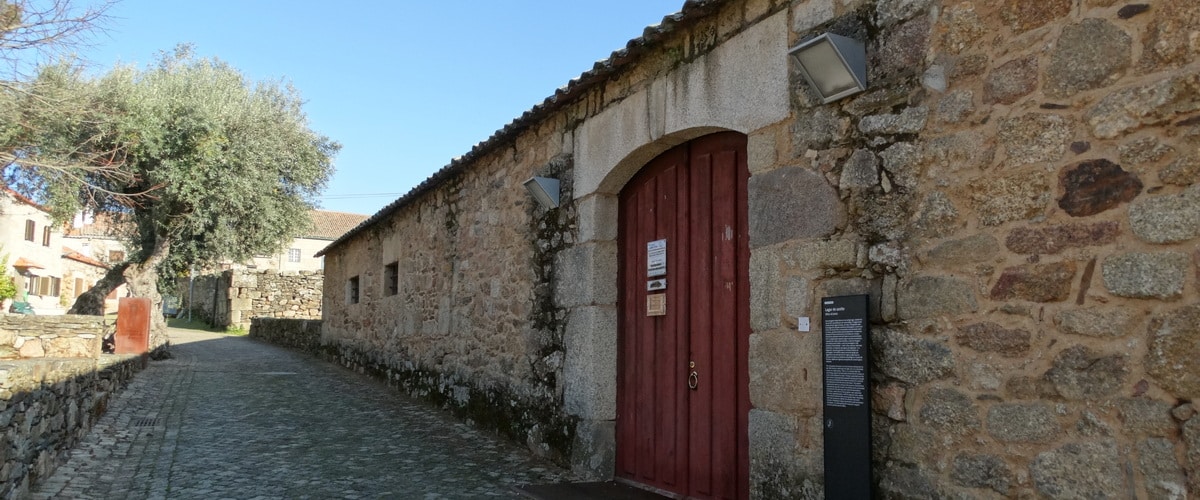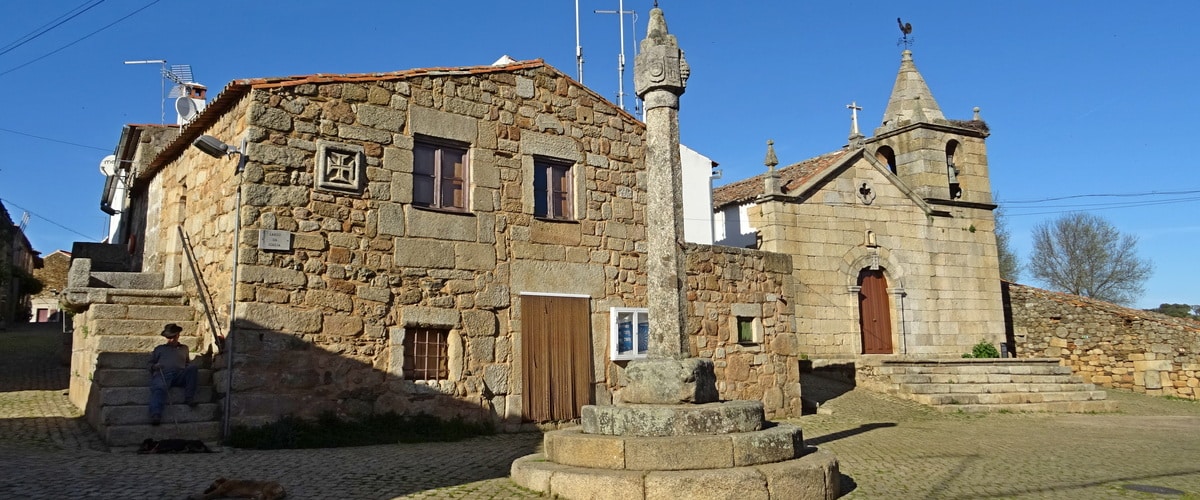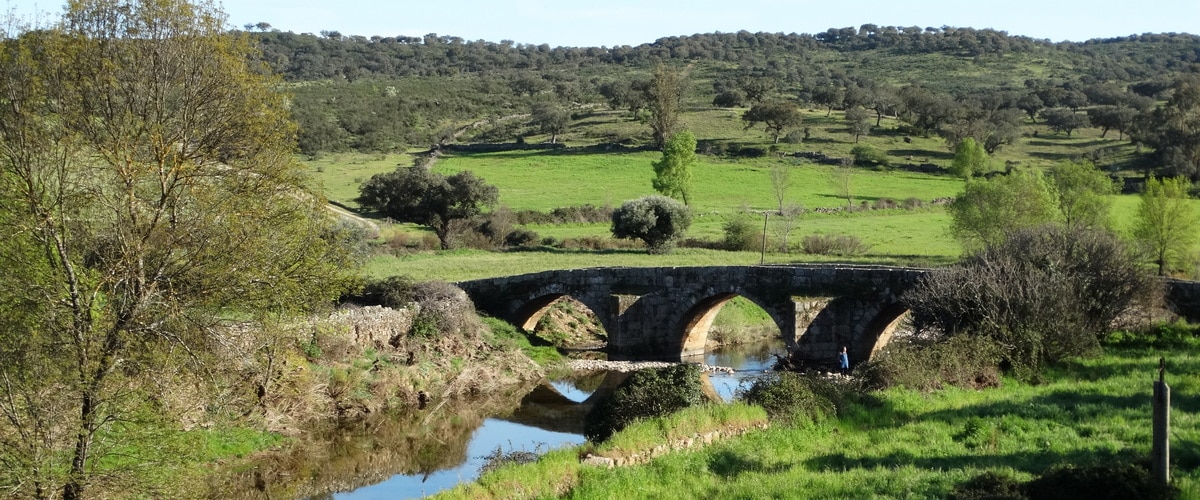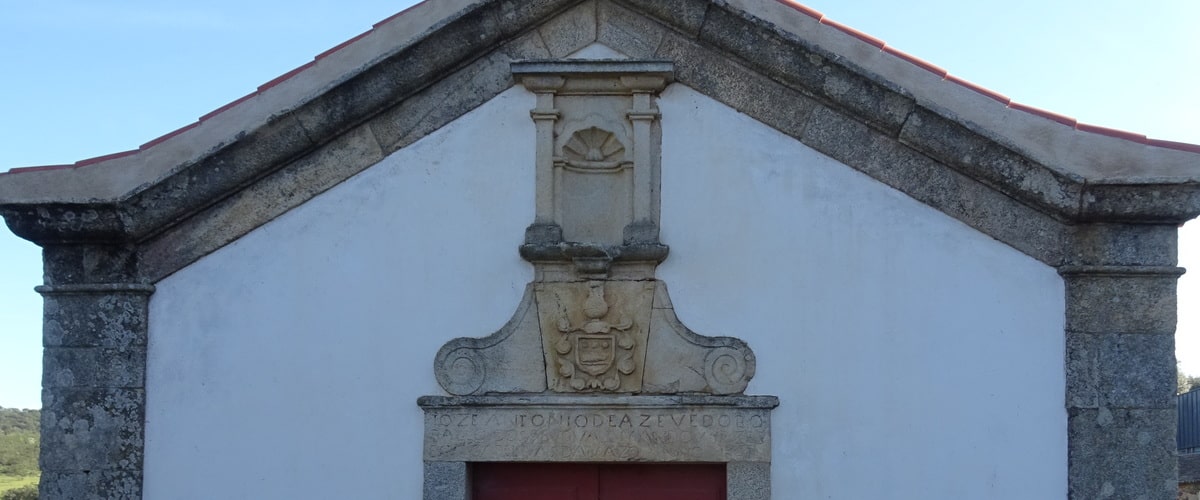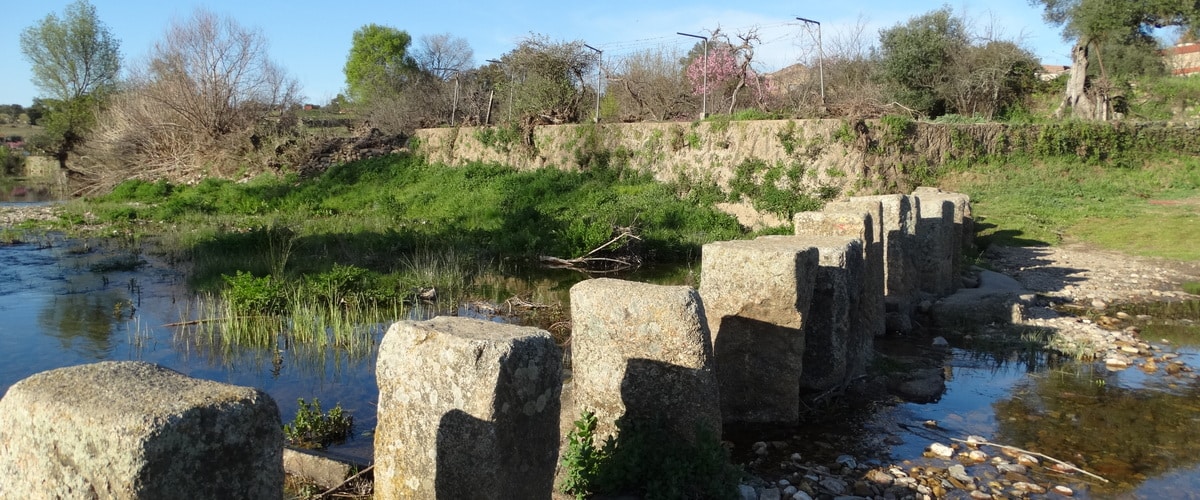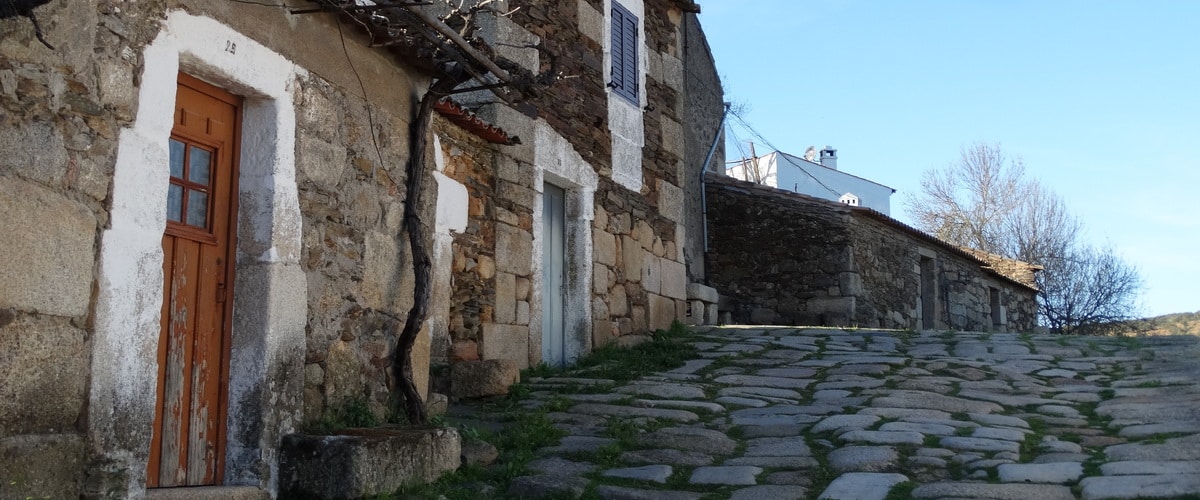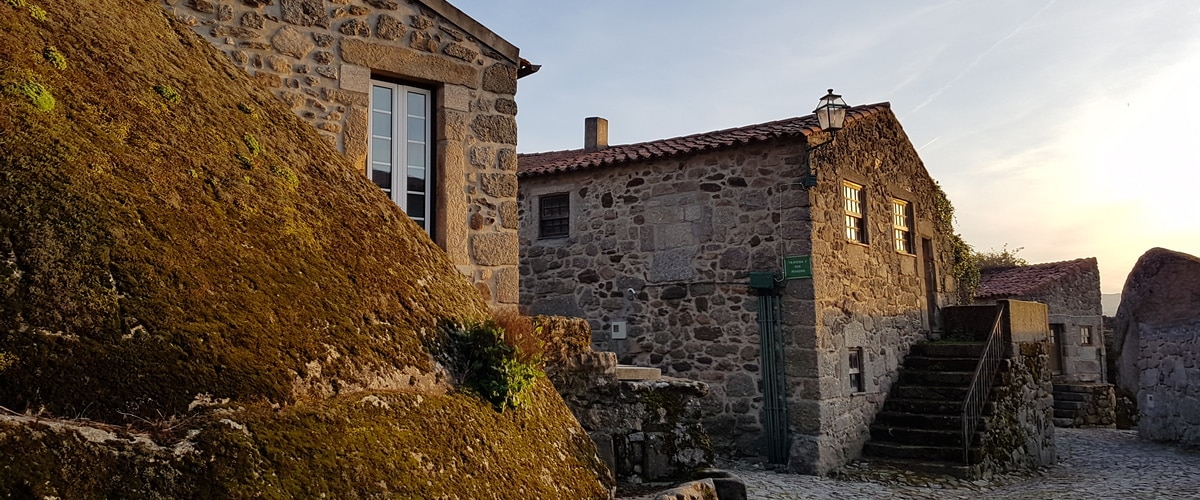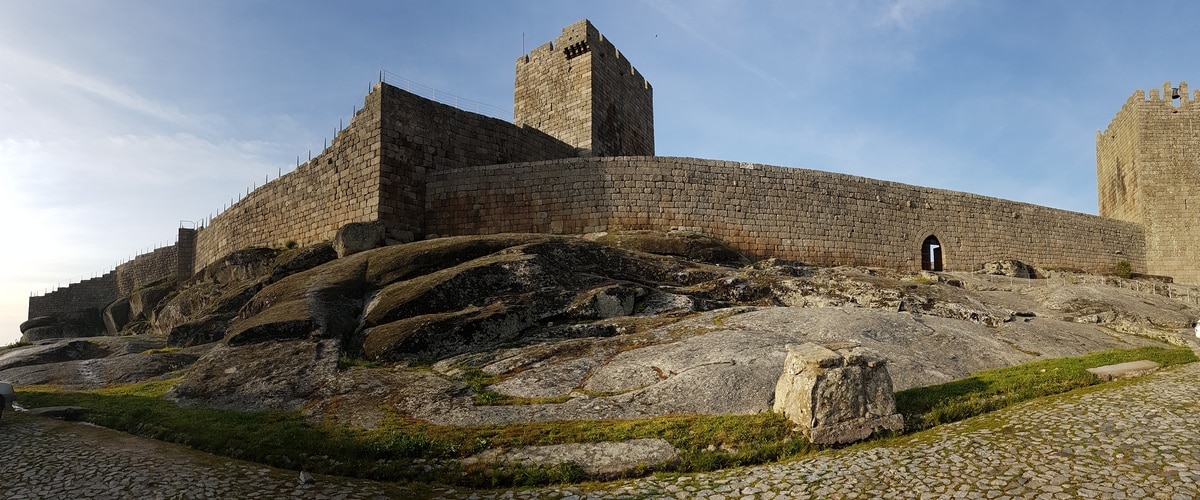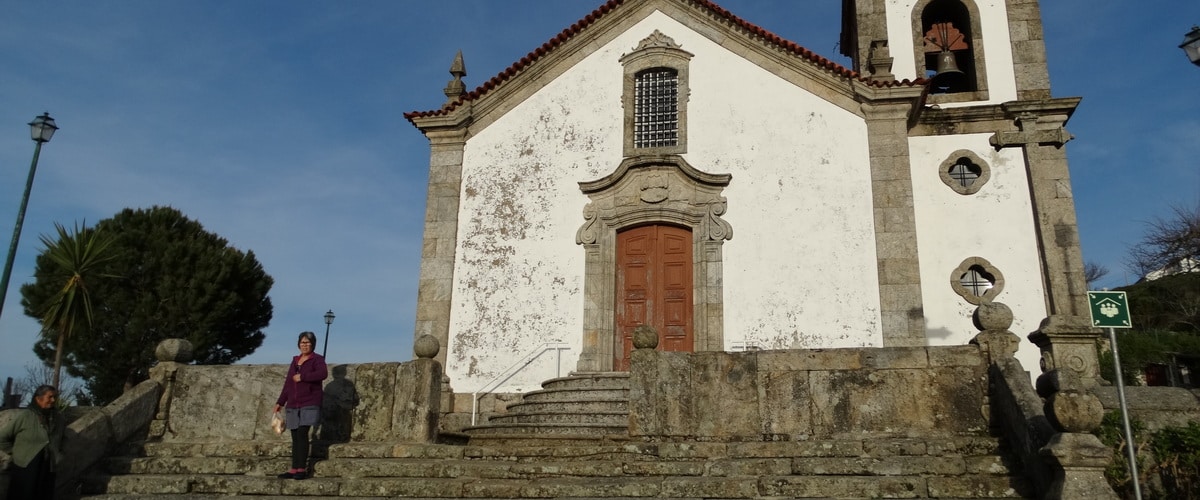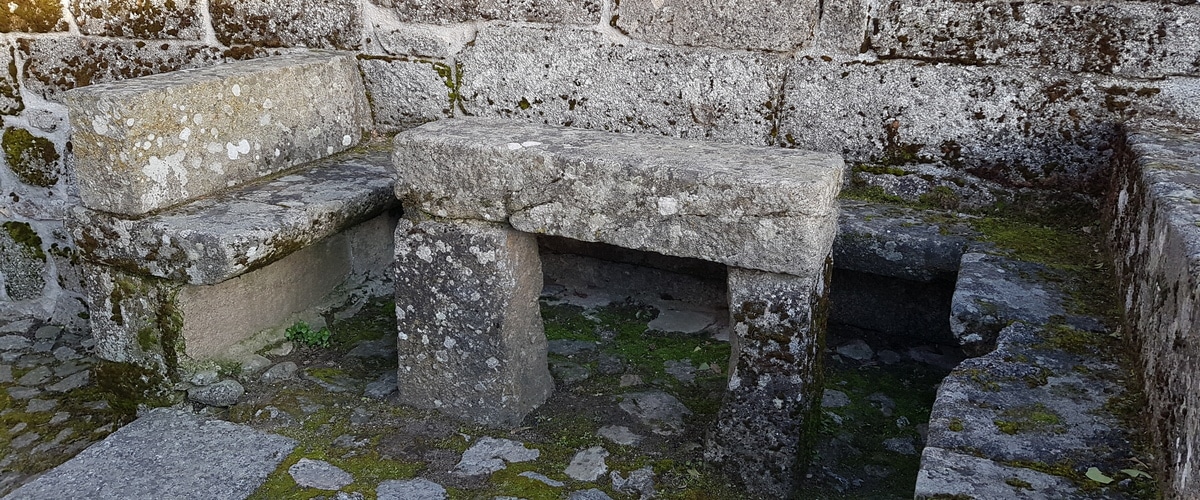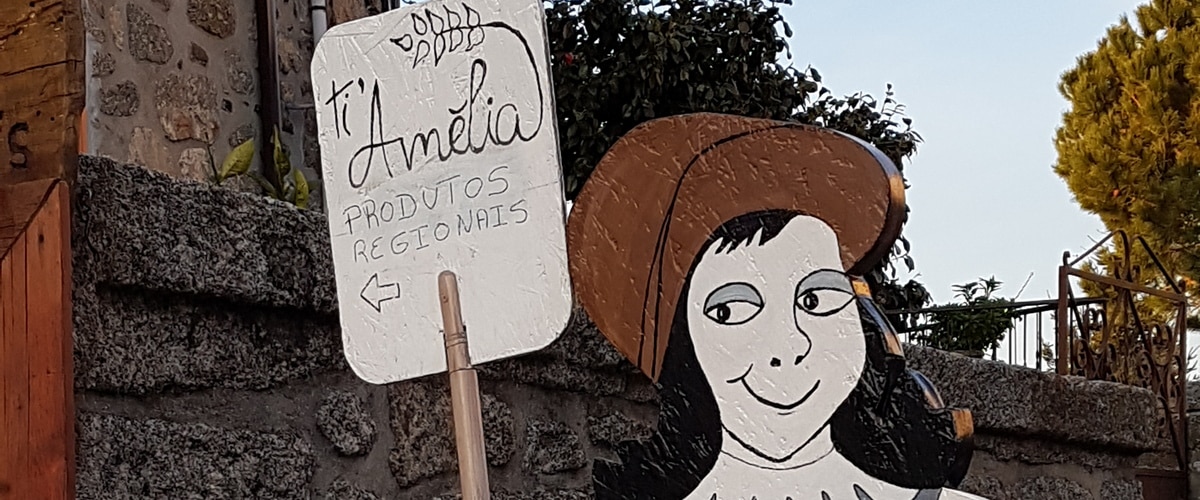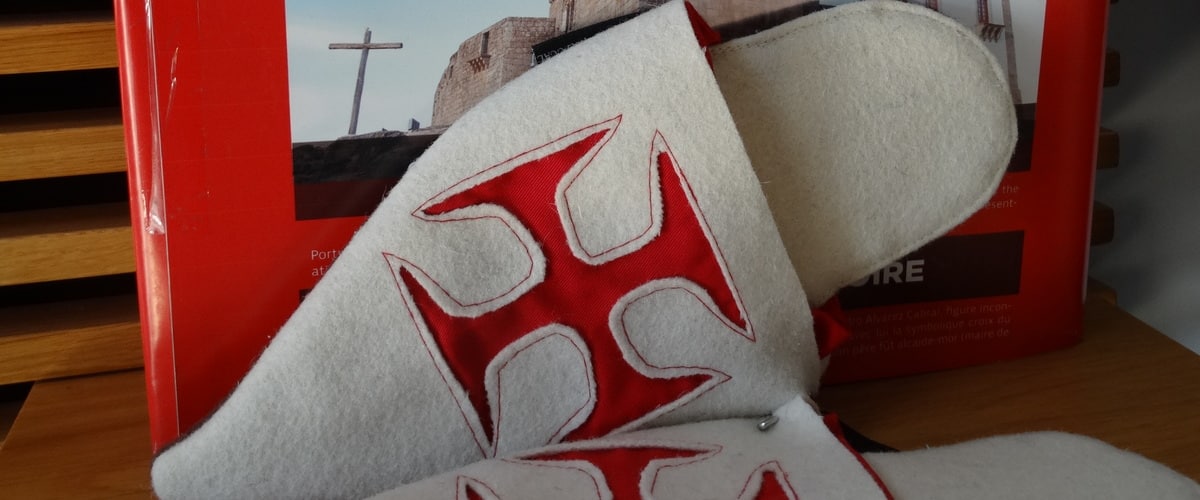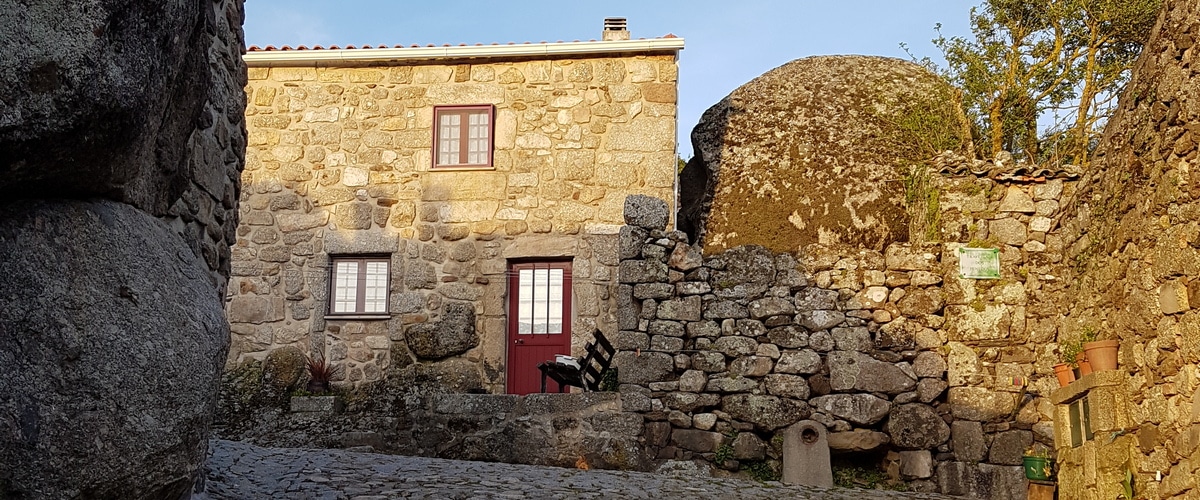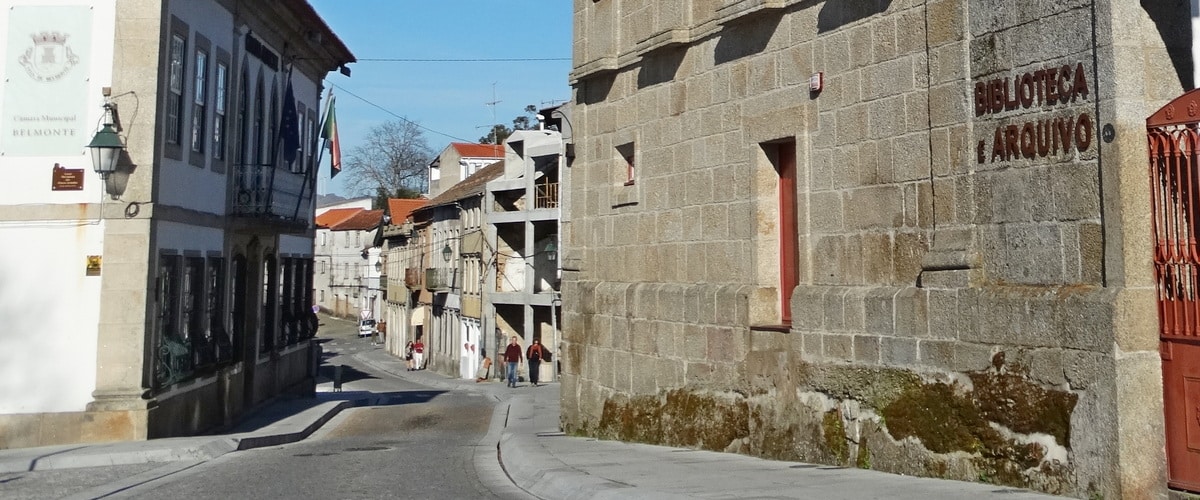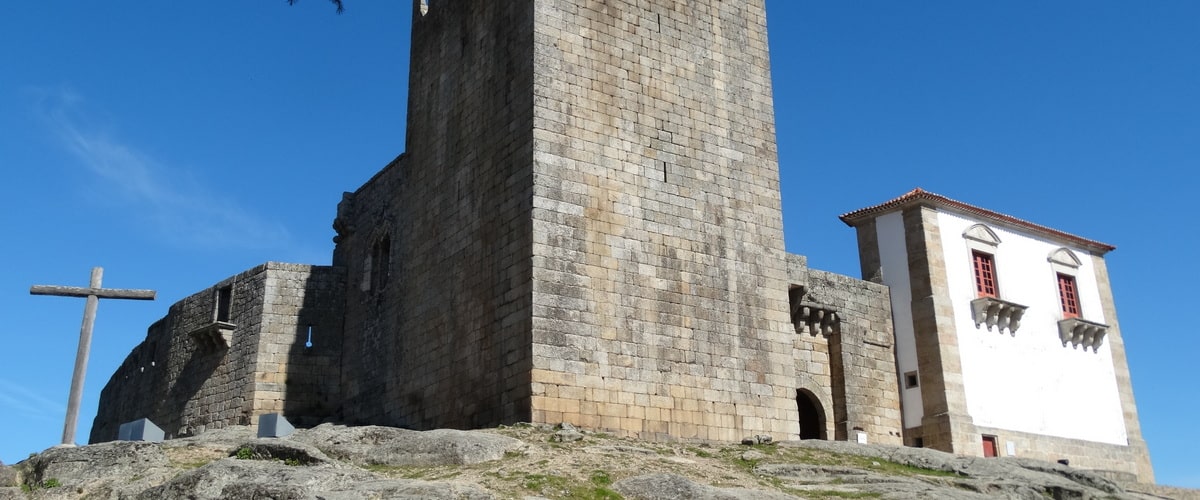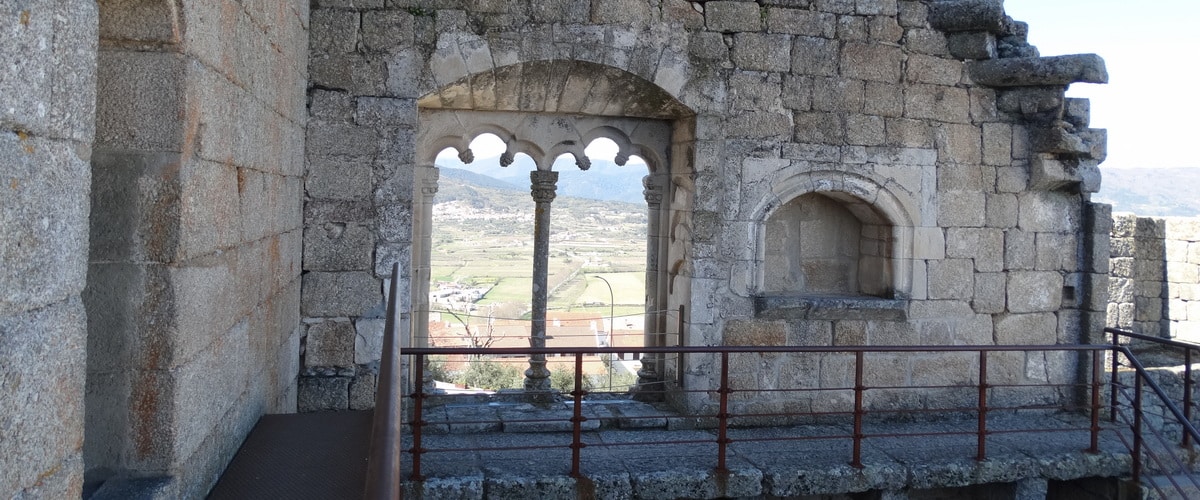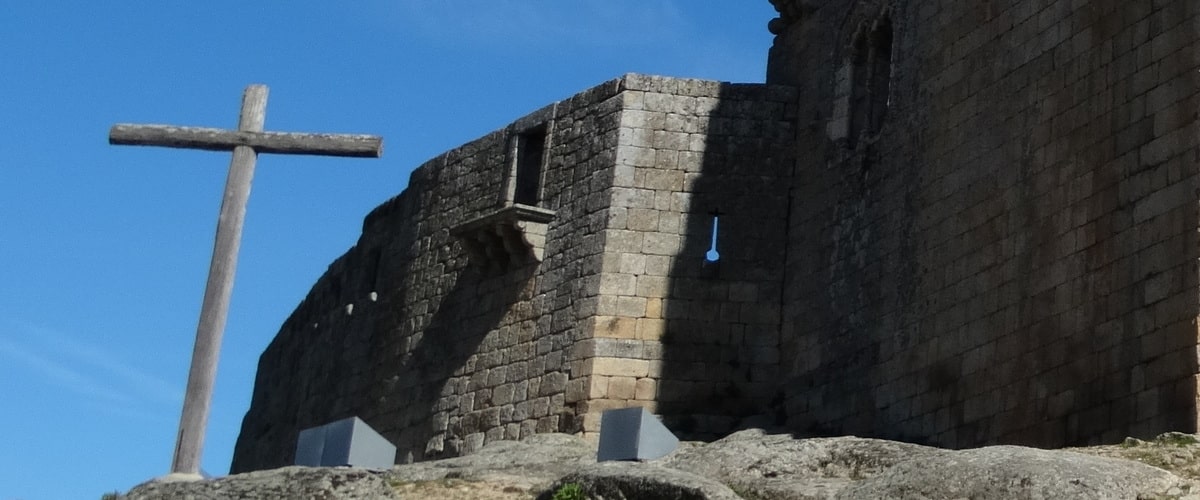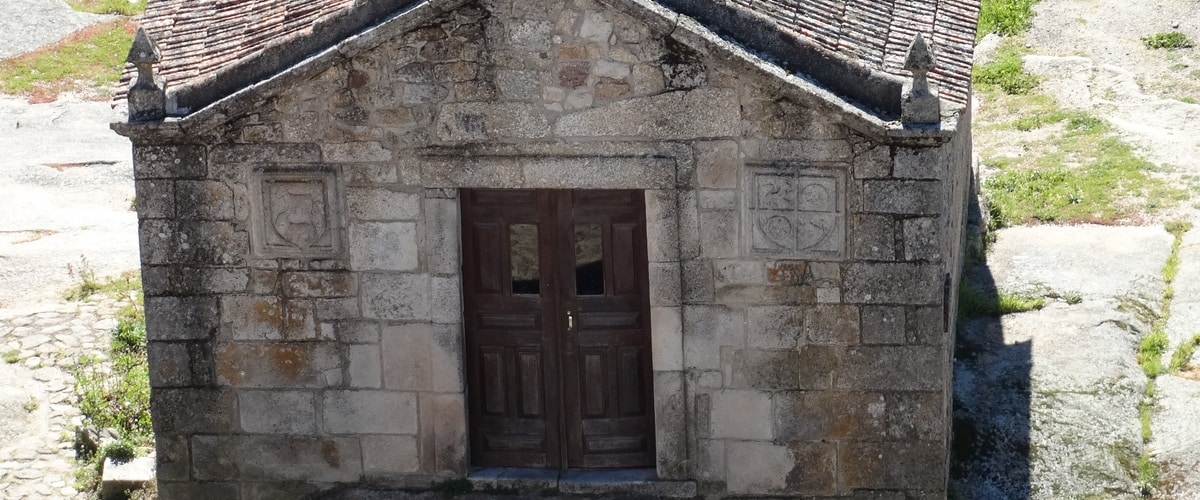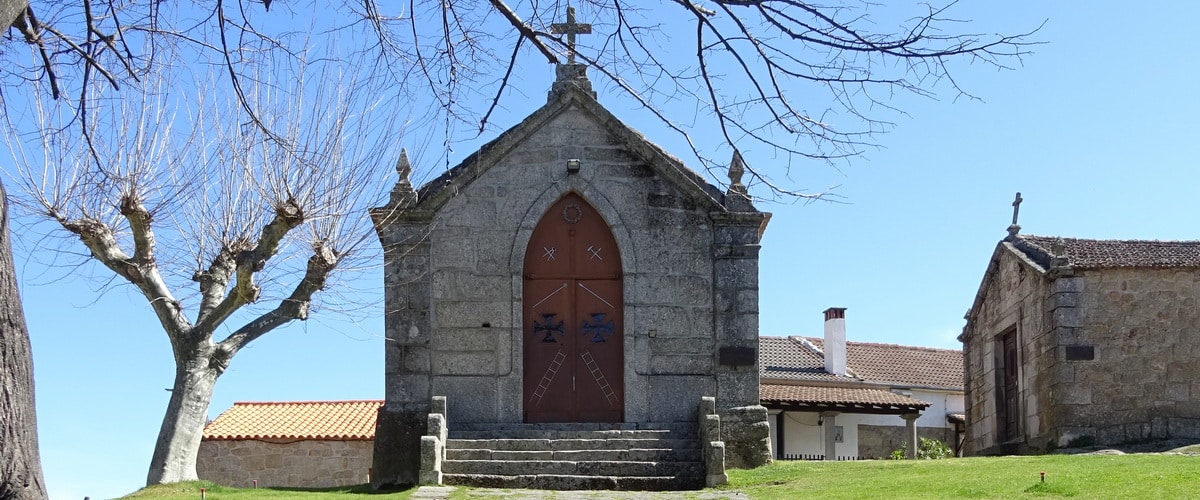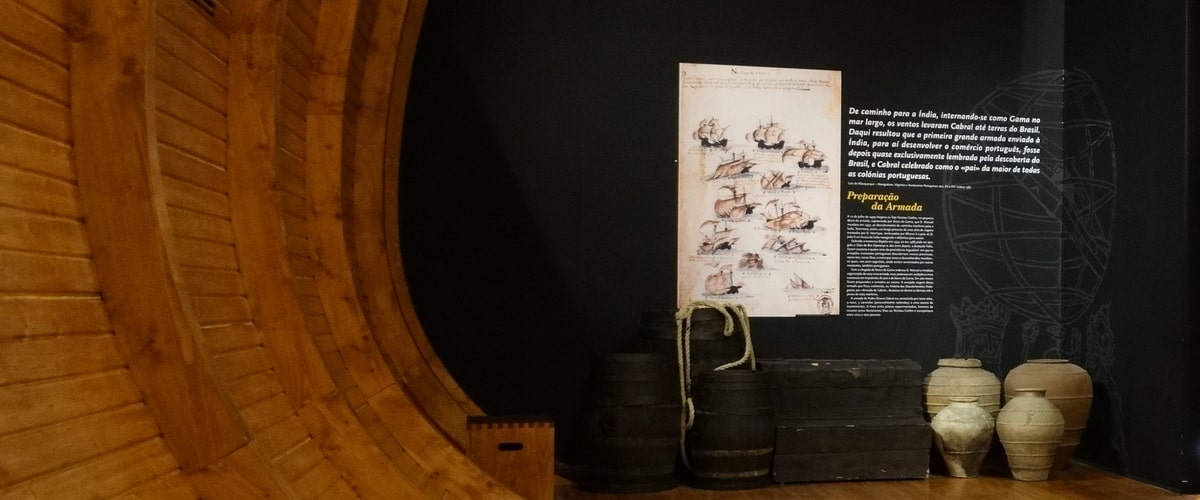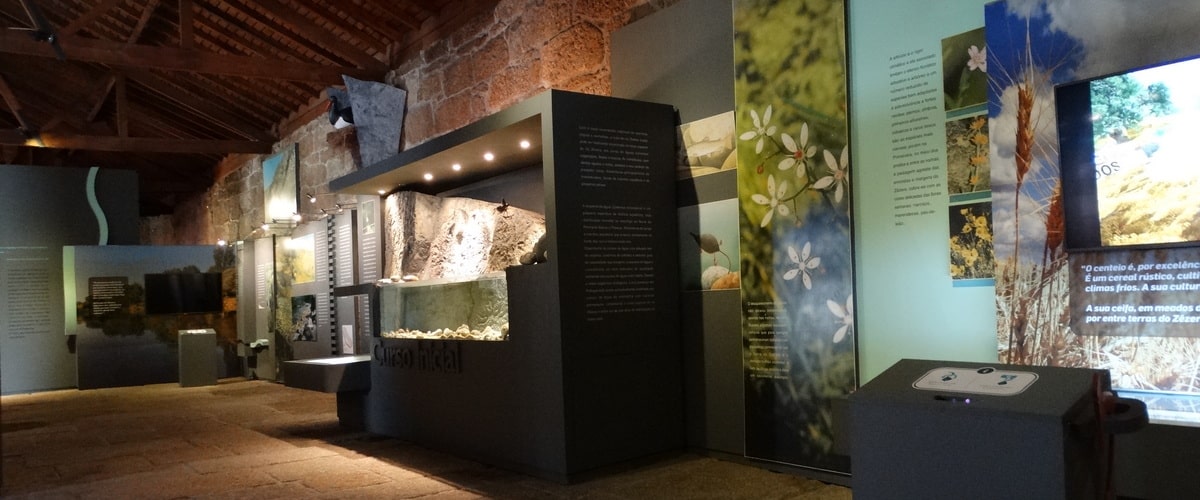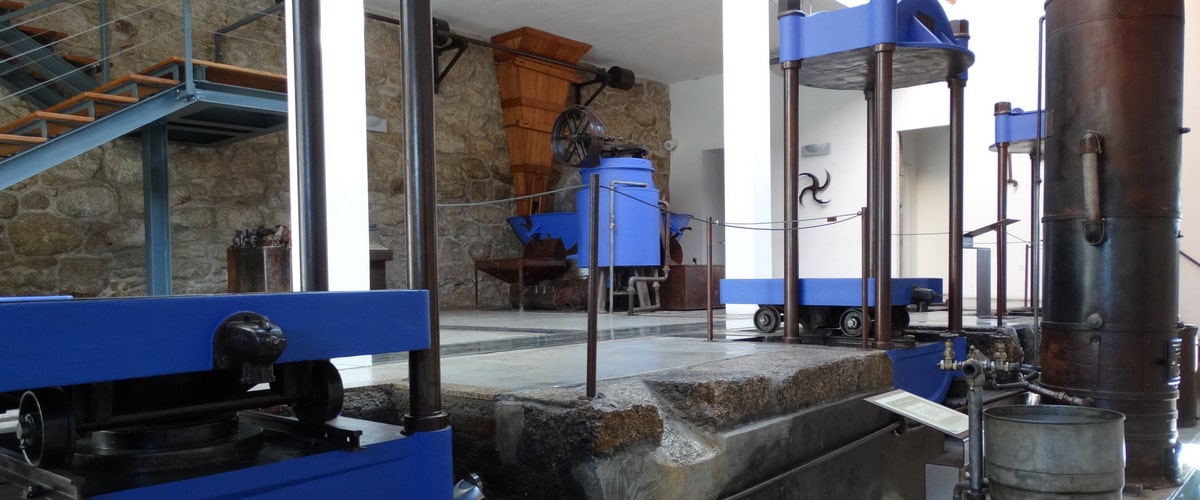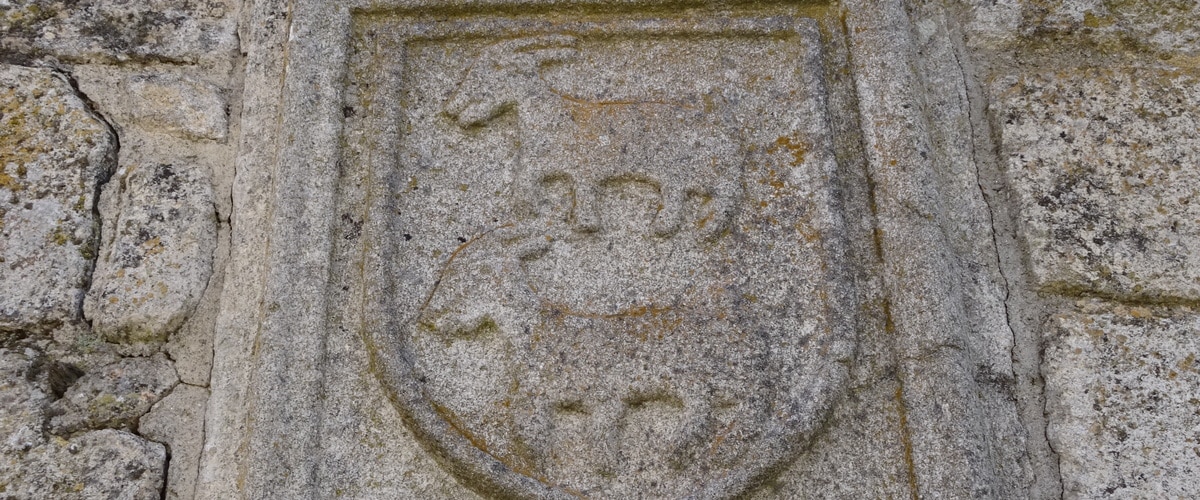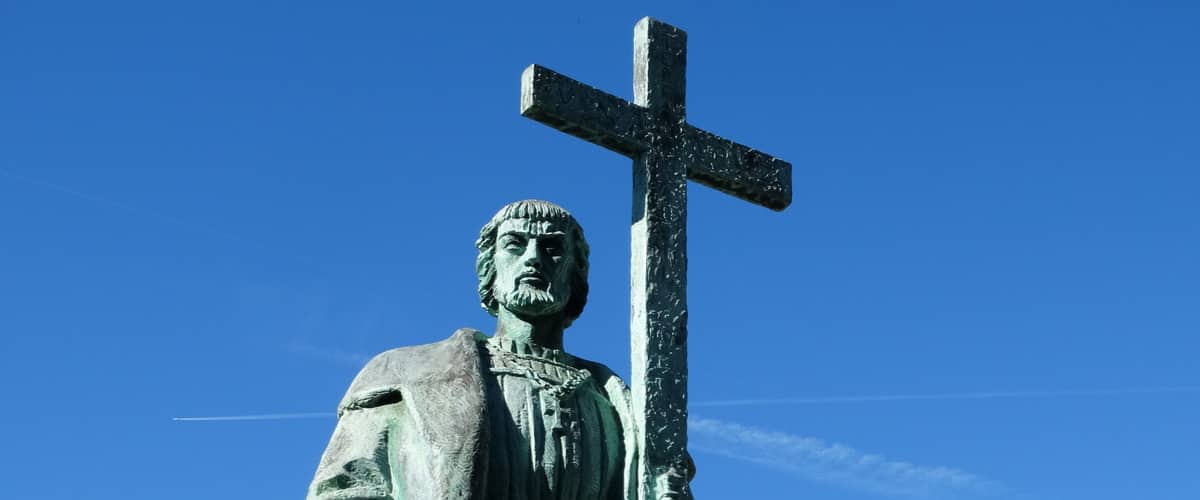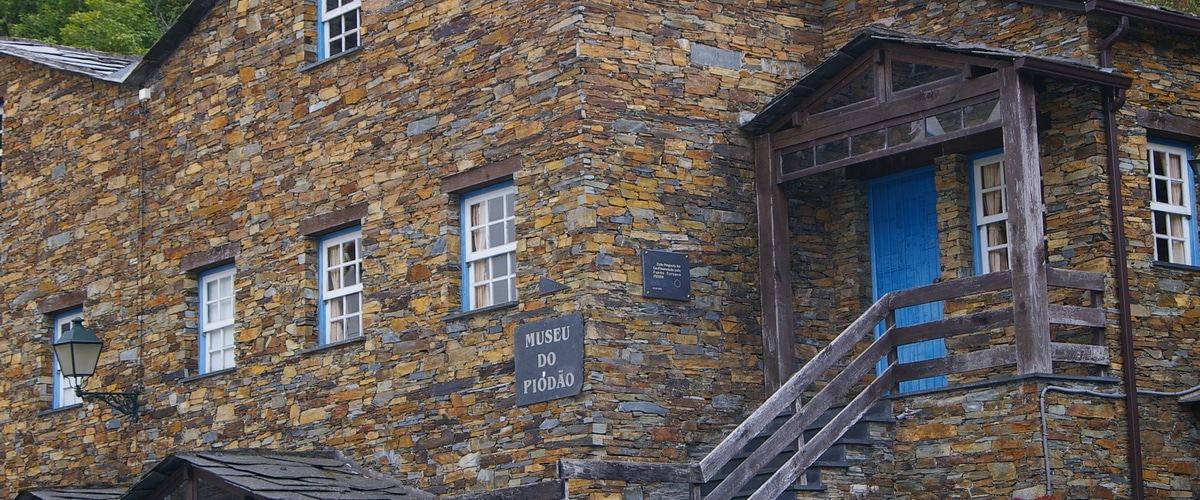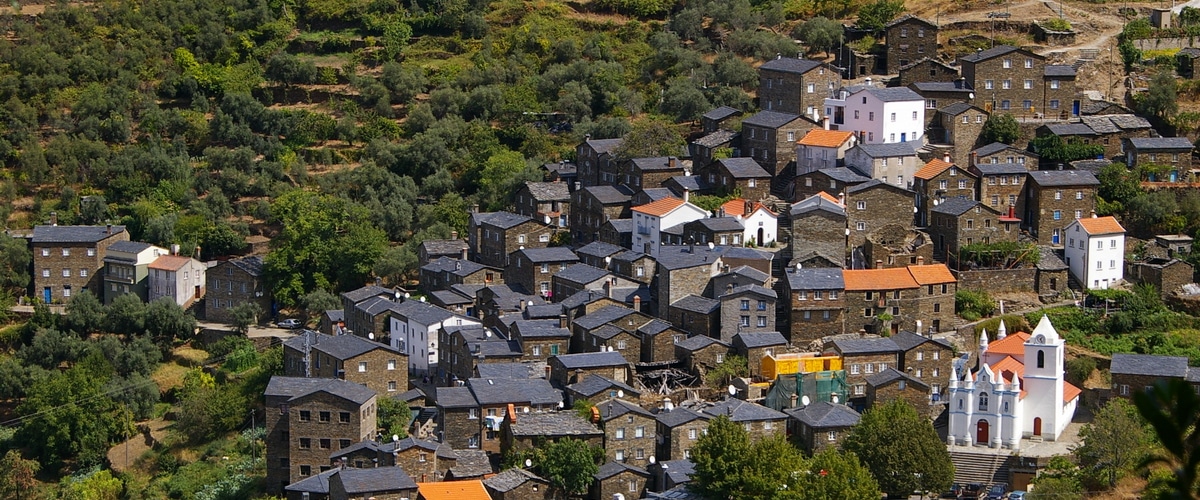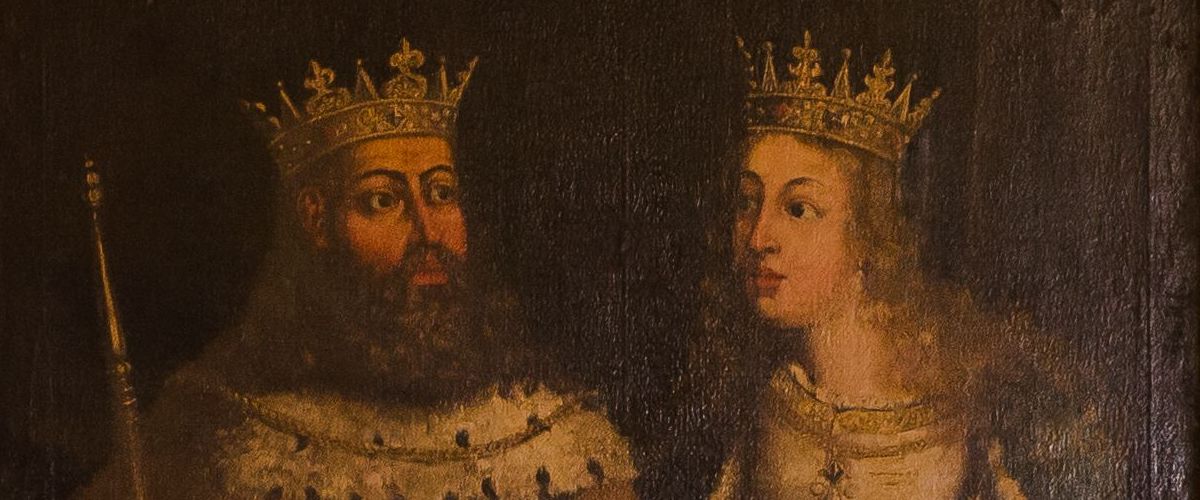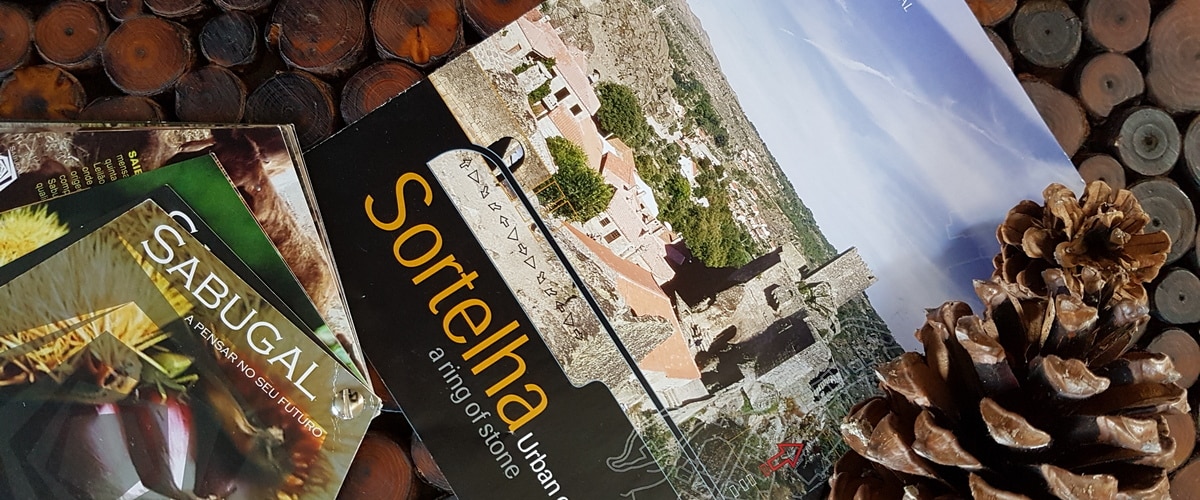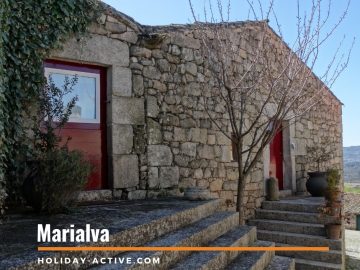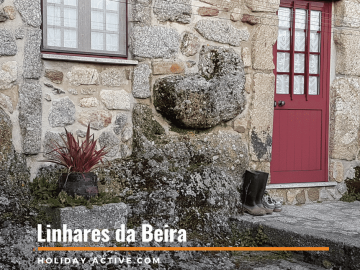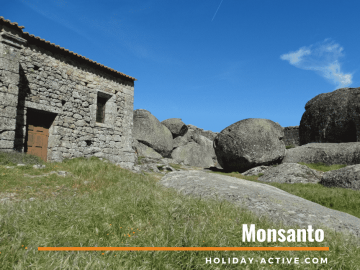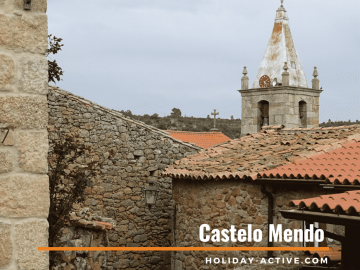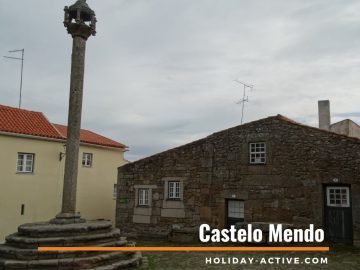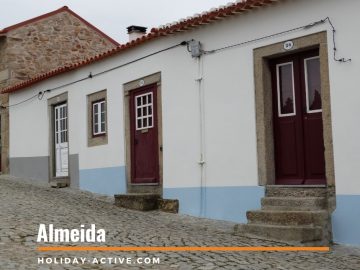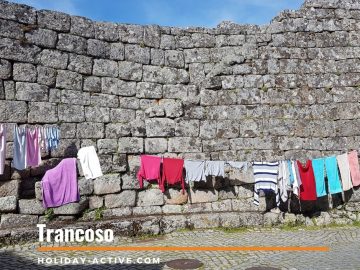Historical Villages of Portugal
When searching for Historical Villages on the map of Portugal, nothing more than 12 small specs appear, however, due to their strategic position, these small villages strengthened and maintained the Borders of Portugal
From D. Afonso Henriques to D. Dinis, who signed the contract that would establish the Portuguese border with Spain (today the oldest in Europe), many were the Kings who offered privileges to those who settled in these lands to fight the enemy and protect the reign
For each hard victory, a chapel or church was erected, legends were created, and new houses were built with the stones available in the province. The rocks that could not be removed were blended into the walls of the house, which combined with the bright painted, red or blue, windows gave them character and grace.
The charm and magic of The Beira Portuguesa can be seen in the 12 Historic Villages that have come together to promote tourism and develop the region. They are: Almeida, Belmonte, Castelo Mendo, Castelo Novo, Castelo Rodrigo, Idanha a Velha, Linhares da Beira, Marialva, Monsanto, Piódão, Sortelha and Trancoso
Come with us and discover the charming 12 Historical Villages of Portugal
Guide to the Historical Villages of Portugal
Castelo Novo
About Castelo Novo
Sheltered by the Serra da Gardunha, in Fundão, the Village of Castelo Novo was bestowed, in testemony, by D Pedro Guterres to the Order of the Templars. The village grew around its walls, between winding and granite streets were manors and cottages, with colourful doors and windows, blend harmoniously. Several fountains decorate and refresh this small village, and the water flows through the streets and alleys were this not the place of choice by the Águas do Alardo (a make of bottled water) to set up their factory
Things to do in Castelo Novo
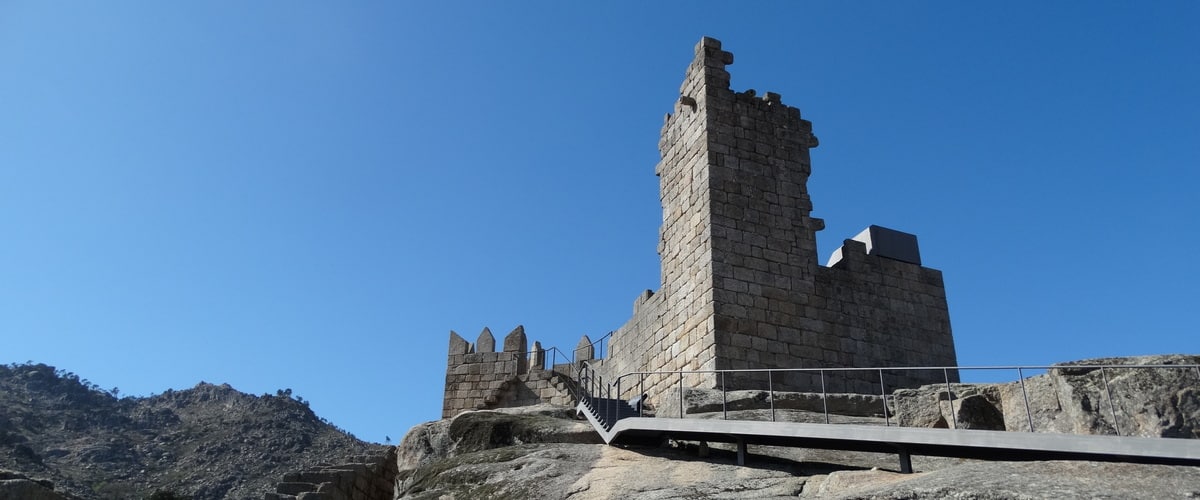
Bell Tower – An ancient keep it is part of the castle walls. It was adapted to a church steeple, currently featuring bells and a clock
Old Town Hall -Political and administrative function building with a 2-story longitudinal plan and prominent arcades. The ground floor served as a jailhouse and the upper level as a council hall
D. João V fountain – An ostentatious baroque ensemble that pays homage to the royal donation fueled by Brazil’s gold during the reign of Dom João V.
Pillory – Probably from the 16th century, Manueline style. The clamping irons at the top represent snakeheads. The pillory finish features a piece with the Cross of Christ, the national shield, the armillary sphere and plant motifs
Atelier das Histórias Criativas (Creative Stories Workshop) – Visit the Gallery of Manuela Justino and discover the project “Histórias Criativas”. A project well achieved between the Historical Villages of Portugal in partnership with the various municipalities. Folk legends from the 12 historical villages were gathered in a book, and Ana Almeida created rag dolls based on those same legends.
The Parish Church – The Parish Church is dedicated to Senhora da Graça, whose white walls contrast with its baroque shapes of granite windows and portals.
Capela do Senhor da Misericórdia (Chapel of the Lord of Mercy) – Built with the money from the sale of medicinal herbs collected in the mountains, and donations from the village’s noblemen.
The Bica Fountain – Upon entering the village of Castelo Novo you will find the Chafariz da Bica. Built in the 18th century in the Baroque style, it bears the coat of arms of D. João V
The Lagariça – Lagariça is a community wine press that dates back to the 7th and 8th centuries. Composed of 2 stone tanks carved on the rock, where, on the upper, larger tank the grapes were stepped on and squashed, and its precious liquid would run down to the lower basin.
River Beach in Castelo Novo – The refreshing waters of the Alpreade stream create a small river beach where there is a lawn with huts and picnic tables
The legend of Belisandra and the plague of locusts
Belisandra was a girl accused of witchcraft. It was said, through the village, that she controlled the sun and rain, cured diseases, and taught the best way to conceive heirs. She lived in the company of her cat, near the village of Castelo Novo and was consulted in secret since in public everyone shied away from her.
One day a plague of locusts covered the sky, threatening crops. The people in their distress turned to Belisandra, who advised them to make a procession to Our Lord of Mercy. Legend has it that the procession was still in the churchyard and the locusts were already falling to the ground
Today the procession still takes place on the first weekend of September
I hope you enjoyed your visit to Castelo Novo. Be sure to visit another Portuguese Historical Village
Castelo Mendo
About Castelo Mendo
The village of Castelo Mendo and its Castle, built in the first half of the 13th century, during the reign of D. Sancho II (123-1248), had a defensive function against disputes with the neighbouring kingdom of Spain. Castelo Mendo’s charter dated from 1229 and granted and regulated the first free fair in Portugal.
The medieval village of Castelo Mendo is divided into two sections. The church and the castle are part of the Citadel (Burgo Velho), with an oval shape. The Barbican (Burgo Novo), more irregular, with narrow streets, integrates the urban fabric of the 14th to 17th centuries. The houses are generally of 2 floors, where the ground floor was for the cattle and the upper floor for housing
Today, Castelo Mendo still preserves its medieval architecture, with Manueline windows and porch verandas.
What to visit in Castelo Mendo
Castle –The castle that was built here in the 13th-14th century. At the southern end of the citadel, remains a door that led to the oldest part of the castle.
Church of Santa Maria do Castelo – Despite the degradation to which the Church finds itself when climbing the small staircase, one enters into a magical world. It preserves little more than the walls, the base of the pulpit and a staircase; however, this open-air church is enthralling and soul-lifting
Ancient Domus Municipalis – This building included the Jailhouse, the Court and the Town Hall. Today it houses the Castelo Mendo’sTourism Office as well as the Museum of “do Tempo e dos Sentidos”, dedicated to farming.
The story of Mendo e Menda – On the facade of the old Casa da Câmara, you will find the sculpted figure of Mendo. On the opposite side, on the wall of a rustic house, the figure of a woman, Menda. There are those who say that both lived, in silence, a great passion, through mutual contemplation.
Pillory – The main square has the Igreja Matriz (Parish church), and beside it is the pillory. It is the tallest in Portugal with seven meters. It ends with a capital in the shape of a cage.
The Porta of Berrões, where there are two Celtic pigs (The Pigs door) – Berrões are statues sculpted in granite stone, with zoomorphic figures. The most frequent figures are male pigs. The word “berrão” was inspired by the term used to designate uncastrated pigs.
What to taste
Try the Bola Parda, a cinnamon cake usually eaten during Christmas
Thank you for visiting Castelo Mendo with holiday-active.com
Almeida
About Almeida
Located on a plateau over the Côa River, Almeida was the stage of several wars between Castilians and Portuguese, being finally conquered by D. Dinis in 1296.
Several restructurings and expansion of the fortifications were carried out in particular by D. Dinis and D. Manuel, but it was in 1640 that the great the bulwark in the shape of a star was built. There are 2500 meters of walls in the shape of a 12-pointed star, which allowed for crossfire, surrounded by a moat 12m deep and 62m wide. Such military engineering was able to withstand the attacks of the Spanish armies during the Portuguese of the Restoration of Independence Wars
The explosion of the armoury in 1810, during the French Invasions, devastated part of the village. Almeida’s siege began on July 24, and for more than a month, it was effective until the French decided to bombard, non-stop, the town, launching more than 6,000 grenades. Unfortunately, one hit a powder keg, causing the entire magazine to explode, creating a sea of flames. Amid this catastrophe, miraculously, it began to snow, drowning out the devouring fires. On the wreckage appeared the image of Nossa Senhora das Neves.
Today there are historical recreations of the Siege of Almeida on the last weekend of August. The shop “Casa do Traje” offers period costumes for each visitor to take part in this event and there is even a currency of the event, for trade
Almeida Attractions
Entrance doors in Almeida – Almeida’s giant double doors protected the village in case of attack, and shelter for the soldiers who served there, so inside you will find large fireplaces and outside a stone latrine.
Portas de S. Francisco or Portas da Cruz (doors) – The doors are are double structures, opened in a tunnel, accessed by masonry bridges. Defended by revelins, they resisted explosive charges. On top are represented the royal arms. As the square is surrounded by massive walls, communication with the outside could only be done through this door and that of Santo António.
Fortification Wall – The fortification walls date back to the period immediately after the Restoration of Independence and the fear of a Castilian response. The plant has a hexagonal shape and began to be built in 1640 and was carried out through four decades
Quartel das Esquadras (Barracks) – Built by the Count of Lippe in the 19th century. XVIII, this building of Baroque characteristics served as Barracks of the Infantry. On its facade, it bears the Royal Coat of Arms.
Castle Ruins – Of the medieval Castle meanwhile destroyed, only the foundations and the moat remain. Of sub quadrangular plan it was defended by circular turrets. Probably built in the time of Dom Dinis
Visit the Picadeiro d’El Rei (Horse riding school) – A well-maintained arena that offers riding and saddle lessons. It promotes horseback riding or horse-drawn carriages through the village with a brief historical explanation of the various places along the way
Casas da Roda dos Expostos (Foundling wheel) – In the 19th century, various Casas da Roda dos Expostos (foundling wheel) were set up in the country. They played a fundamental social role in retrieving abandoned newborns. Strategically located on Rua da Muralha, near a side entrance to the fortification. This window has a rotating mechanism that prevents those who receive the child from seeing who placed it there.
Cemetery – The abandoned-looking cemetery, next to the clock tower, detain us and quenches any kind of presumption we may still have of our immortality, with its inscription.
“O whoever you are. Notice how I look. I was once as you are And you will be as I am”.
Carpe diem
Almeida Military History Museum – Known as Casemates or Old Barracks, the museum is located in the basement of the Bastion of São João de Deus. Twenty underground houses served as accommodation for the Infantry, today they contain the warlike testimony of the soldiers who fought for this land
What to taste
Ginjinha de Almeida (Bitter cherry liqueur) – In the small shop, Casa da Amelinha, founded in 1883, you will find this delight.
Castelo Rodrigo
About Castelo Rodrigo
The village of Castelo Rodrigo was a land whose rule was disputed between the two borders.
Afonso IX de Leão (Spain) founded this medieval settlement after conquering Riba-Côa from the Muslims. It was an important part of a set of fortifications established along this river
D. Dinis conquered Castelo Rodrigo from the Leonese monarch and ordered the construction of the keep and the initial wall that surrounded this medieval village
Castelo Rodrigo, during the Portuguese dynastic crisis of 1383-1385, swore allegiance to the Castilian party and to the heiress Beatriz, refusing entry to the Mestre de Avis. Later, as king D. João I, he ordered, as a penalty, that Castelo Rodrigo bore its coats of arms upside down, the symbol of a dishonoured house.
With the rise to the throne of Filipe I, the monarch offers his secretary, Cristóvão de Moura, born in Castelo Rodrigo, the title of Count of Castelo Rodrigo. His successor, D Filipe II, granted him the title of Marquis and Viceroy of Portugal. Something that was deeply rejected by the Portuguese
Despite the Restoration of the Independence of Portugal in 1640, the village of Castelo Rodrigo continued to live in dispute, with the Spaniards trying at all costs to retake the lost domain.
On 7 July 1664, the Battle of Salgadela took place. A Spanish force of 5,000 men under the command of the Duke of Osuna, forced their entry into Portuguese territory by the Beira border, forming a siege on the village of Castelo Rodrigo, which at the time was only manned by 150 men.
On the walls, slaughtered by enemy bullets, Portuguese soldiers ran from side to side, trying to deceive the Spanish and give the impression that their number was greater than that which the sad reality represented, praying fervently to Santa Maria de Aguiar, Patron Saint of the County, and whose convent is within walking distance
Legend has it that a woman, indifferent to danger and racket, walked around the grounds near the castle, picking up the bullets from the ground and offering them to the Portuguese soldiers, who were in dire need of them. The Spaniards, seeing such a debacle, aimed their guns at her and fired tirelessly, but, as if by a miracle, the bullets fell at her feet. At one point, the lady rises into the air and disappears into the clouds.
It was Our Lady of Aguiar, Patroness of Castelo Rodrigo, who had helped them,
Annually, in Castelo Rodrigo, this battle is recreated with the population dresses up in costumes. It was one of the most decisive battles during the Restoration period, and Portuguese success in this borderland was central to the preservation of independence.
Things to see in Castelo Rodrigo
Castle of Castelo Rodrigo – D. Dinis had this castle rebuilt and the walled belt supported by semicircular turrets. D. Fernando repairs the walls after the rough battles during the reign of D. João I. In the 16th century, D. Manuel rebuilt the fortress.
Unfortunately, the Castel of Castelo Rodrigo fell into an advanced state of ruin. However, in 1990 rehabilitation works started, and the dutiful preservation carried out has now made it feel like an authentic trip in time as soon as one passes through its doors.
Palace of Cristóvão de Moura – Construction started in 1590 in what would have been the old castle alcove. It was ordered by Cristóvão de Moura. At the end of the Philippine rule, the population, who never accepted Cristoão de Moura as Viceroy of Portugal, set fire to the palace.
Main Castle Gate – Carried out during D Dinis’ reign it is flanked by two turrets with the royal coats of arms. The balcony is equipped with “matacães”: openings on the floor of the small balcony that allowed the vertical shot over whoever approached, from which the supports still survive. Cristóvão de Moura added a pediment with a coat of arms
Clock tower – Installed in one of the 13 old turrets, the tower has a clock moved with weights
Cross-shaped embrasures – Initially, they were vertical slots used for archery. These T-shaped embrasures were introduced later, after the appearance of artillery piece
Pillory – D Manuel I offered the Charter to Castelo Rodrigo. Its pillory with 5 steps is the proof of the authority bestowed upon Castelo Rodrigo.
The church of Nossa Senhora de Rocamador and its image of Santiago Mata-mouros – The parish Church of Castelo Rodrigo is of Romanesque style and worships its patron saint Our Lady of Rocamador.
The church was built in the 13th century by the Brotherhood of Hospitable Friars, whose main duty would be to support the pilgrims who were going to Santiago de Compostela. Inside the church, there is the image of Santiago Matamouros (moor killer) stepping on the figure of a Moorish warrior.
Medieval Cistern – It is believed that it may have been an old synagogue. With two entrances, one in the Gothic and the other in Arab style. They gave access one, to the place of worship, and another to the Mikvé, which was intended for liturgical baths.
The destruction of the synagogue occurred at the time of the expulsion of the Jews, ordered by D. Manuel I, and was later reused for a cistern/water reservoir.
King’s Chair: A seat carved into the rock
Castelo Rodrigo Winery: One of the most modern and dynamic wineries in the region. It produces a unique wine. Even though it is made from white grapes, it acquires a curious salmon-pink colour.
What to taste
Borrego da Marofa (Lamb) – Bred in the Serra da Marofa, it acquires a distinct flavour. Also give the local sausages a try, especially the bone chorizo
Sweet Almonds: Sold in Sabores da Geninha e Sabores do Castelo
Cantinho Café. Craft beer
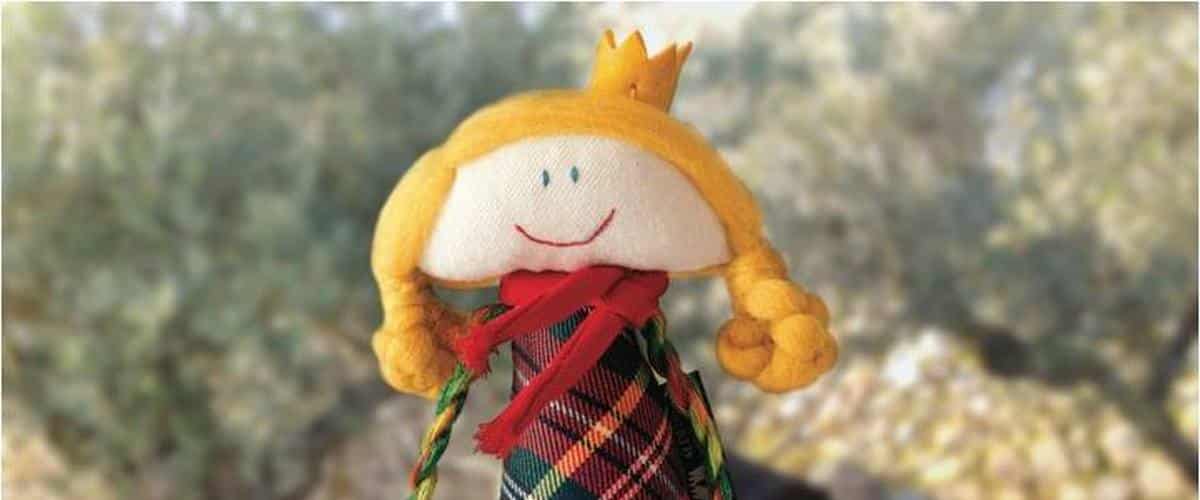
I hope you enjoyed your guided tour to Castelo Rodrigo until next time
Trancoso
About Trancoso
The village of Trancoso is a history lesson in stone.
One of the main villages in Portugal during medieval times. Due to its strategic position, it proved fundamental in the preservation of the nation’s independence and the maintenance of its borders.
Trancoso belonged to Dom Chamôa Rodrigues. In 960, it was the subject of constant disputes between Christian and Muslim armies and in the following decades between Portugal and its neighbouring kingdom. Conquered by D Afonso Henriques, in 1160, it experienced a period of great commercial and subsequently population development, so D. Dinis ordered the extension of the perimeter of the wall.
It was here, in Trancoso, that D Dinis celebrated his wedding with the Holy Queen, D. Isabel de Aragão, in 1282
During the dynastic crisis that followed the death of D. Fernando, Trancoso was the scene of the confrontation between armies supporting the Master of Avis I and Castilian troops (Battle of S. Marcos). The Portuguese army inflicted heavy losses on the Castilian forces, contributing largely to the resounding victory of Aljubarrota
With the installation of the inquisition in Portugal (1536) the village of Trancoso, which housed one of the most numerous Jewish communities in Beiras, experienced troubling moments. More than 500 lawsuits were brought against the New Christians in Trancoso, essentially for practices of Judaism
Trancoso belongs to the network of Historical Villages, a village of great beauty praised for its streets embroidered with hydrangeas in bloom and the hospitality of its people. A land that seems to spring up artists such as Gonçalo Anes, better known as Bandarra and painter Eduarda Lapa.
What to visit in Trancoso
The castle – Fortress prior to the Portuguese nationality, it was reinforced by D. Dinis, who ordered the addition of five towers. The bulwark was restored in 1173, 1282, 1530 and 1940
The Keep – Mozarabic tower, already referred to in 961, was later incorporated into the castle grounds and functioned as a keep
Bulwark – It includes 5 rectangular towers, crowned by parapets with pentagonal battlements. The sixth tower, facing east with a square plan, actually corresponds to the main chapel of the very ruined Chapel of Santa Maria Madalena
Look for the various inscriptions left by the men who built the castle of Trancoso. They left their signature carved in stone
Judiaria and Casa do Gato Preto (Jewish quarter) – The Gato Preto house, also known as the Lion of Judah house, is one of the greatest legacies of Trancoso’s Jewish heritage. Former synagogue and residence of the rabbi it has on its facade several representations, one of which is identified as the Lion of Judah, the symbol of one of the tribes of Israel. You can find out more about the Jewish community in the Isaac Cardoso Jewish Interpretation Center, at the centre of the old Jewish quarter, it houses a replica of a Sephardic synagogue that everyone can enjoy.
Former Beresford Headquarters – It was in Trancoso, in 1809, that General Beresford set up headquarters while in Portugal as an ally against the Napoleonic invasions. For such he used this house, dating from the 14th century. Later he was awarded the title of Count of Trancoso
Porta d’El Rei El Rei (King’s Doors) – The doors of El Rei, so-called because these were the doors from which the kings entered the village arriving from Lisbon or Coimbra. They are decorated with the royal arms and councils.
Chapel of São Bartolomeu – The imposing Porta d’El Rei is the main entrance to Trancoso and also a tribute to D. Dinis who here celebrated his marriage to Isabel de Aragão, in 1282, at the Chapel of São Bartolomeu.
D. Dinis offered the town to Isabel of Aragon as a dowry and instituted the frank fair. It was the beginning of the great Feira de Trancoso (market) that still takes place on August 15th, the day of the patron saint Nossa Senhora da Fresta.
Trancoso Fair – “The oldest fair in the country” is the fair of de S Bartolomeu, which takes place annually in August. Already mentioned in texts by great Portugues playwright, Gil Vicente. Until then you can visit the weekly market that takes place every Friday morning
Father Costa – Father Costa, Prior de Trancoso, was accused of being the father of 299 children conceived by 53 women. Initially sentenced to be degraded and dragged through the streets, chained to horses, he was later pardoned, allegedly by D. João II, who saw him as the begetter of the Beira region
Bandarra – Bandarra, his name Gonçalo Anes was born in Trancoso in the 16th century. Poet, prophet and shoemaker used everyday local events to verse and prophesize
There was a case that a muleteer brought a pair of boots to fix. In wanting to pay, Bandarra did not want to receive payment and prophesied the following verses: “You will come and go and in the square you will find me, half inside, half outside and then you will pay me” Years later, the muleteer returned on the day that the bells announced death of the shoemaker. He found the deceased half inside, half outside the church because he had no money to pay for the funeral. Then he understood the prediction and paid for the funeral expenses. Bandarras tomb is in the church of São Pedro.
You may visit the Casa Bandara and learn a little more about his life and prophecies.
What to taste
Casa Prista – A house that since 1917 has been dedicated to the trade and processing of the best meats, fruits and vegetables.
Sweet sardines – Conventual sweet that is made with dough, brushed with chocolate and stuffed with almonds, eggs and sugar. The shape of a sardine in a land that has no connection to the sea is explained by the fact that many of the nuns came from the coast to Beira and mitigated their longing for the sea, creating these shapes.
Hope you enjoyed your visit to Trancoso. See you in the next historical village
Sortelha
About Sortelha
Sortelha is a small town that has kept its medieval features in its winding and narrow streets. Nestling among large rocks, the granite houses with more than 800 years are testimony of the life of its former inhabitants, affectionately nicknamed “geckos”.
Sortelha distinguishes itself for its authenticity and skilled rehabilitation. A captivating historic village, suspended in time, that certainly merits a visit
Due to Sortelha’s proximity to the neighbouring kingdom of Castile, D Sancho II encouraged its repopulation in 1228. It is likely that the Castle was built during this time. The bulwark was reinforced by D Dinis in the 13th century. A century later, D. Fernando had the second wall built. In 1510, D. Manuel I renewed the charter, mentioning that its inhabitants were not obliged to provide accommodation for the “large and small” of the reign
In Sortelha, be sure to visit:
The Castle of Sortelha – At the top of an impressive granitic rock, the Castle of Sortelha played a strategic role in the military operations of the War of Restoration and the Peninsular Wars. A Castle is the last refuge of the population in case of attack, reason why they tend to be built in a high point offering an easier defence. The Castle of Sortelha is of Romanic and Gothic style with Manueline details.
Outer Balcony – Over the entrance door of the Castle of Sortelha, we see a balcony with openings on the floor, this allowed to target from above the enemy that approached.
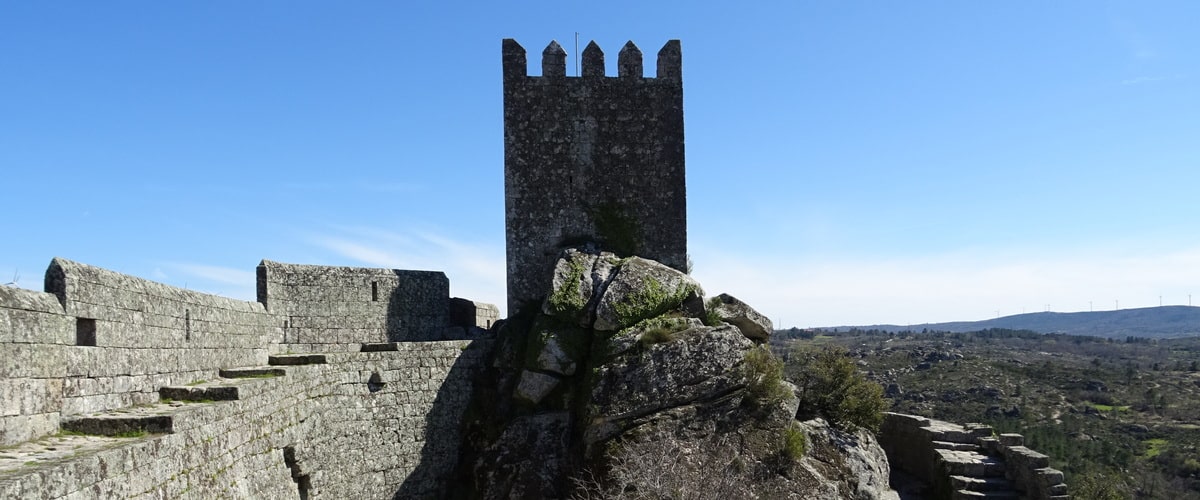
On the ground of the indoor enclosure, there is the cistern that provided water, needed in case of siege

Betrayal Door- Placed in a barely visible spot, they allowed reinforcements to arrive discreetly, or in the last case, the residents to flee
Old Town Hall and Jail – It is located in Largo do Pelourinho and its construction dates back to the 16th century. A 2-story building in which the lower floor, embedded in the wall, operated as the jail and on the upper floor, initially the Town Hall, and later the primary school
Pillory – With Manueline lines, it stands at the foot of the Castle. It sits on six steps.
Garden of the Ring – A small garden, next to the Pelourinho, with several carved stone pieces, among them an elephant and of course, a ring. The name Sortelha is derived from the Castilian word “sortija”, which means ring. This designation is associated with the game in which knights had to shoot arrows pass through the centre of a ring.
Parish Church – Built in the centre of the village, the Church of Nossa Senhora das Neves displays the inscription of the year 1573 on the door. It has five altars; the main altar displays gilded woodcarvings. The ceiling is mudéjar
Crafts – Handicraft pieces in “bracejo”, a green straw that can be crafted with the aid of raffia to make baskets, hats, bases and brooms.
Old Woman’s Head – A granitic formation worn down by wind and rain took on a curious shape similar to the face of an old woman.
Legend of the Endless Kiss – Legend has it that the daughter of the Mayor of Sortelha fell in love with the Moorish prince responsible for the siege of the Castle. Suspicious, the ever-vigilant mother followed her daughter. A witchcraft practitioner, as soon as the two lovers kissed, she cursed them, turning them into stone. Thus arose the curious cliffs of Sortelha, which are still known today as the Stones of the Eternal Kiss.
The Bell Tower is at the top of a hill in front of outside the town walls. It is an archaic construction accessed by steps, many of which are carved out of the rock.
Did you see the elephant statue? I wonder whats the story behind it.
Marialva
About Marialva
Marialva was already a village with some status during the Roman period.
In 1179, Mariala received the charter by D. Afonso Henriques and the privilege of being governed only by a lord – the king himself.
As with several villages in the region that prospered in the 13th century, D. Dinis permitted setting up a market in 1286.
The Historical Villages project has made it its purpose that all its villages have to not only to welcome visitors but they have to be livable. A good example of this is the undertaking of Casas do Côro, a boutique hotel, villas and spa that recovered many of Marialva’s houses. They maintained the trait and charm that characterizes these Beira villages while employing those who still live there.
Marialva is a place where you can savour the passage of time and its seasons. During early winter, the olive harvest from the old olive trees takes place. Late February will astound you with a burst of almond blossom, and September the wine harvest.
Marialva is an oasis of rest and tranquillity that awaits your visit.
What to visit in Marialva
Castle of Marialva- In a romantic style, it was built in the 12th or early 13th century, as part of the effort to defend the kingdom’s new frontiers
Keep – It has a rectangular plan and will have been added to the castle in the 13th century
The Guardian Angel Door to the Castle – The main access to the interior of the castle walls. There you will find a niche with the guardian angel as well as the measurements used at the time, carved out in the rock (rod, cubit and span)
Castle Wall – The wall itself was built following the topography of the land and its rocks
Pillory and Old town Hall – The pillory is 17th-century work, in Manueline style, it obeys one of the most general typologies of the time. It was a symbol of the towns judicial autonomy.
Behind, the old Town Hall that also served as a court. During the 19th and 20th century it was used as a primary school.
Santiago Church or Parish Church – Succeeding a medieval temple, the current building, dated 1585, results in a Mannerist style reconstruction
Capela de Misericórdia ou de Nosso Senhor dos Passos – Mannerist style, it has an outdoor pulpit to accommodate a more significant number of faithful. Its gilded altarpiece is exuberant. Connected to this building is the cemetery of Marialva
Formerly a pilgrim route, Marialva still celebrates the annual Santiago fair on the Apostle’s Day (July 25).
Capela Nossa Senhora de Lourdes and Cross – Behind the 15th century cross, the Nossa Senhora de Lourdes Chapel. This temple belonged to S. João Baptista and was built in the 17th century.
What to taste
Casa de Côro produces its own wine.
Legend of Marialva, Goat Feet
Legend has it that Maria Alva, a beautiful Moorish maiden who lived in the castle, captivated everyone who passed by. They swore vows of love, but she would only marry the one who offered her size made shoes. Many tried, but all failed. One day a horseman from another land commissioned the services of a shoemaker, who devised the following scheme. In essence, he convinced Maria Alva’s maid to spread flour on the floor, at the foot of the lady’s bed, to reveal the mark left by her feet. So it happened. To his surprise, the shoemaker, seeing the marks left in the flour, realized that Maria Alva was born with … goats feet. Despite knowing this, the knight lost in love handed the shoes made to Maria Alva. Distraught by shame, she threw herself to her death, from the castle tower, thus giving the name to the Village
Monsanto
About Monsanto
A unique village. Monsanto won the prize of the most Portuguese village, in 1938, for the authenticity of its culture
The village of Monsanto is embedded in the side of a tremendous steep rise. Getting to the top implies winding through narrow, steep streets, delineated by stone houses carved in rocks. In some cases, a single block of stone forms the roof, which is why it is said that the homes of Monsanto are “one tiled roof” houses
Monsanto became part of the Portuguese crown during the reign of D. Afonso Henriques and was donated to the Order of the Temple, in 1165. The Castle was built by Gualdim Pais, the grandmaster of the Order of the Temple in a high and inaccessible hill and was never conquered.
in 1308, D. Dinis entitled Monsanto its market
What to visit in Monsanto
Castle of Monsanto – The Order of the Templars designed the Castle according to the current model for small fortifications, consisting of a walled courtyard and a single door, in the middle of the wall. The keep in the highest zone to allow the shot over the bulwark. In 1815, the keep meanwhile converted into a magazine, exploded.
Betrayal Door – It is a hidden and often small door designed to allow furtive attacks on the enemy in case of siege.
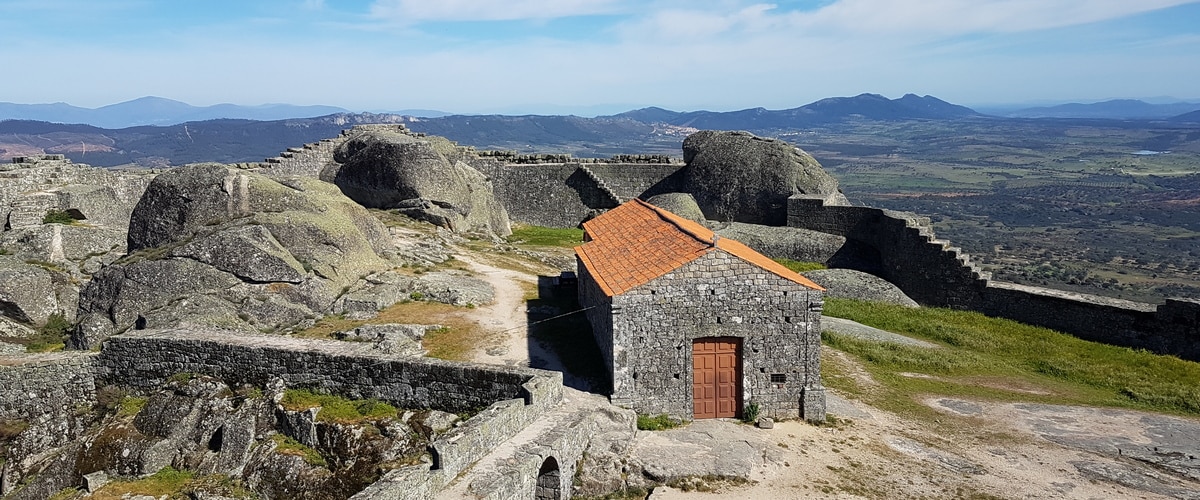
Church of S. Miguel and Village Ruins – The Castle of Monsanto was built on higher ground by the Order of the Templars. The rules of the Order imposed separation between the friars and the population. So the population occupied a more sheltered area, further down, where today the Church of S. Miguel is located
The Church of S. Miguel is a small temple with a single nave, in a romantic style.
Necropolis of São Miguel – Graves are excavated in the rock formation. Some graves are prior to the construction of the Chapel, others have been put inside the Chapel
Torre do Pião, although already in ruins, proudly stood overlooking the cluster of S. Miguel
Lucano Clock Tower – It was a defensive tower which offered a good field of view for the area to the west of the village. At the top is the replica of the silver rooster, a prize won in the contest “The most Portuguese Village” (1938).
Pillory – It stands in the main square of Monsanto
Furdas – Furdas, better known as pigsties. Due to public health reasons, they were brought together in one place. Consisting of a shelter, usually circular in shape, covered with earth and a door leading to a walled patio. As the pig represented a source of long-lasting food, its slaughter was an important domestic chore, giving rise to an annual family festive ritual
Cave – This shelter, formerly a pigsty, now a picturesque tourist spot, results from a gap at the base of several cliffs
Fernando Namora’s home – Fernando Namora was born on April 15, 1919, in Condeixa-a-Nova, in the district of Coimbra. He graduated in Medicine in 1942. However, it was as a writer that he became famous. In 1944, the profession took him to Monsanto, where he lived in a house that remains until today: a building dating from 1931, with a stone facade, as per the region’s architecture.
Parish Church of S. Salvador – It is at the entrance to Monsanto village and is of modest construction
Marafonas – These rag dolls are symbols of Monsanto. The frame is a wooden cross, wrapped in fabric with dresses on top. Popular wisdom says that this doll, without eyes, ears or mouth, should be placed under the marital bed to promote fertility and good luck and on top of the bed to ward off thunderstorms
What to taste
Bicas Olive Bread – Its flat shape denotes its Jewish roots. A typical bread from the Beira Baixa region, made with olive oil. You can purchase it at Loja Mais Portuguesa, founded in 1954, in Monsanto.
Pastel de Cereja – It is a regional speciality, a type of pastry pie made with cherries from Fundão
Legend of Monsanto
Legend has it that after a 7-year siege on Monsanto, and with little food left, the village chief’s daughter went up to the walls and shouted that she would not surrender because they still had a lot of food. As proof, she threw a heifer fed with the remaining wheat. Tired of waiting so long and facing the possibility of the siege continuing indefinitely, the enemy chief ordered the troops to withdraw
On May 3, Santa Cruz Day, from the top of the Castle, a pot of flowers are thrown, recreating this legend.
We hope you enjoyed your visit to the most Portuguese village.
Idanha a Velha
About Idanha a Velha
In remote times, Idanha played a fundamental role in the Roman occupation of the Iberian Peninsula. In the Suevic and Visigothic period, it was the seat of a bishopric and functioned as a religious pole until the Muslim occupation. The episcopal seat was not transferred to Guarda until 1199. When integrated in the kingdom of Portugal, it was handed over to the Order of the Templars
The richness of its archaeological heritage is explained by the overlapping of occupations. Its isolation allowed to preserve architectural traces and identities
The calm and peaceful pace of the historic village of Idanha a Velha leads us to savor the moment, rest in the shade of the big mulberry tree and exchange 2 words with its inhabitants. Follow the wild flight of the swallows and count the storks’ nests installed in the somewhat eccentric house of the Morocco family.
Idanha-a-Velha is a testimony of time, in which everything has its time
What to visit in Idanha a Velha
Cathedral – Santa Maria Church – Rectangular in plan, with 2 orthogonal axes. Most of the current church corresponds to the 16th century. This date is validated by the inscription with the year 1593.
In the 19th century it lost its cult function and was transformed into a cemetery.
Ruins of the Bishop’s Palace – There is no certainty about the nature of these ruins that surround the Cathedral. They may be part of the episcopal palace or later period dwellings, although still medieval
Baptistry – Paleocristan, from the 6th century it is the oldest in the Iberian Peninsula
Roman and Visigothic Records – Archaeological excavations reveal the presence of Romans and Visigoths. A rare coin from King Rodrigo is amongst one of the most impressive treasure found
In an epigraph dated 16 BC, it refers that Quintus Tallius, a citizen of Emerita Augusta, gave the Igeditans a watch. According to the sundial legend, the intention was to prevent them from continuing to arrive late for work.
Olive Press – It dates back to the 19th century and worked with animal strength. Composed of a granite basin for grinding, tanks to store the olives, presses, a groove and a decanting chamber
Egyptian epigraphic archive – The successive archaeological campaigns have produced one of the most impressive Portuguese epigraphic collections, gathered in this museological center
Pillory and Parish Church – The Parish Church has on its facade a door with a perfect round arch with a Tau Cross. The portal frame is decorated with geometric and vegetal elements.
Old Bridge – The Old Bridge that crosses the Ponsul River is of Roman origin but with several medieval and modern reforms. Through this bridge made in granite stonework passed the road that connected Mérida to Braga.
Chapel of S. Dâmaso – According to local knowledge, the chapel of S Dâmaso was built in the place where his patron, a Pope of Hispanic origin, was born in the 4th century
Stones on the Ponsul River – The crossing of the watercourse of the Ponsul River was done by a system of blocks of stone set vertically in the river course, allowing a person to overcome the water and the current, by jumping from block to block until the opposite margin
Adufe – This musical instrument made of wood, leather and decorated with colorful ribbons can be heard in the streets of Idanha-a-Velha
What to taste
Casqueiro Bread – There are those who still cook this bread in the community oven of Idanha-a-Velha. A local bread made by using the “mother” dough, without industrial yeast. The bread made this way is preserved for longer. Of the days dough, a part is set aside, “the crescent” to be incorporated in the next batch of dough to be made, and so forth
Linhares da Beira
About Linhares da Beira
The village of Linhares da Beira was an important settlement in the defensive system of the Mondego basin and rearguard to the border fortifications.
Linhares da Beira was instrumental in the consolidation of the Portuguese kingdom in the 12th and 13th centuries, shielding against Spanish and Muslim attacks. In fact, the half-moon on its coat of arms is associated with a victory over the Knights of the Crescent, while the five stars evoke the night of 1189 when Rodrigo Mendes, the mayor of Linhares da Beira, came to the defence of his brother Gonçalo, mayor of Celorico, whose land was surrounded by the Castilians, achieving a resounding victory over the enemy neighbours, which was soon celebrated with the construction of a chapel.
Located on the northwest slope of Serra da Estrela, at 820 meters of altitude, the village of Linhares da Beira is ideal for paragliding. A charismatic village in which the winding streets between rock formations and granite houses bear witness to a unique legacy.
What to visit in Linhares da Beira
Castle of Linhares da Beira – Built during the reign of D. Dinis, the Castle consists of a fortress and two towers, one of which still houses a 17th-century mechanical clock with stone pendulums.
The isolated donjon inside the fortified enclosure features a “matacães”, a balcony with openings on the floor allowing to shoot the enemy from above, protecting the access through the main door
Built upon rocky outcrops, the castle wall follows the morphology of the terrain.
Church of Nossa Senhora da Assunção – Of romantic origin, it dates from the 12th century. It was remodelled by order of D. João II, and dedicated to Nossa Senhora da Assunção
Forum – This unusual stone structure was the meeting place of “The Good Men” of Linhares. Here, before the Town Hall was built, was where the wise elders assembled to discuss administrative, legislative and judicial matters, based on what was specified in the charter.
Old Town Hall and Pillory – Two-storey building, decorated with the coat of arms of D. Maria (1777-1816)]. In medieval times it was also used as a Jail, as proven by the grid on the lower left window.
Facing it, the pillory.
Ti Amélia Grocery Store – A Small grocery store that sells regional products, such as the Queijo da Serra cheese, olive oil, chorizos and handicrafts. Ti Amélia’s daughter not only makes you feel at home but also shares with you the daily experiences of people of Linhares da Beira. The shepherds’ hard lives, how handicrafts and regional products are made and the everyday life of a village, whose population is ageing and the young ones leaving
What to taste
Try the only restaurant in the area, Cova da Loba, known for its generous wine cellar and tasting menus.
“Vestir a História” (Wearing History) by Carla Madeira is the name of the designer, who created a collection of slippers that portrays the legends of the Historical Villages
I hoped you enjoyed visiting this village as much as we have.
Belmonte
About Belmonte
The homeland of Pedro Álvares Cabral, the Portuguese navigator responsible for discovering Brazil
Belmonte was part of the defensive line that protected the Alto Côa. After the Treaty of Alcanizes in 1297, that established the Portuguese border, the Castle of Belmonte lost its strategic importance.
D. Afonso V donated the Castle of Belmonte to Fernão Cabral, to set up his residence there. Pedro Álvares Cabral is the mayor’s third son and was appointed by King D. Manuel as captain of the second fleet bound for India. Álvares Cabral discovered the lands of Brazil after a voyage of 43 days.
Belmonte was also the land chosen by a small group of Sephardic Jews after D Manuel enacted the law that ordered Portuguese Jews to convert to Christianity or be expelled from Portugal. They lived there for more than five centuries, and here they left their legacy
The Castle of Belmonte – From the original fortification remains the keep and part of the old palace known as Paço dos Cabrais. Around 1992, a modern open-air amphitheatre was built for art performances.
Castle Window – The Manueline style window confirms the castle’s conversion to the Cabrais residence
Cross – Located outside the castle, and it is a replica of the wooden cross of Pau Brasil that Pedro Álvares Cabral had erected when he celebrated the first mass in Brazil. It was offered by Juscelino de Oliveira, the Brazilian President in the 1950s
Near the Castle of Belmonte you will find two small chapels:
The Chapel of Santo António, probably from the 15th century, has on its facade the coat of arms of the Queiroz, Gouveia and Cabral families. Inside, the image of Santo António from the extinct Franciscan Convent of Nossa Senhora da Esperança in Belmonte.
The Calvary Chapel – Whose door is decorated with the instruments of the Passion of Christ (ladders, lance, vinegar pole, pincers, hammer and crown of thorns)
Santiago Church and Pantheon of Cabrais – The Santiago Church was built in the 13th century, on one of the pilgrimage paths to Santiago de Compostela. Decorated with centuries-old frescoes, one of which is Nossa Senhora da Esperança, the patron Saint of Belmonte and the Statue of Pietá.
Adjoining the Santiago church, the Pantheon of Cabrais
Discoveries Museum – Located in the Manor of Pedro Álvares Cabral, a modern and interactive space that pays homage and describes the epic journey of the Discovery of Brazil.
Ecomuseum of the Zêzere River – The exhibition follows the course of the Zêzere River, from the source to the mouth, detailing the various elements of fauna and flora that you may find in each river section
Jewish Museum – It recounts the Jewish community in Belmonte, addressing its history, religion and culture.
Olive Oil Museum – This museum seeks to show visitors the ancient techniques of olive oil production and the importance it had in the local economy.
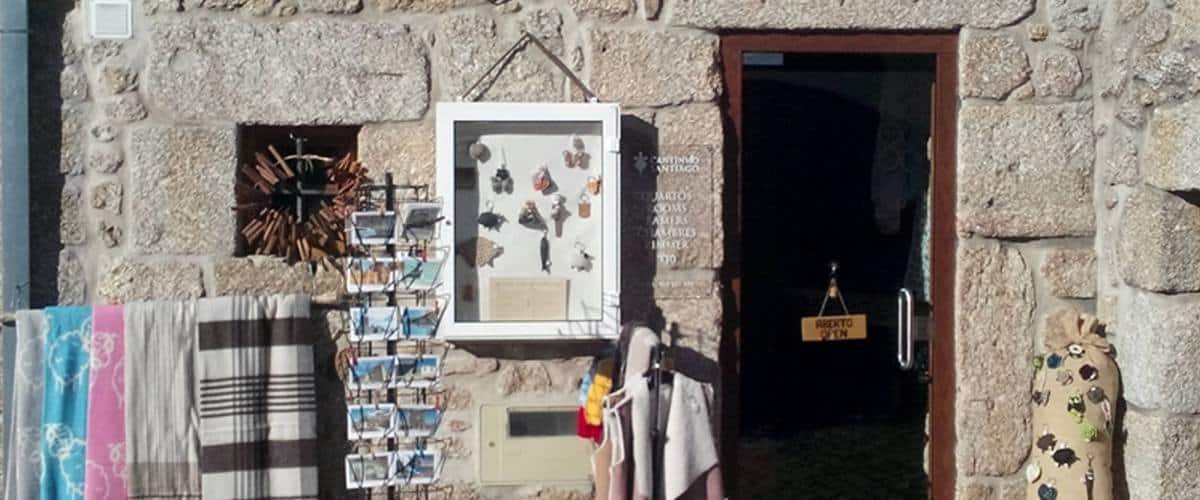
Burel is a sturdy type of cloth. To make the Burel, the wool is weaved on the loom, and then it goes to the press. A machine that beats and scalds the fabric so that it tightens, giving it greater resistance and making it waterproof.
The Burel was once used in clothing, especially in the typical shepherds’ cloaks, but have since been replaced by more practical and lightweight garments. It would have disappeared had it not been reinvented by creative artisans and designers, to be used in decorations and crafts.
You may find Burel articles in “The Cantinho de Santiago”, lovingly made by their owners
Legend of Belmonte
Legend has it that during the Moorish siege on Belmonte, the Lord of the Castle endured the sight of his daughter being put in an olive press and squeezed to death, rather than capitulate and hand over the castle
It is precisely the press that figures in the village’s coat of arms and in the Church of Santiago
Coat of Arms of the Cabral Family – The story behind the goats in the coat of arms of the Cabral family
Rumour has it that a shepherd from Serra da Estrela had a dream that instructed him to: “Go to Belém and there you will find your asset”. He decided to follow these instructions and went to Belém but when he got there he found nothing.
Discouraged, he returned home. On the way back, he met a muleteer and to whom he recapitulated his story. Surprised the muleteer replied that he too had dreamed of something similar; that in Belmonte, in the place where his yellow goat and her calf rested, he would find instead a goat and her kid made of gold
Upon reaching Belmonte, at the specified location, he found a golden goat and her kid. He thought he should offer one of these treasures to the king, but not knowing which he should offer: the goat or the kid, the shepherd, asked the king which one he preferred. The monarch said he wanted the kid, as its meat was always tender. When he saw that it was made of gold, the king hanged his mind and preferred the goat instead. So the shepherd offered him both, explaining how they had come into his possession.
Impressed, the king told him to go up to the mountain where he found the treasure, and from there to ride for a full day. That would be the amount of land he would offer the shepherd
So this is how the Cabral Family made their fortune and the reason why they have two goats on their coat of arms
Biography of Pedro Álvares Cabral
Pedro Álvares Cabral (1467-1520) was born in Belmonte. Third son of the Mayor Fernão Cabral and Isabel de Gouveia de Queirós. A noble family, famous in its fight against the Moors and Castilians.
At the age of 12 he was sent to the court of King Afonso V. He was educated in the humanities and trained to fight and take up arms. He was part of the personal guard of D. João II, perfected in cosmography and studied military techniques
He was chosen by D. Manuel I to command the armada that would make the second expedition to India, composed of ten ships and three caravels, the largest fleet until then sent to the East.
He sailed away from the African coast, intentionally or not, and on April 22, 1500, he saw what he initially thought was a large island and which he named Vera Cruz. Cabral sent Nicolau Coelho, a captain who had previously travelled with Vasco da Gama to India, to disembark and establish contact. He had discovered South America and claimed the lands that later constituted Brazil, for the kingdom of Portugal
Cabral and his fleet continued their trip to India but were surprised by a storm resulting in the loss of three ships and the caravel commanded by Bartolomeu Dias, the first European to round the Cape of Good Hope, in 1488
Determined, Cabral pursued his journey to the East, where, after overcoming some difficulties, he managed to establish a trading post. However, Muslim Arabs and Hindu Indians, in fear of of losing their commercial monopoly, attacked the Portuguese by surprise.
The Portuguese were outraged by this attack that led to the death of their companions and counter- attacked 10 Arab merchant ships anchored in the port. They killed about 600 Arab crew members. Establishing that any betrayal should be punished so decisively that the Portuguese would be feared and respected in the future.
From the accounts of Vasco da Gama’s trip to India, King Manuel I knew of and so informed Cabral about another port, south of Calicut, Cochin, where trade relations could also be established.
The Cochin ruler was anxious to achieve independence from Calicut, and the Portuguese were willing to exploit the Indian disunity. So a very beneficial agreement was established resulting in a new trading post for the Portuguese crown in Cochin
Cabral arrived in Portugal on July 21, 1501, with the other ships arriving during the following days. In all, two ships returned empty, five were fully loaded, and six were lost. A very lucrative expedition for the Portuguese crown.
Piódão
About Piódão
Piódão, also known as the crib village, insists on remaining hidden and was a hiding place for many
Lodged among the terraces that ascend the Serra do Açor, this medieval village blends harmoniously with nature with its schist houses, slate roofs and bright blue shutters. The isolation, due to difficult accesses, voted Piodão a strategic refuge for outlaws such as João Brandão, Terror of the Beiras and Zé do Telhado and the murderer of Inês de Castro, Diogo Lopes Pacheco
The first reference to Piodão, as a parish, dates from 1676. On an application requesting permission from the Bishop of Coimbra to build a church there. In the 19th century, Canon Manuel Fernandes Nogueira founded a seminar for boys here, giving visibility to the village.
To visit the village is to walk through the winding streets and up the alleys between schist walls. Take a breath between terraces and let yourself be lulled by the sound of running water, coming from waterfalls or fountains. For hiking lovers, there are any number of routes to explore
What to visit in Piódão
Church of Nossa Senhora da Conceição – Built in the 17th century, it benefited from remodelling and conservation works in the 19th and 20th centuries. It is characterized by a Neo-Baroque pediment with cylindrical towers topped by a cone
Piódão Museum – The museum houses a permanent exhibition of artefacts and works of art showing the way of life of the village people
Chapel of S. Pedro – From the 16th century, it has a simple facade and a small bell tower. Inside the image of Saint Peter
Threshing floor – In small villages, it was usual to share farming utensils used in daily lives, such as ovens, threshing floors and irrigation systems. The Piodão threshing floor is located at the top of the village and was used to dry and thresh crops
What to taste
Pecados de Piódão (Sins of Piódão) – a bread made with sweet potatoes
Chanfana – As tradition dictates: the tripe is stuffed with rice and made with white wine
And this is the last of the 12 Historical Villages of Portugal. I hope you have enjoyed the tour and that this information may be of use on your next trip to Portugal
A little bit of Portuguese history
D. Dinis e D. Isabel de Aragão
D. Dinis (1291-1325) reigned during 46 years and died at the age of 63. Son of Beatriz de Castela and married to Isabel de Aragão, the Holy Queen, he was the father of many children, but only two legitimate ones.
Known as “The farmer”, he did a lot for the progress and prosperity of the country. In agriculture, he cleared land, dried up flooded areas, protected the land from the advancing beach sand, sowing the famous Leiria pine forest. He decreed that the nobles did not lose their nobility title because they were farmers since until then the nobles could only dedicate themselves to the career of arms, due to the necessity soldiers to fight the almost constant struggles happening at the time. He distributed the land so that it did not belong to just a few; he founded settlements, both along the coast and inland.
D. Dinis reformulated military architecture on a large scale, introduced innovative military tactics, making fortifications able not only to defend but also to attack.
In 1297, he celebrated the Treaties of Alcanizes, with the King of Castile, defining the current borders between the 2 Iberian countries, establishing the peace that was consolidated with the arranged marriages of the infants Constança and Afonso, sons of Dinis, with the king Fernando IV de Castela and Infanta Beatriz, sons of the Queen Regent, respectively.
He protected mining activities, promoted shipbuilding both for fishing (started tuna and whale fishing among us) and for international trade, and created the Portuguese navy. He implemented the fairs and founded the first university, first in Lisbon, but later transferred to Coimbra. D Dinis, who had received a superior education for the time, knew the importance of endowing his subjects with a higher level of culture and knowledge. It was also D. Dinis who introduced the texts in Portuguese, instead of Latin.
Due to his integrity and sense of justice, he intervened as a judge in disputes between the Peninsula kings. He contrived to get permission from the Pope to create the Order of Christ for Portugal, with the goods of the extinct Order of the Templars.
His alleged favouritism for one of his bastard children, Afonso Sanches, will overshadow the last days of his life. D. Afonso, legitimate son of D. Dins, revolts against his father. The country so entered into a Civil War. The battles between both had no worse outcome due to the interventions of D. Isabel de Aragão. D. Dinis and his son Afonso IV ended up making peace in 1324.
How to get there
Our itinerary to visit the Historical Villages
We visited the 11 historic villages over the course of 5 days. We left Piódão behind not only because we had already visited this village when we went to Serra da Estrela but also because it was too far from the place we chose to stay
We decided to leave Lisbon stopping along the way to visit Castelo Novo and arriving in time to settle in the local accommodation: Carya Tallaya – Country house, in Vale das Éguas. An excellent choice not only for its centrality, perfect for those who wanted to visit all the Historic Villages but also for its beauty and comfort
Our itinerary was
1st day – Lisbon – Castelo Novo – Vale das Éguas
2nd day – Sortelha – Belmonte
3rd day – Castelo Mendo – Almeida – Castelo Rodrigo
4th day – Marialva – Trancoso – Linhares da Beira
5th day – Monsanto – Idanha a Velha – Lisbon
Ambitious but the enthusiasm was so great that we do not want to leave any village behind.
Before starting on this adventure, we were unable to prioritize the villages to visit. They all had their history, unique characteristics and charms to uncover and therefore there was only one solution. Know them all.
Now, after exploring them, which one wouldn’t be worth visiting? None. Which enchanted me the most? I would choose Sortelha, not only because of the authentic journey through time and history, since they all provide a little of this but because of the village being so cared and well looked after; Linhares da Beira by its light. We got there at the end of the day and sunset was magical; Monsanto, its houses embedded in the rocks are extraordinary; Castelo Novo for the enthusiasm of the boy from the Tourist Office and the admirable work of the artisans who make the dolls, created by Ana Almeida, bringing the legends of these villages to life. Castelo Mendo for the sweet ladies who helped us discover Menda; and Trancoso, sorry I missed the Hydrangeas in flower
Click here to access the map with the 12 Hitorical Villages of Portugal
On the way
Almeida
Belmonte
Castelo Mendo
Castelo Novo
Castelo Rodrigo
Idanha a Velha
Linhares da Beira
Marialva,
Monsanto
Piódão
Sortelha
Trancoso
Your perfect accommodation in the Historical Villages
Our Suggestions

Carya Tallaya
There are four country houses located in Vale das Éguas, a few kilometers from Sabugal. T1 and T2 of great comfort and good taste. With great attention to detail that is reflected in the service provided and well-being of those who visit this space and who no longer want to leave
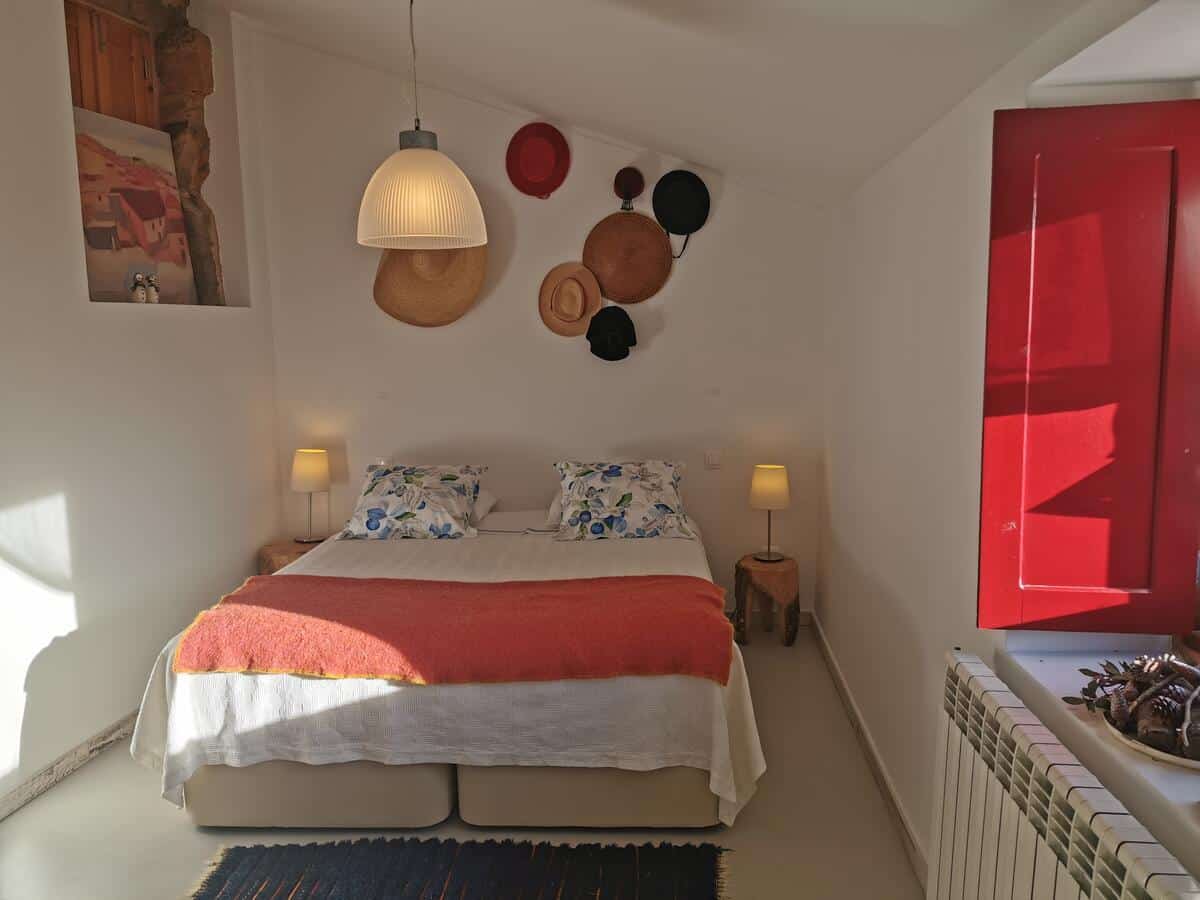
Casa da Cisterna | Castelo Rodrigo
Located in the centre of the medieval village of Castelo Rodrigo, this hotel offers 8 cosy rooms and 2 suites. Blending with the village’s architecture the Casa da Cisterna hotel extends to a courtyard with a phenomenal swimming pool with a valley view. It is an intimate hotel with a homely feel and a great breakfast

Pedra Nova | Castelo Novo
Located in Castelo Novo, this old family home has been renovated, offering comfortable rooms, a restaurant, a bar, an outdoor pool, hammocks scattered around the well-kept garden, a sauna and a Turkish bath. Everything you need to relax

Casas do Côro | Marialva
Casas do Coro has rooms, suites and villas with a unique décor, combining modern features with some rustic details and pieces. The unit has a large swimming pool and an Eco Friendly Concept Spa as well as well planned out activities and entertainment

 English
English




